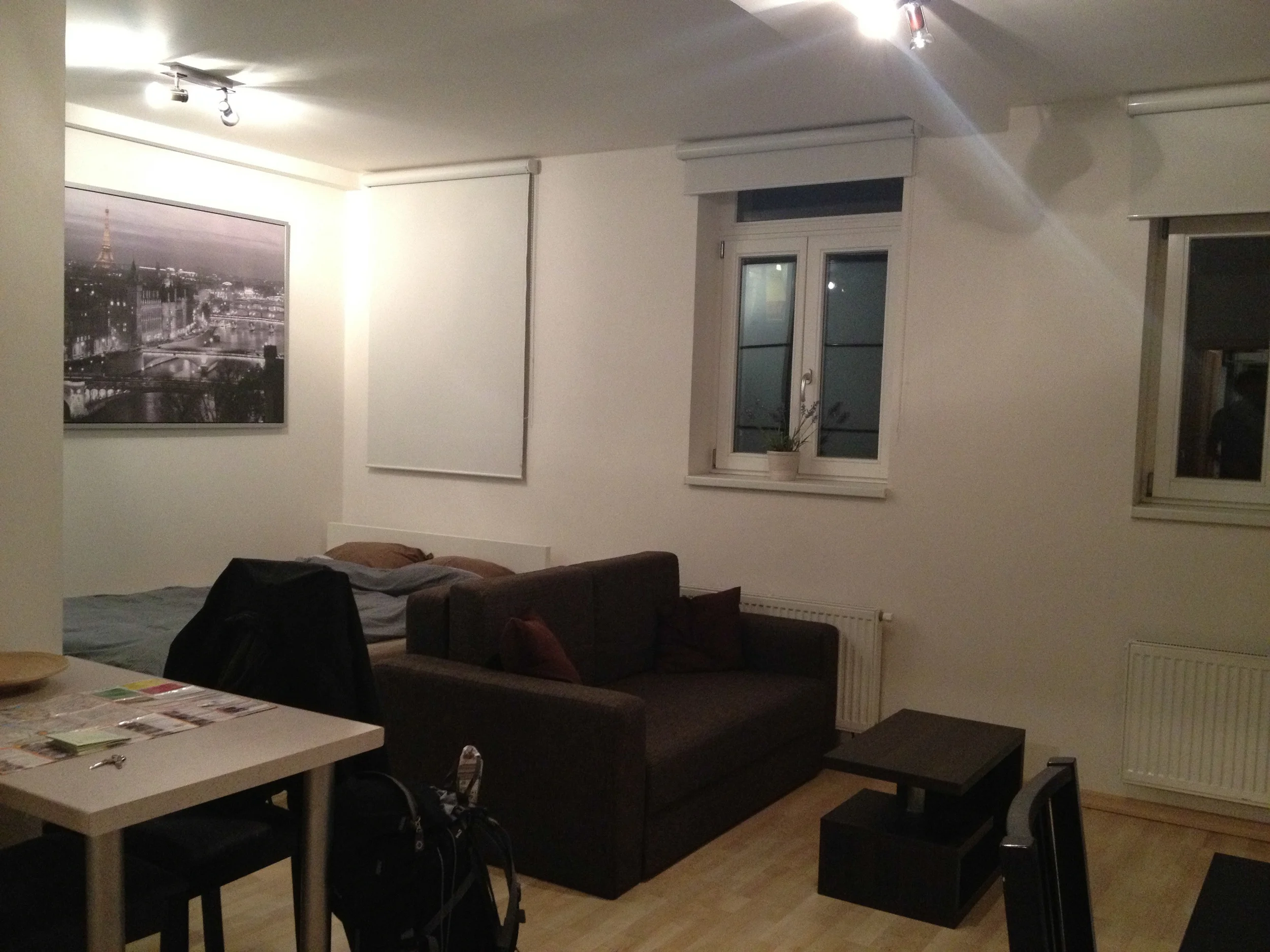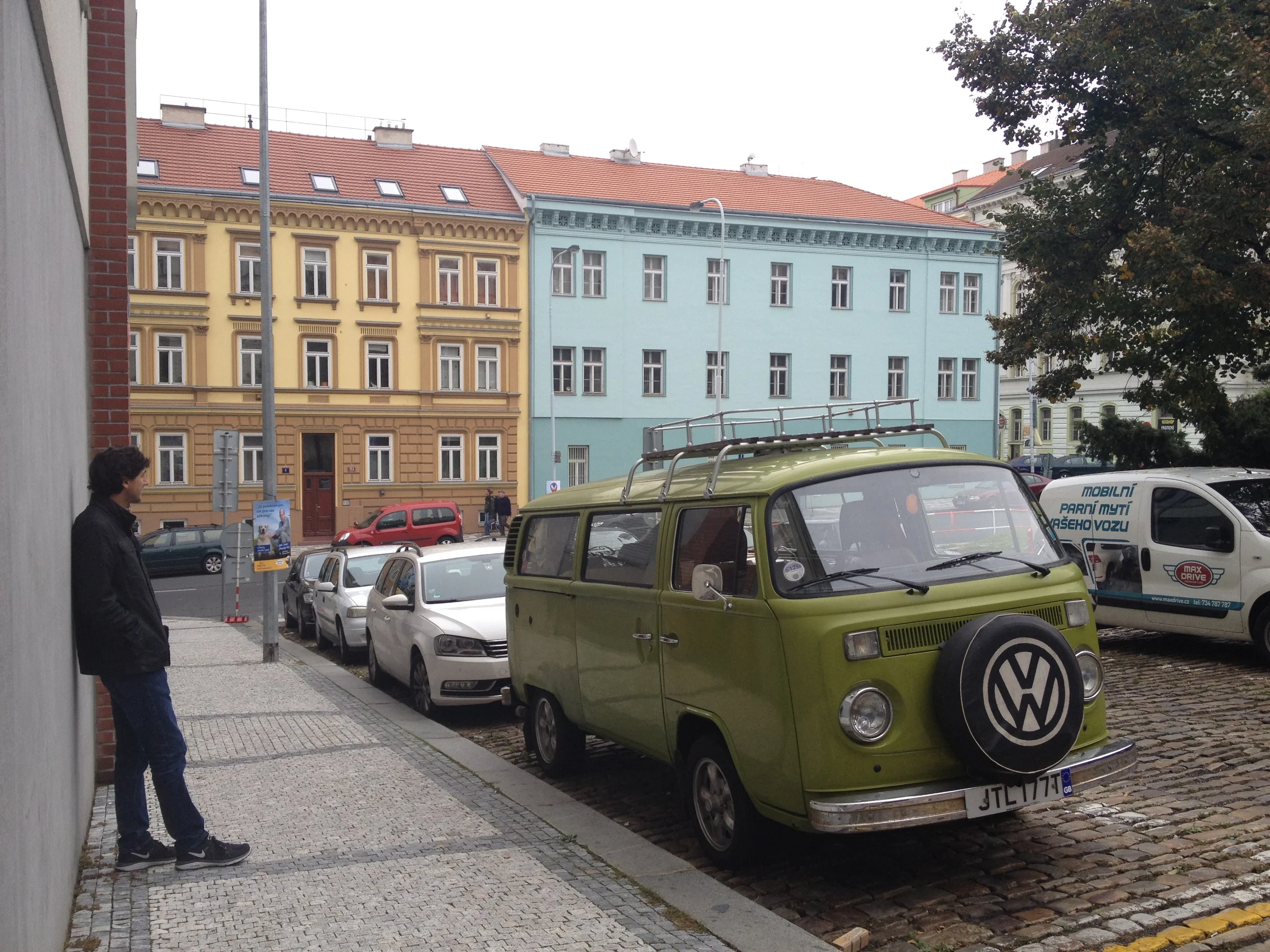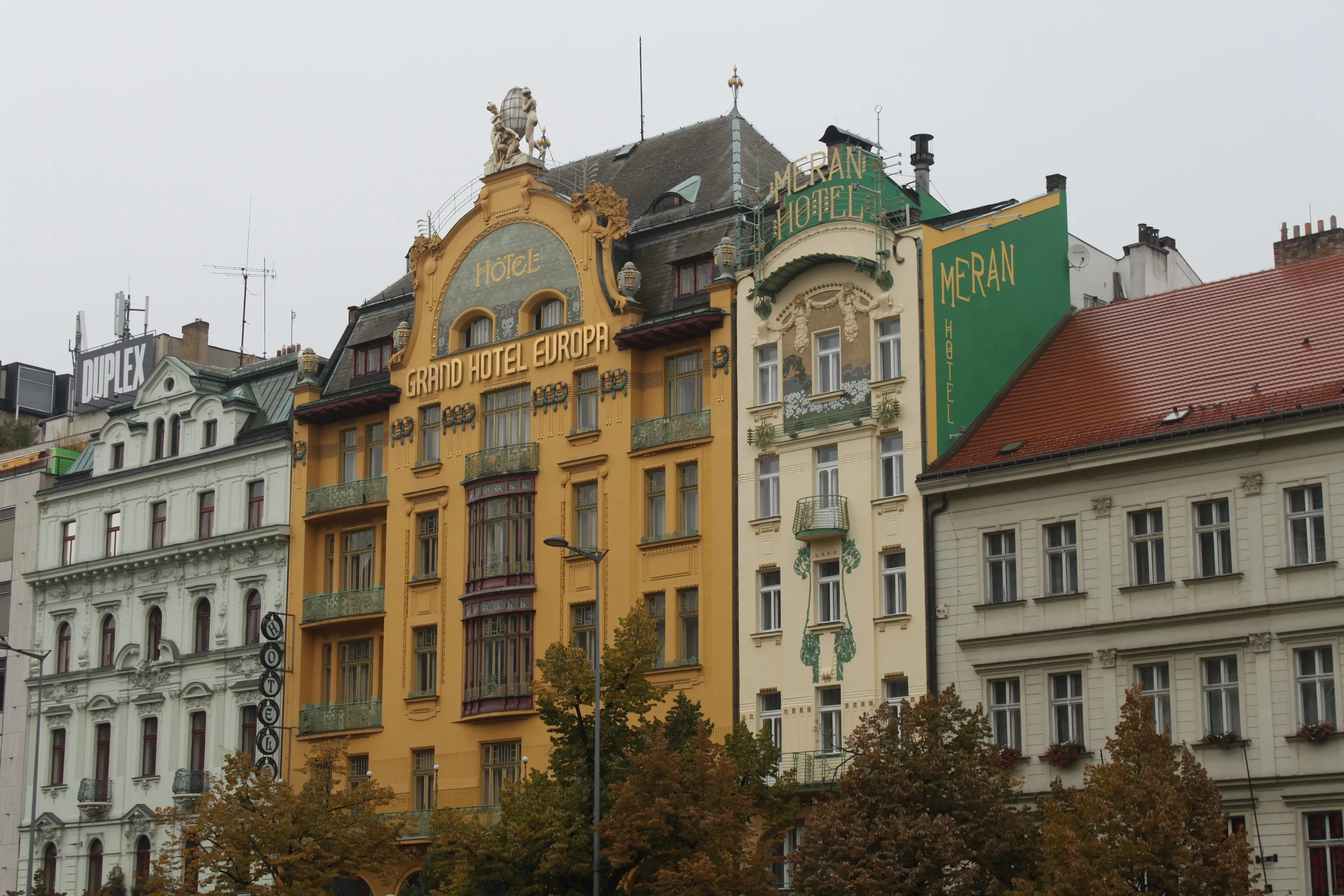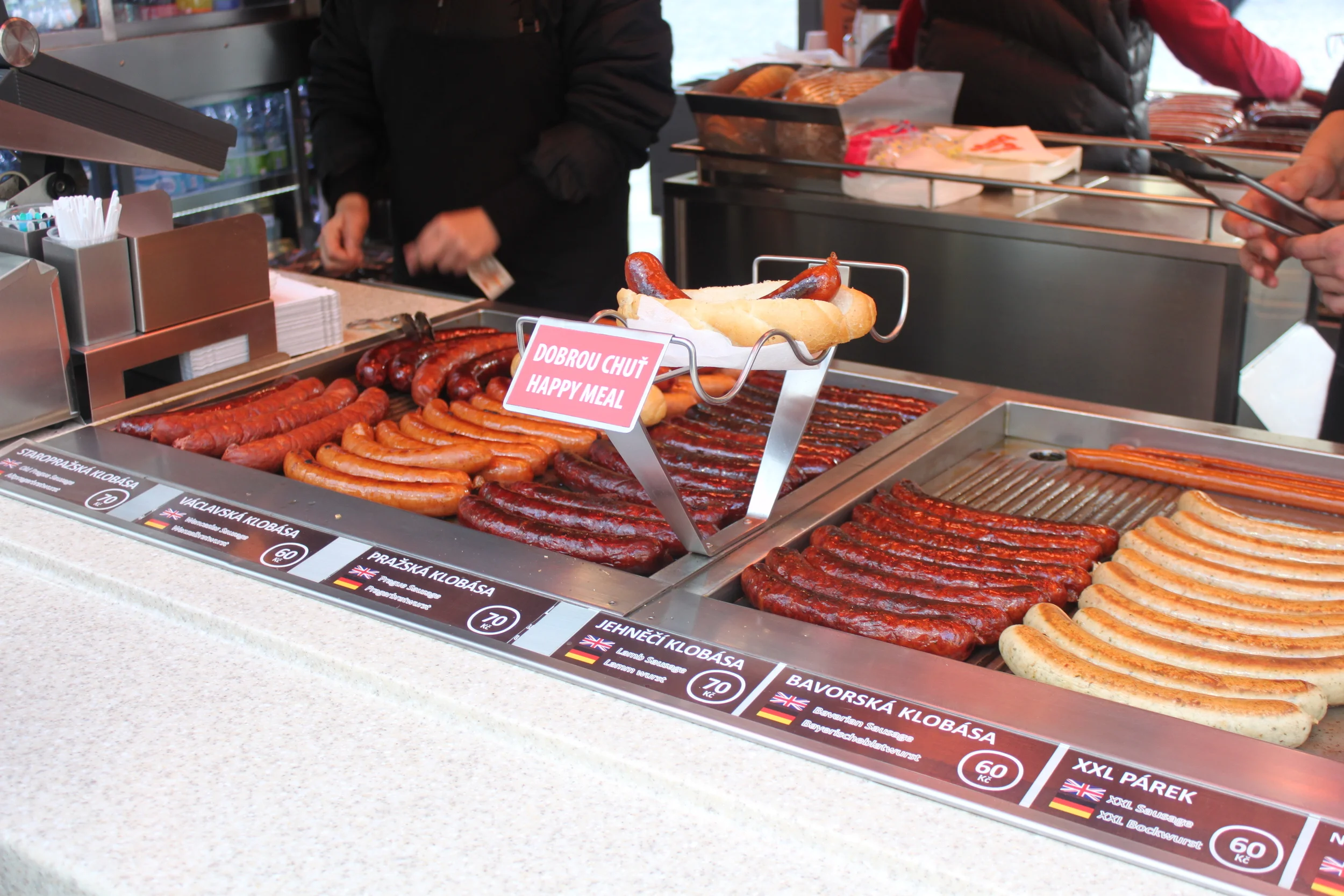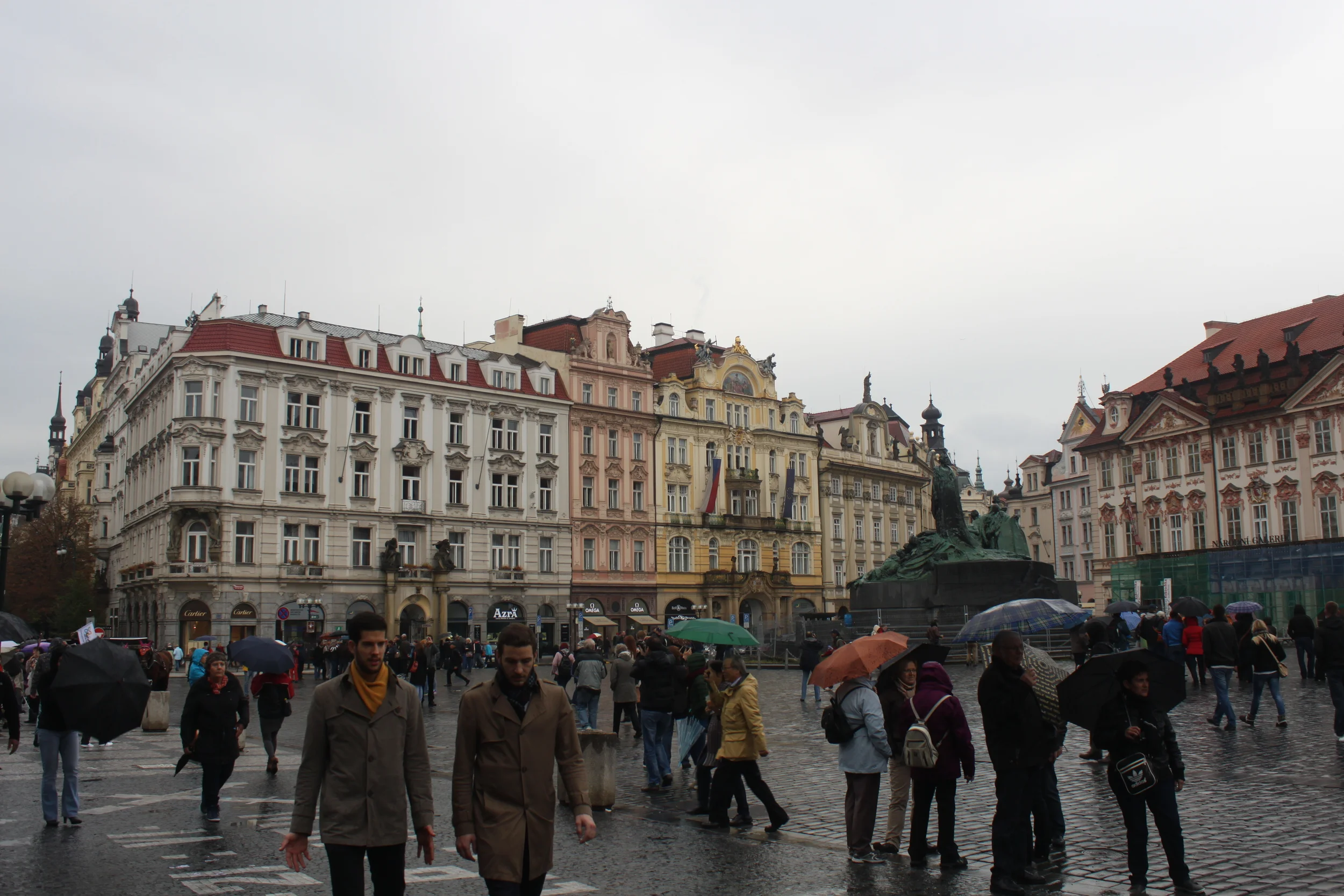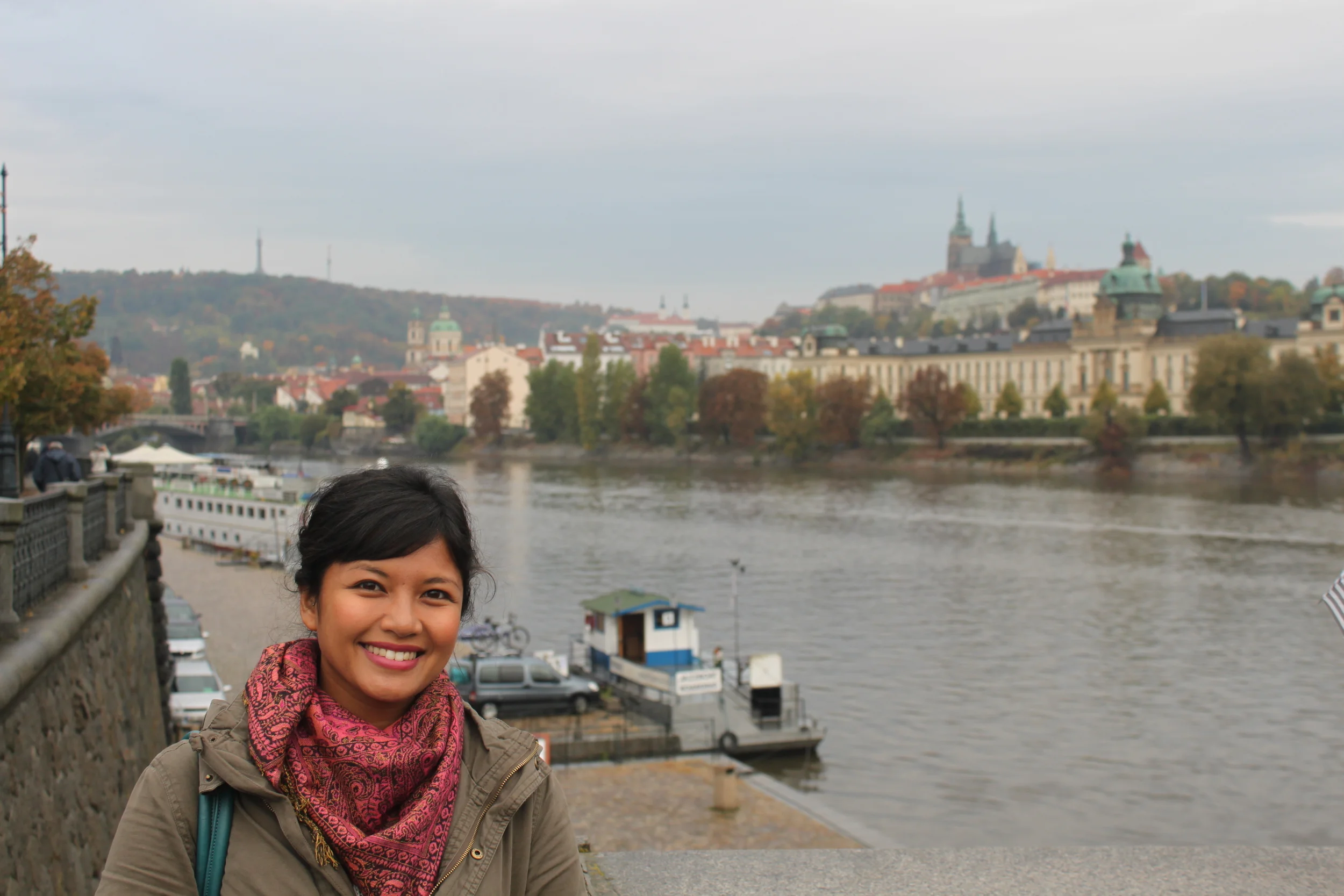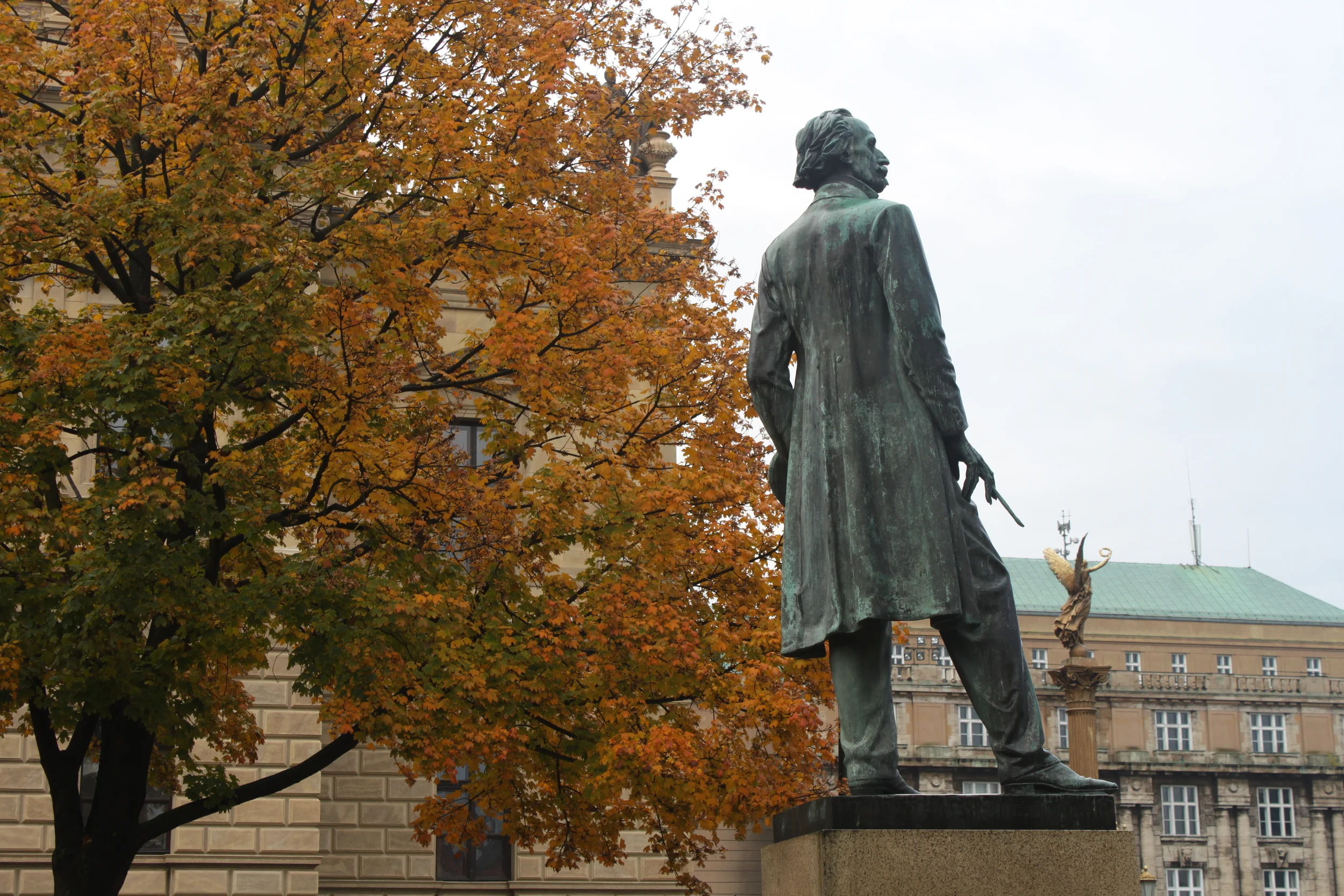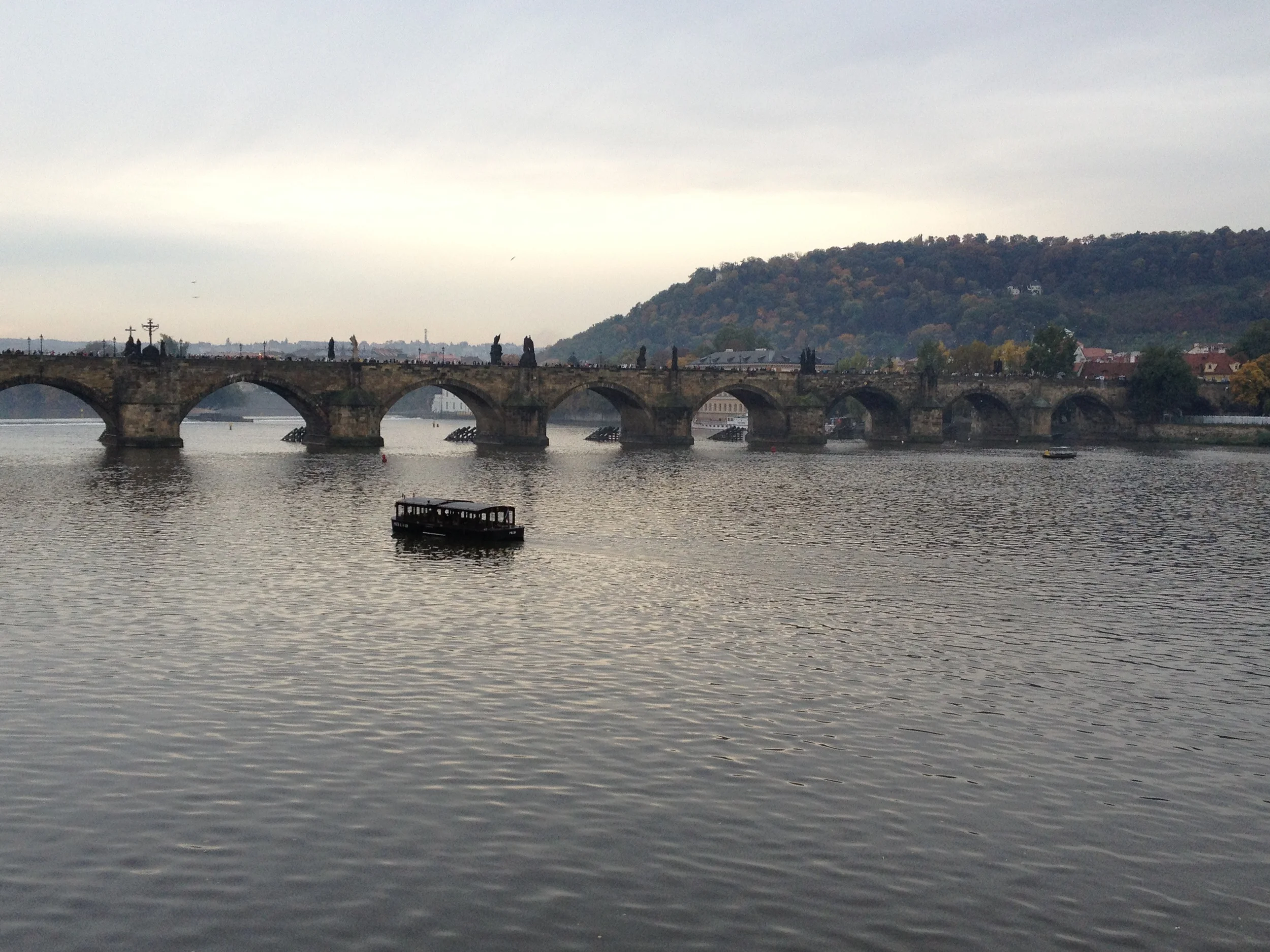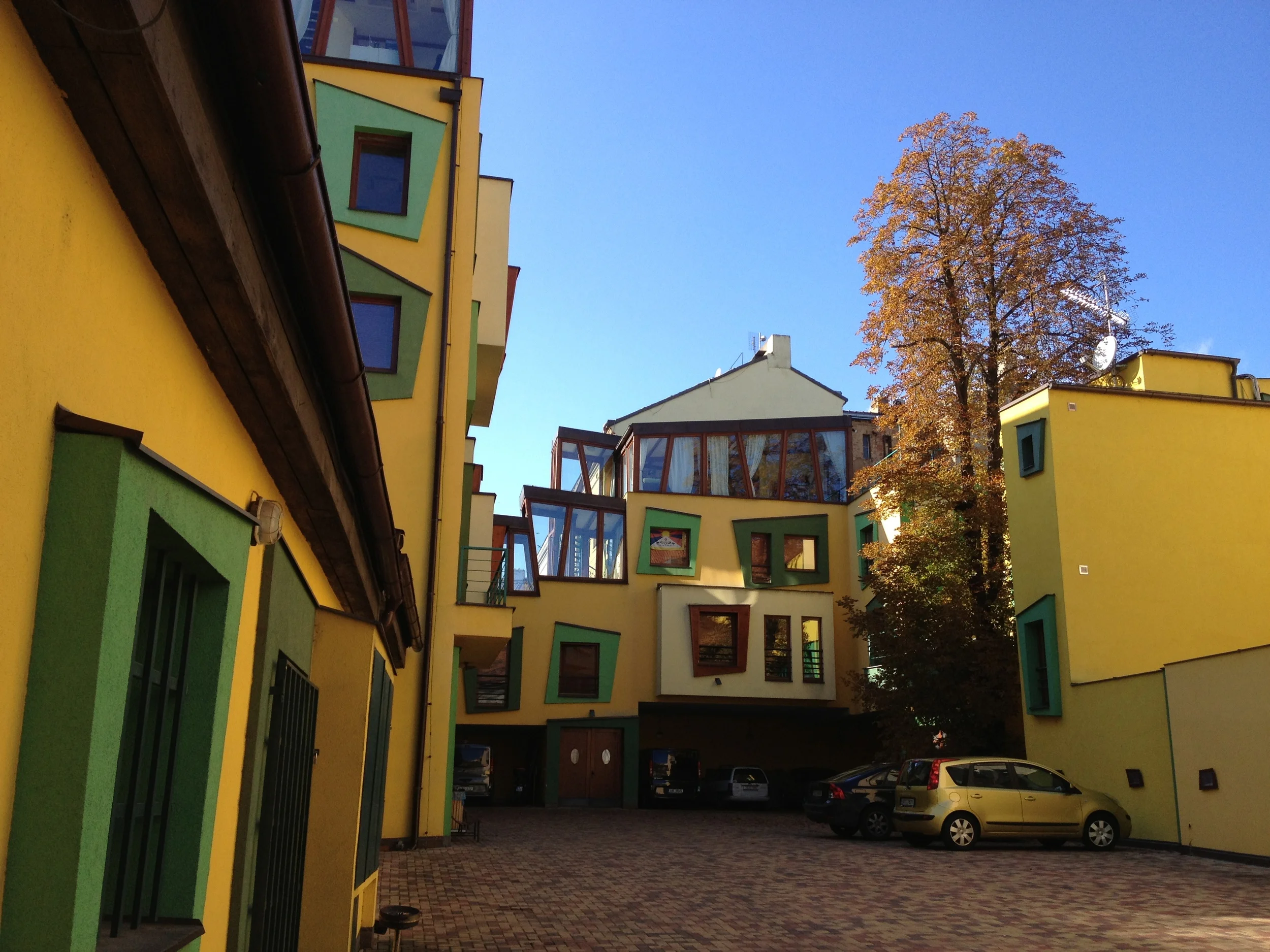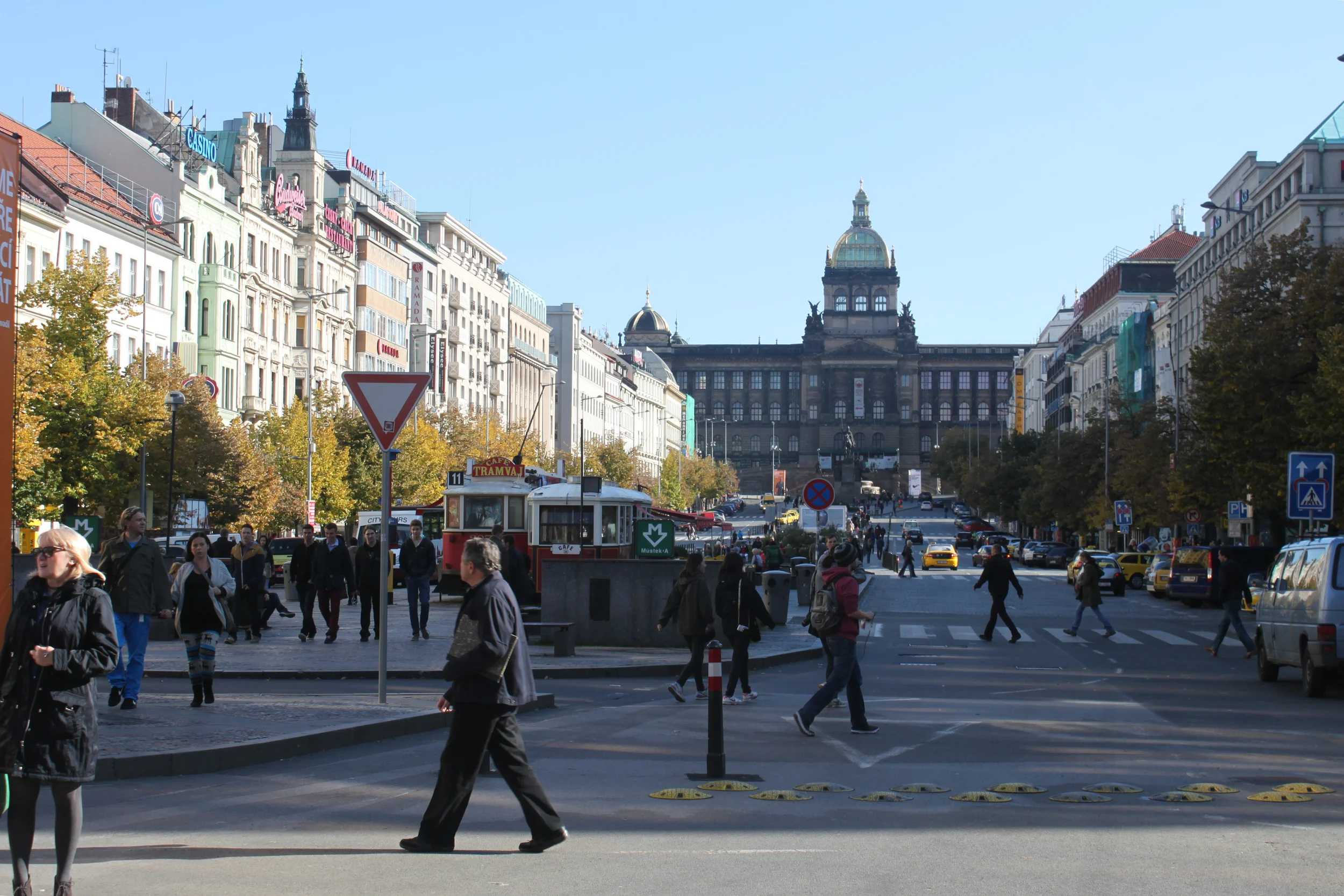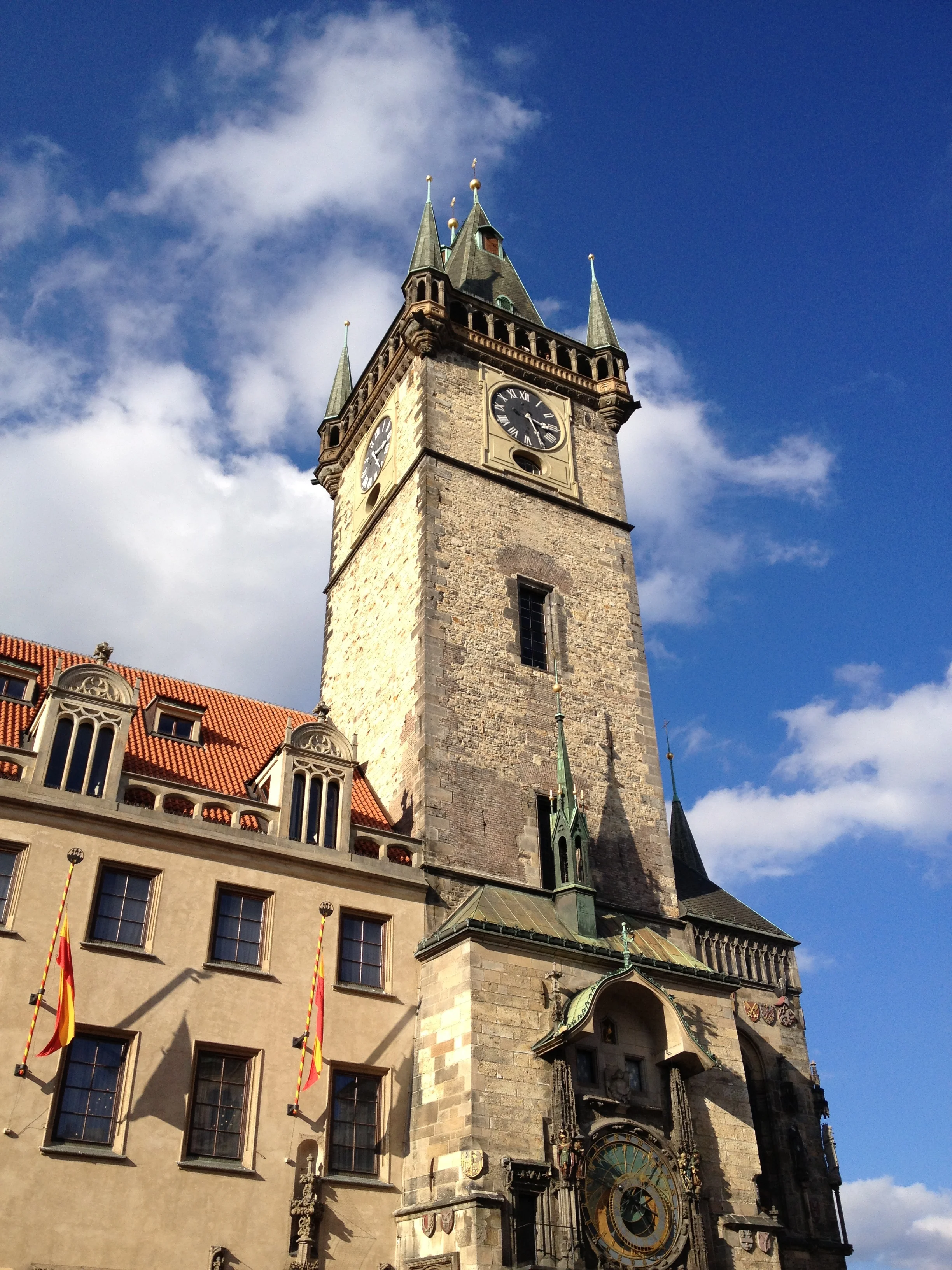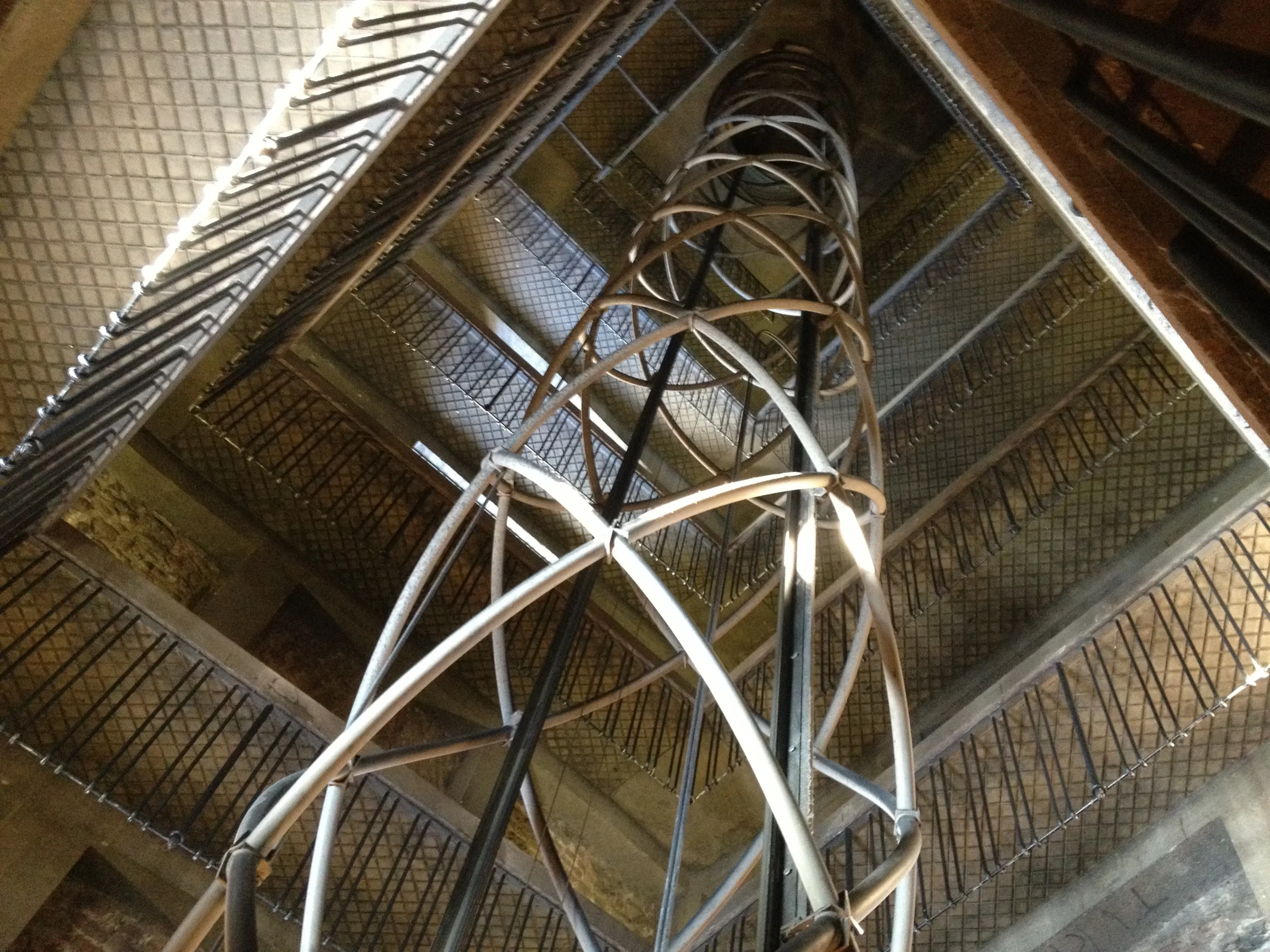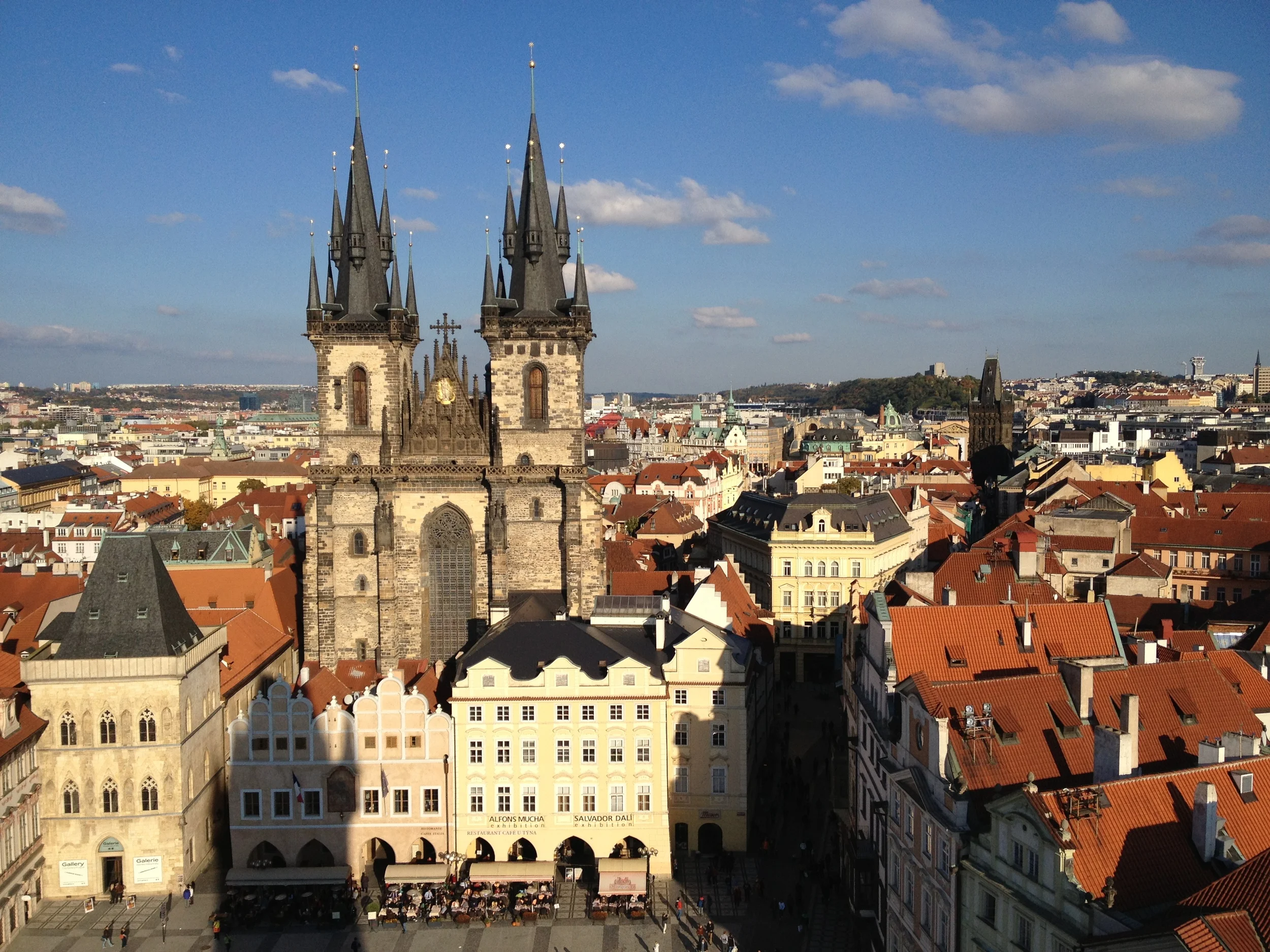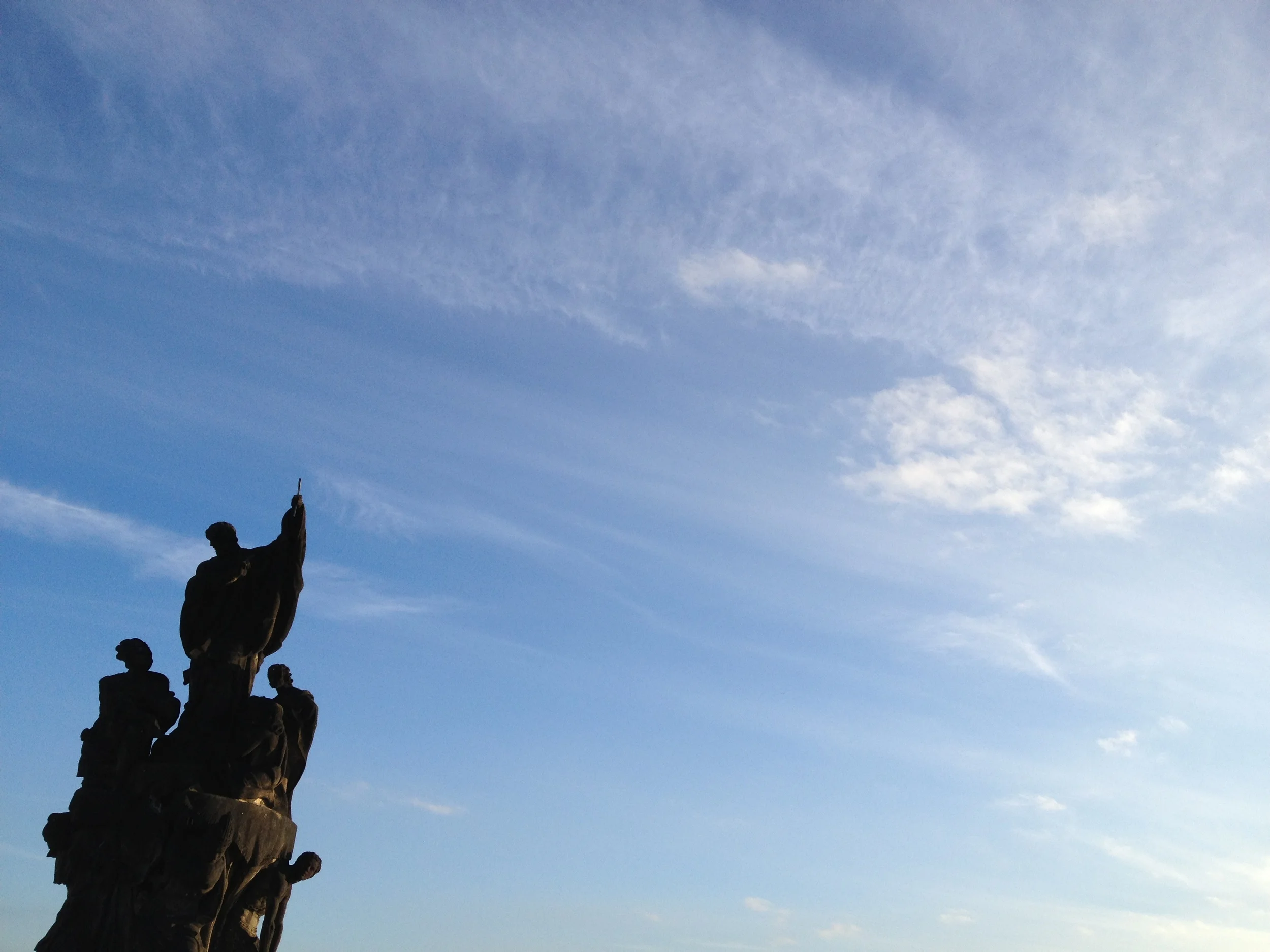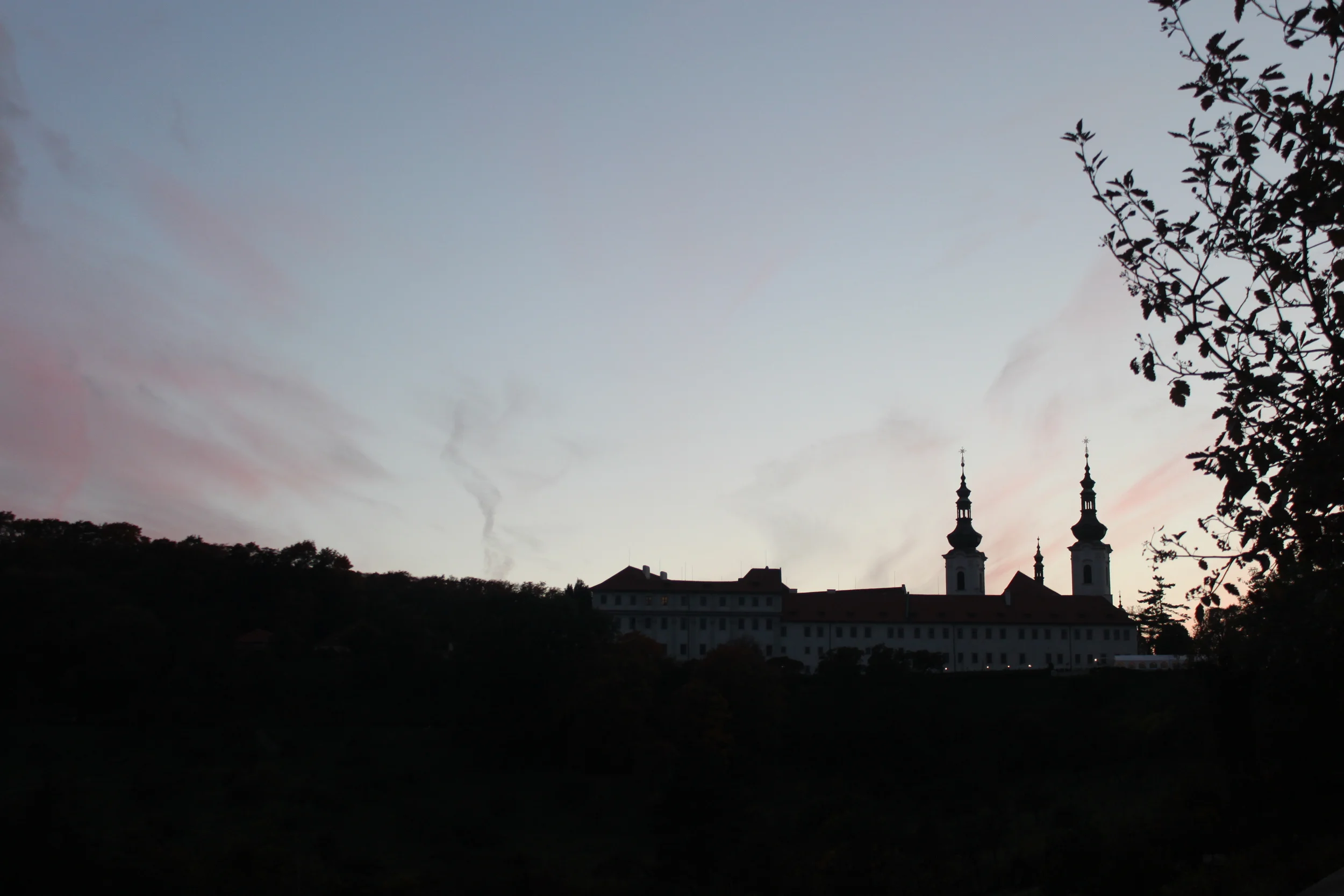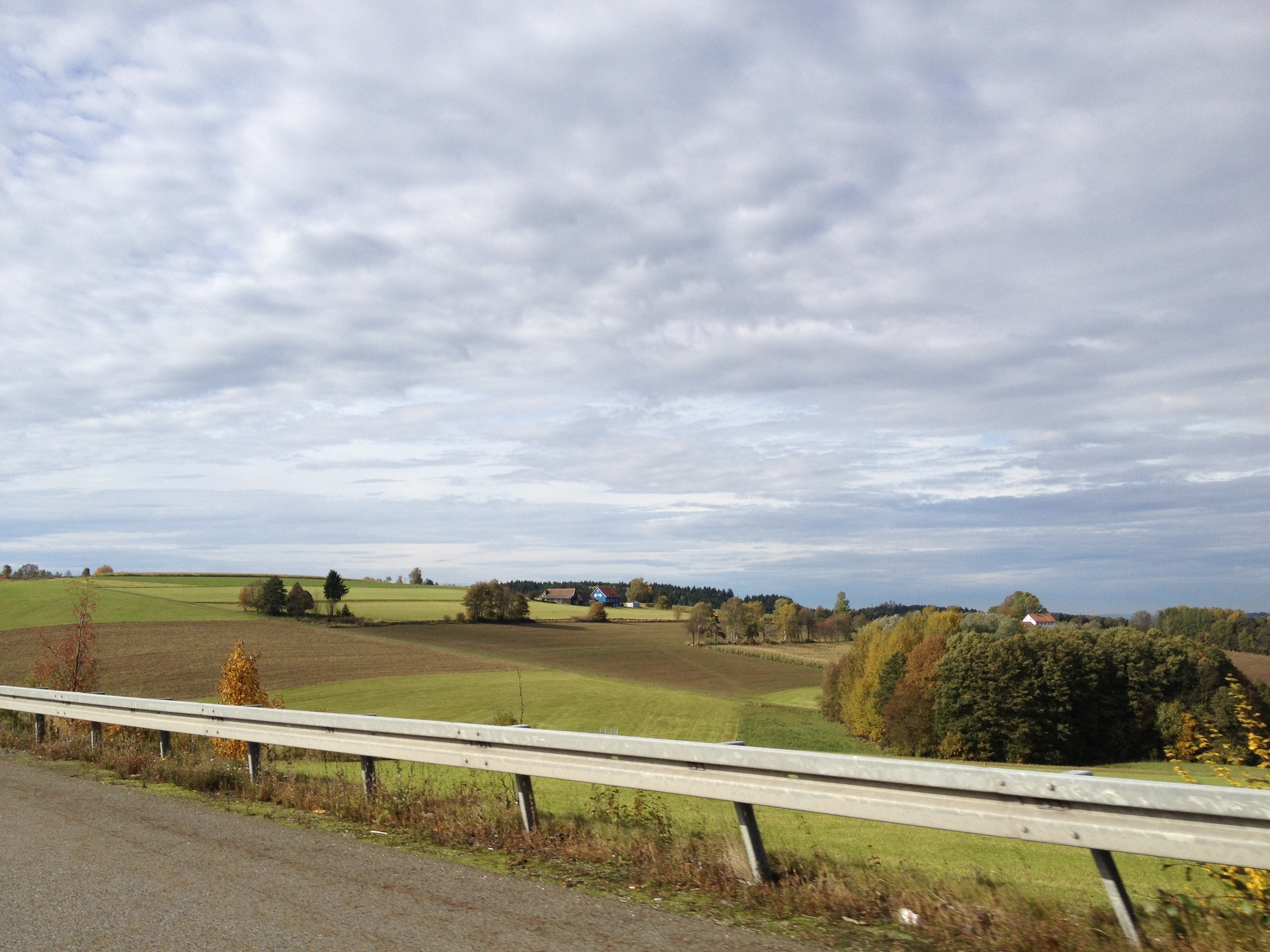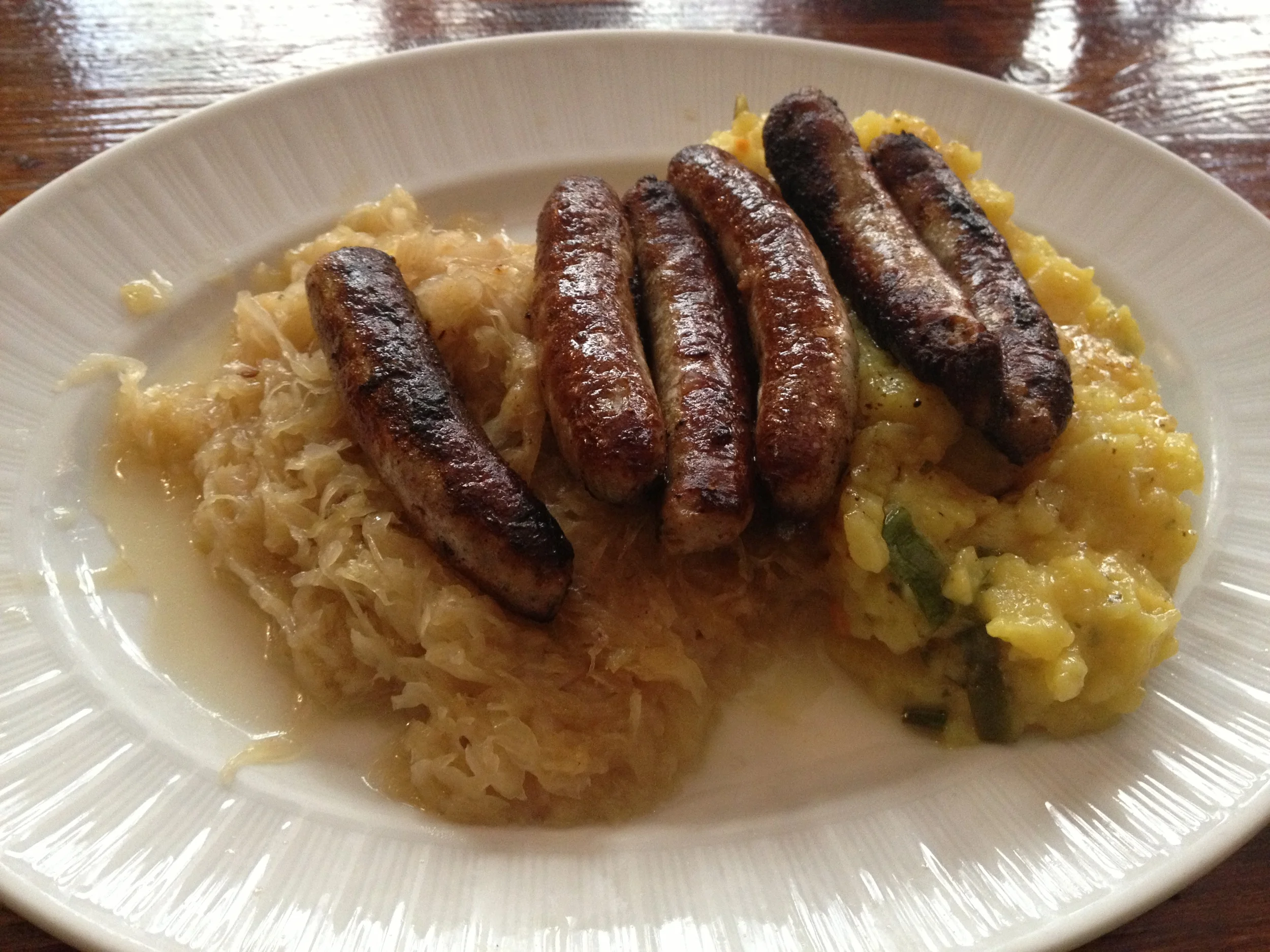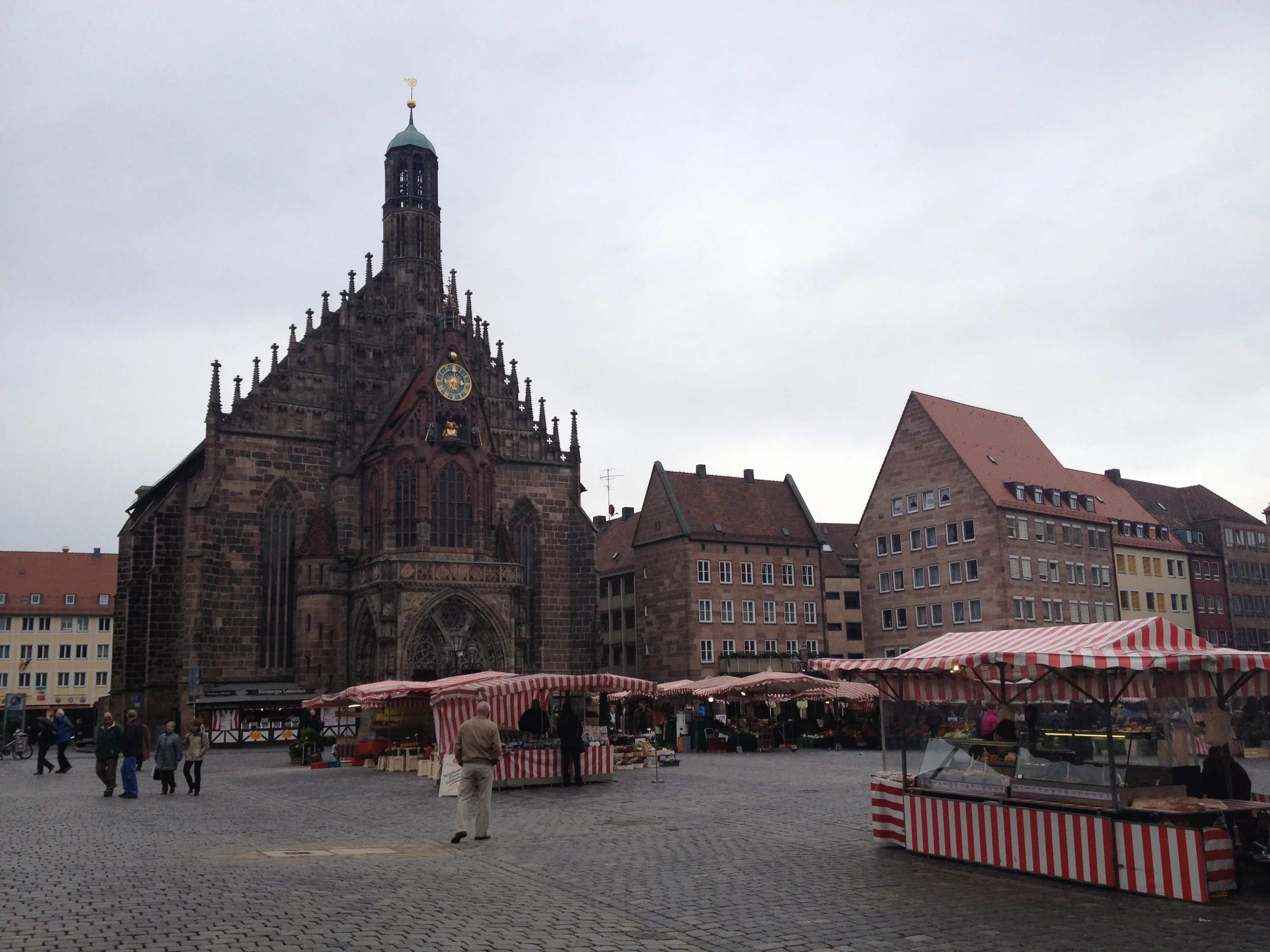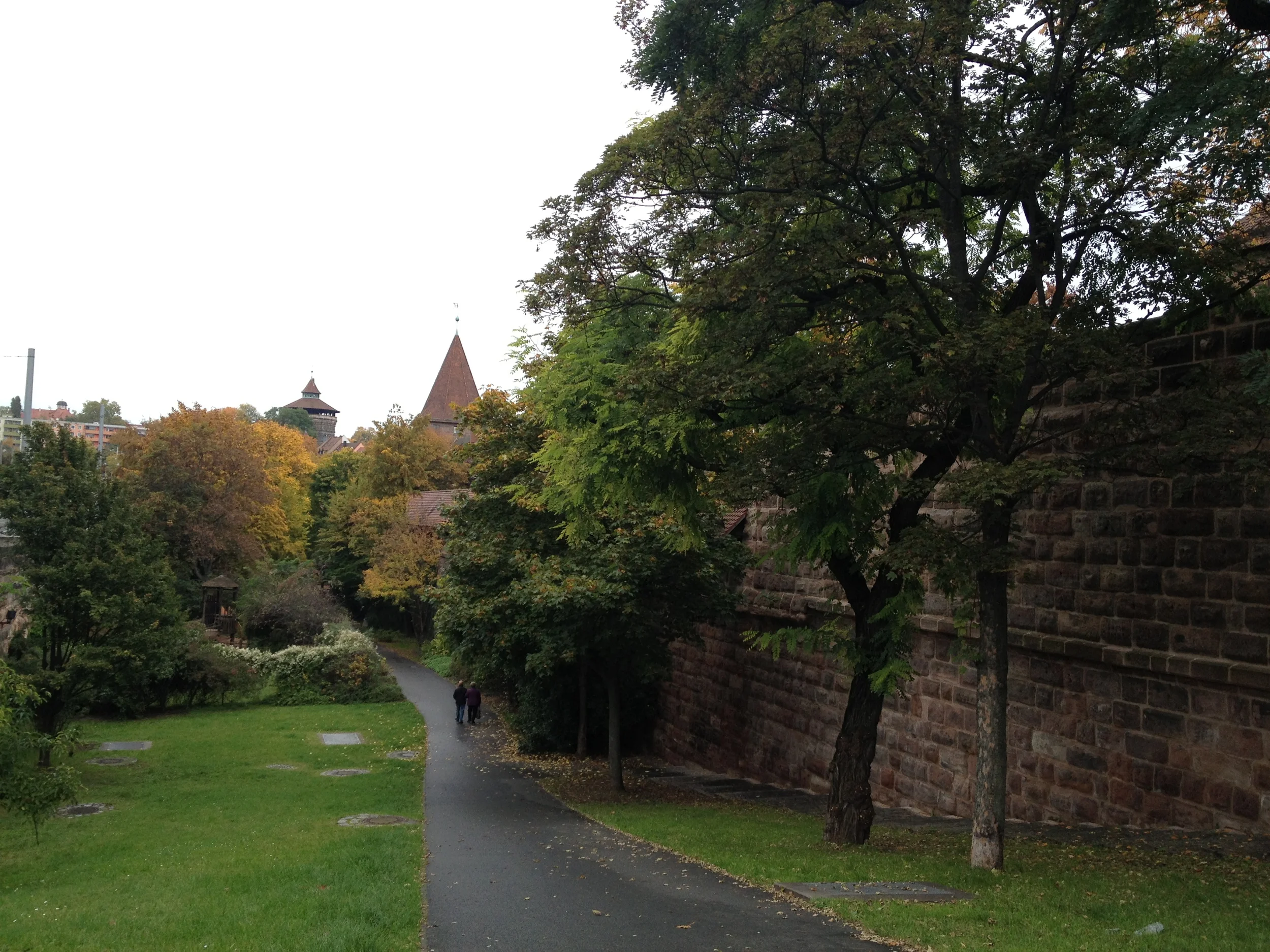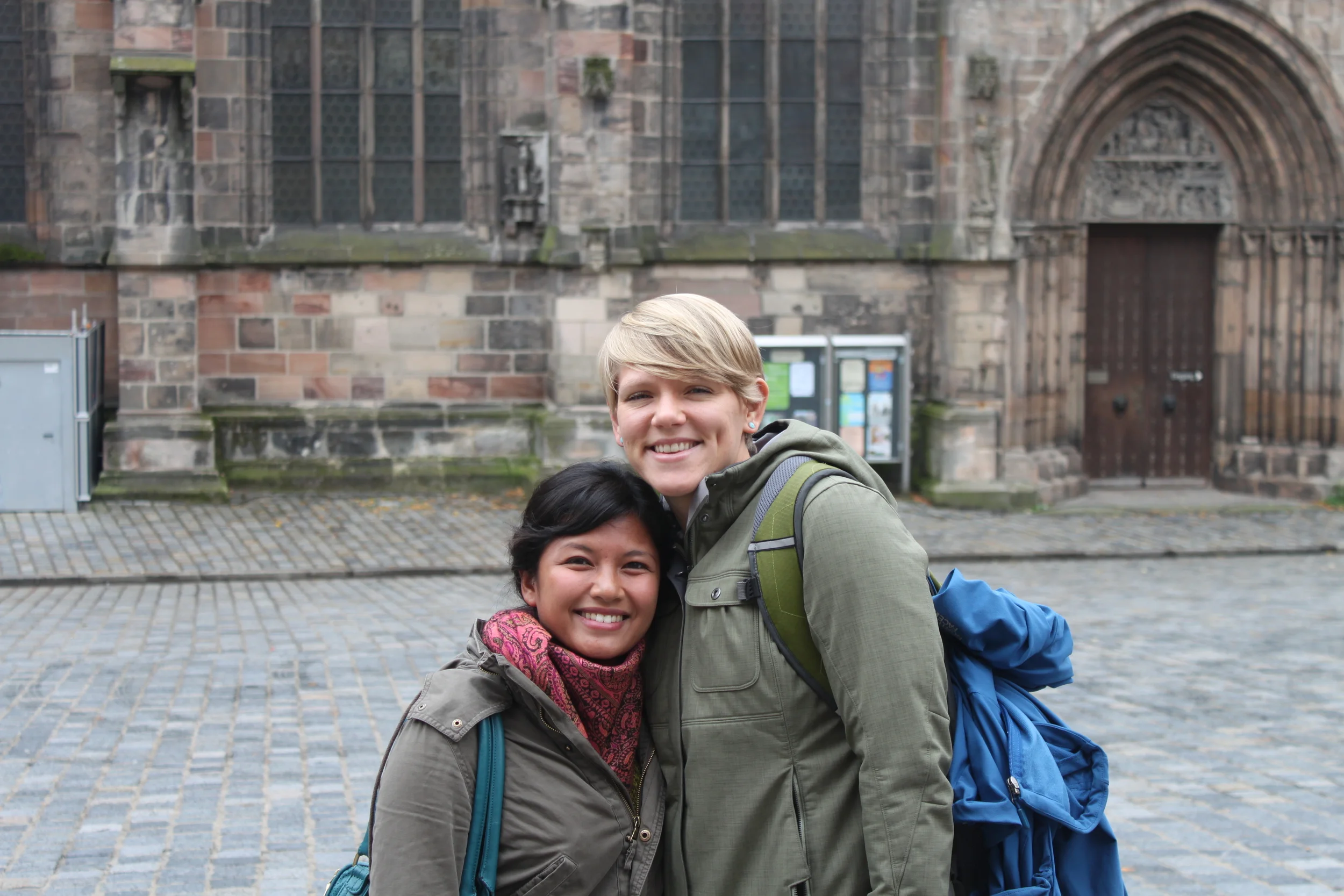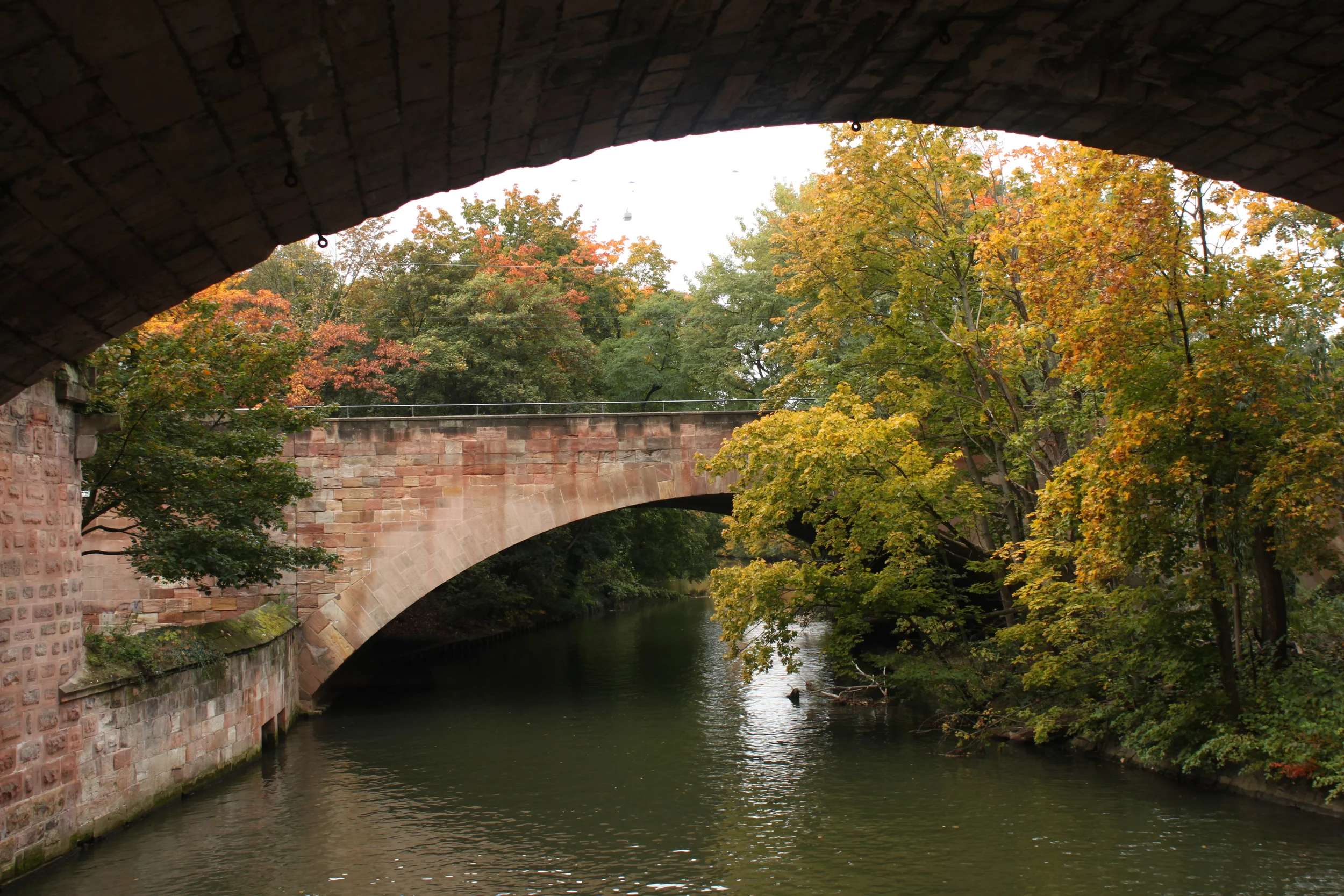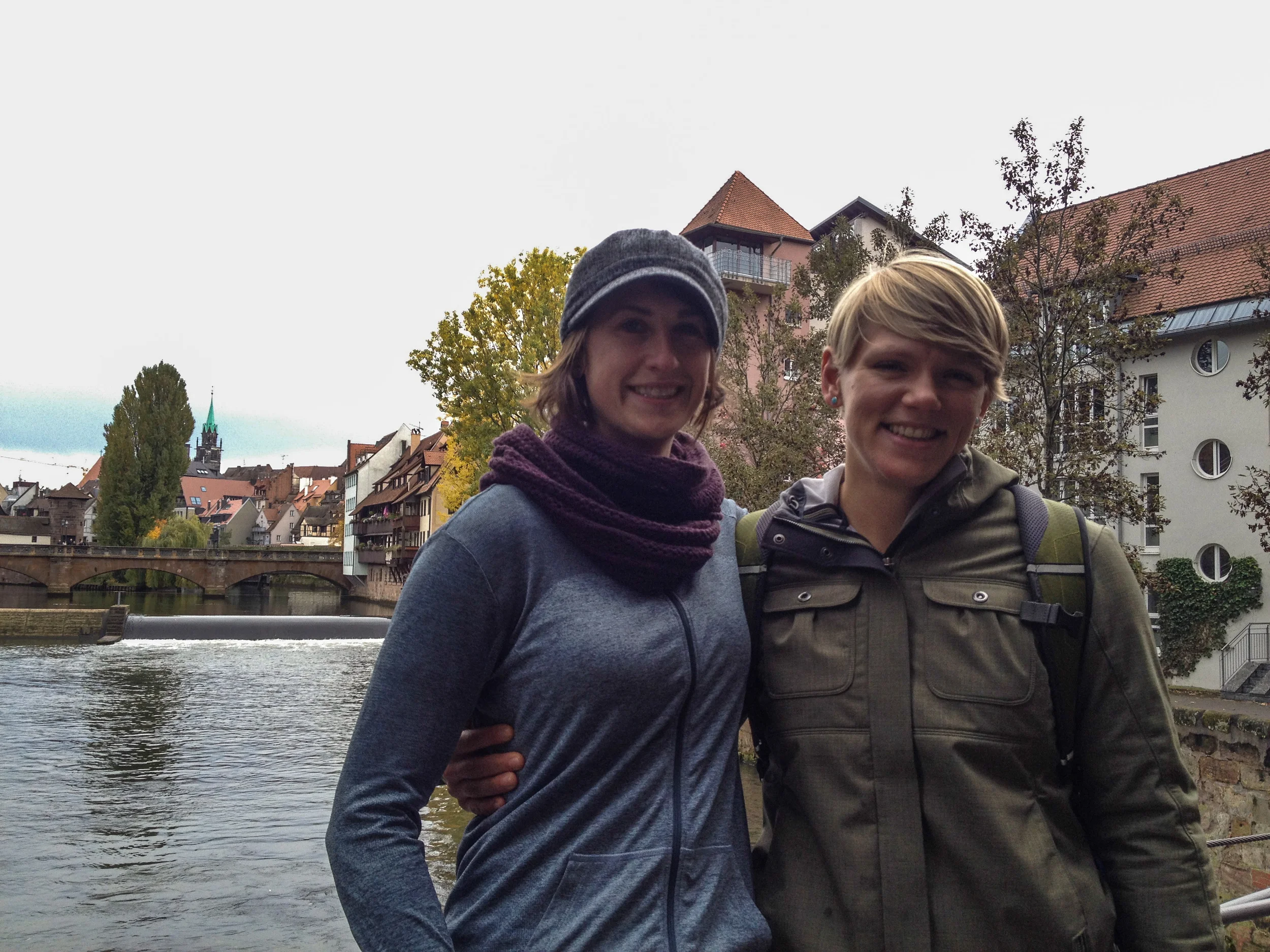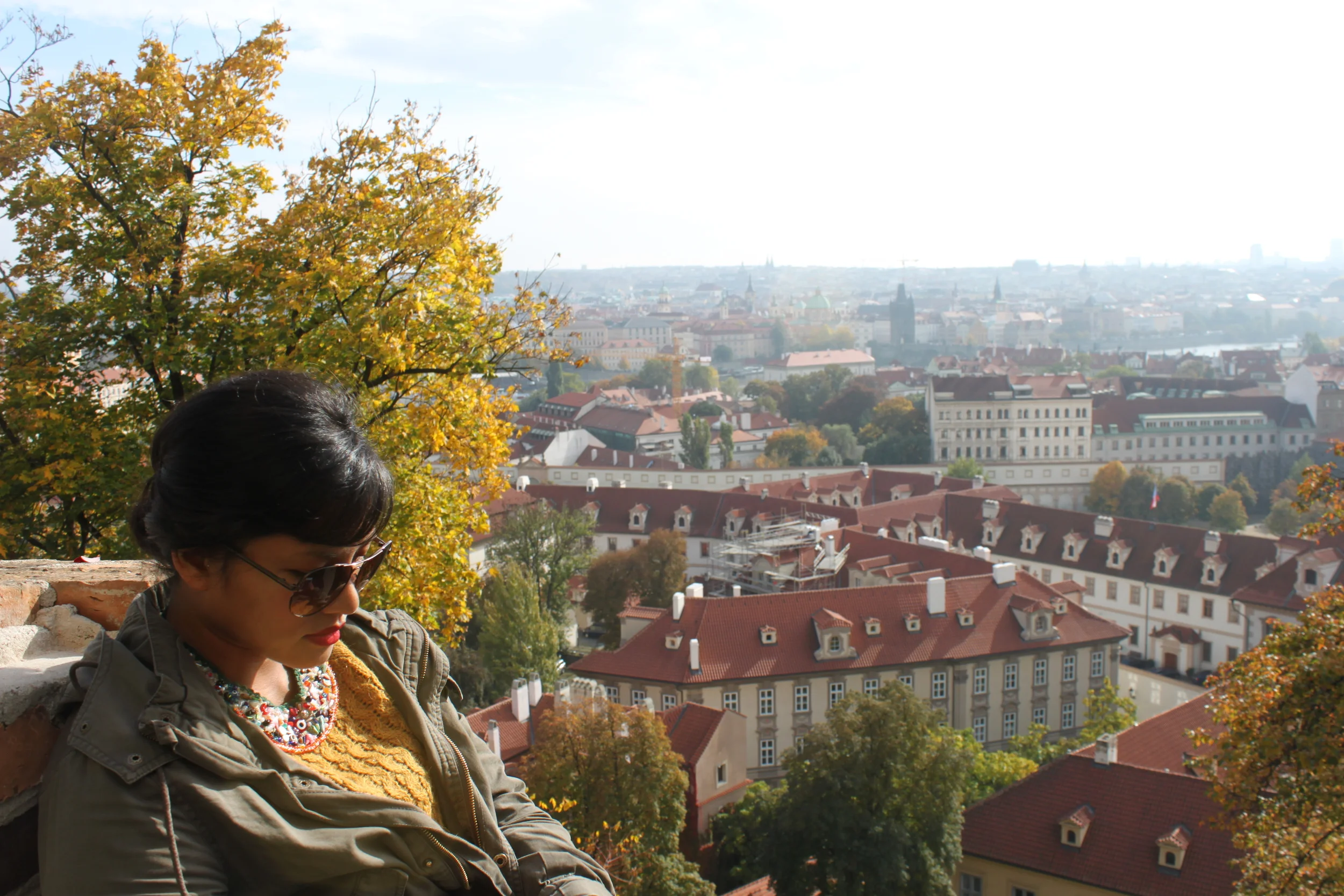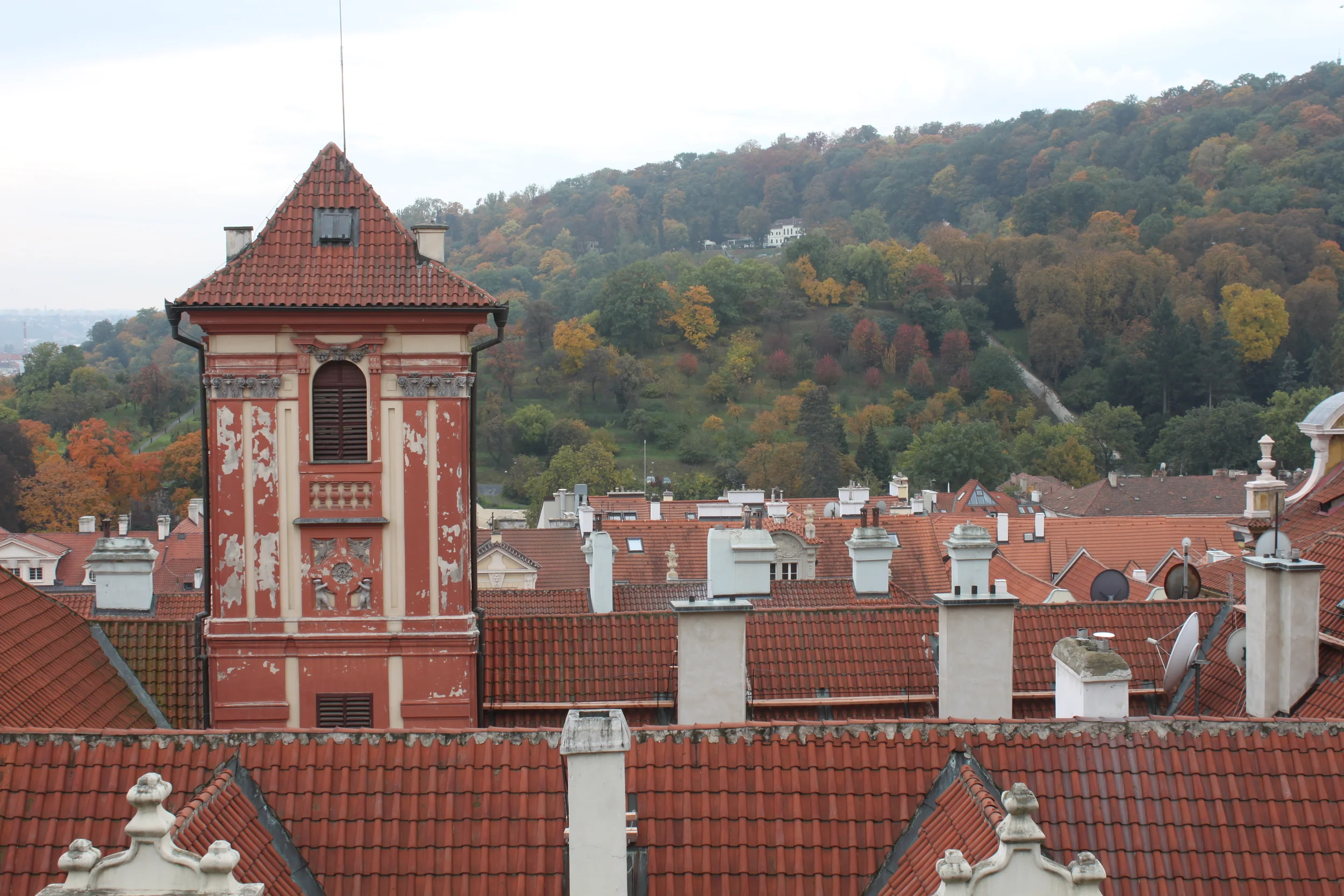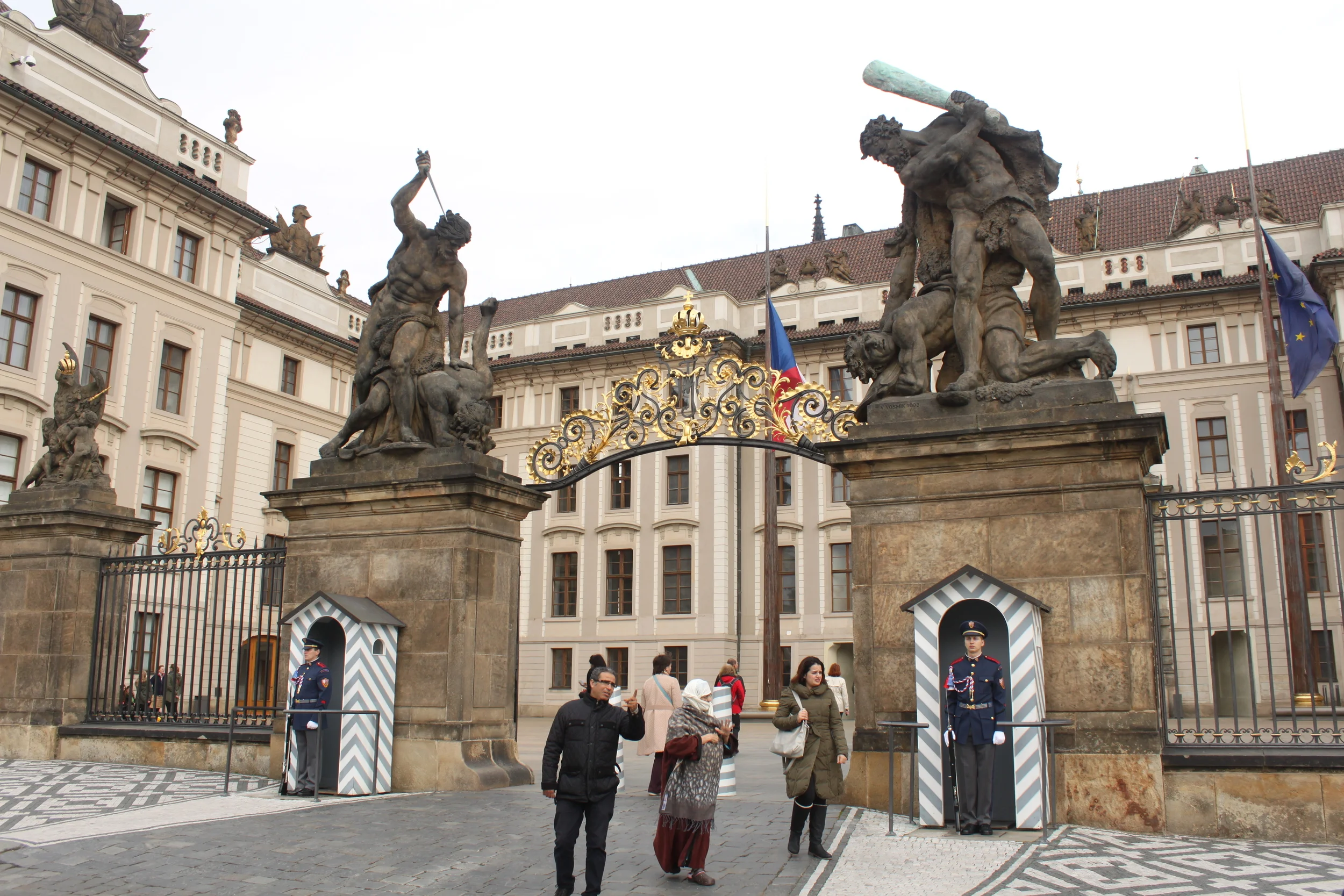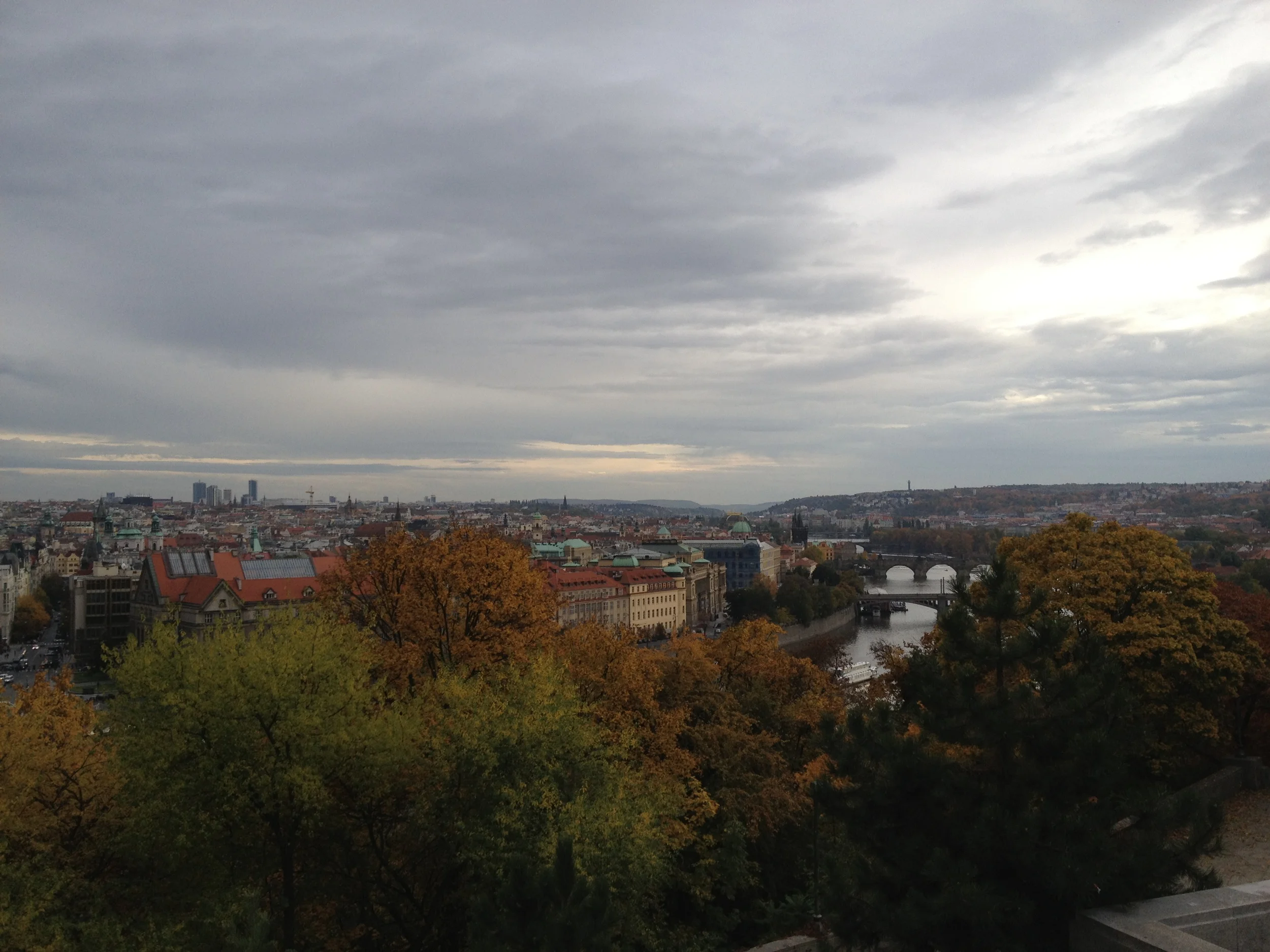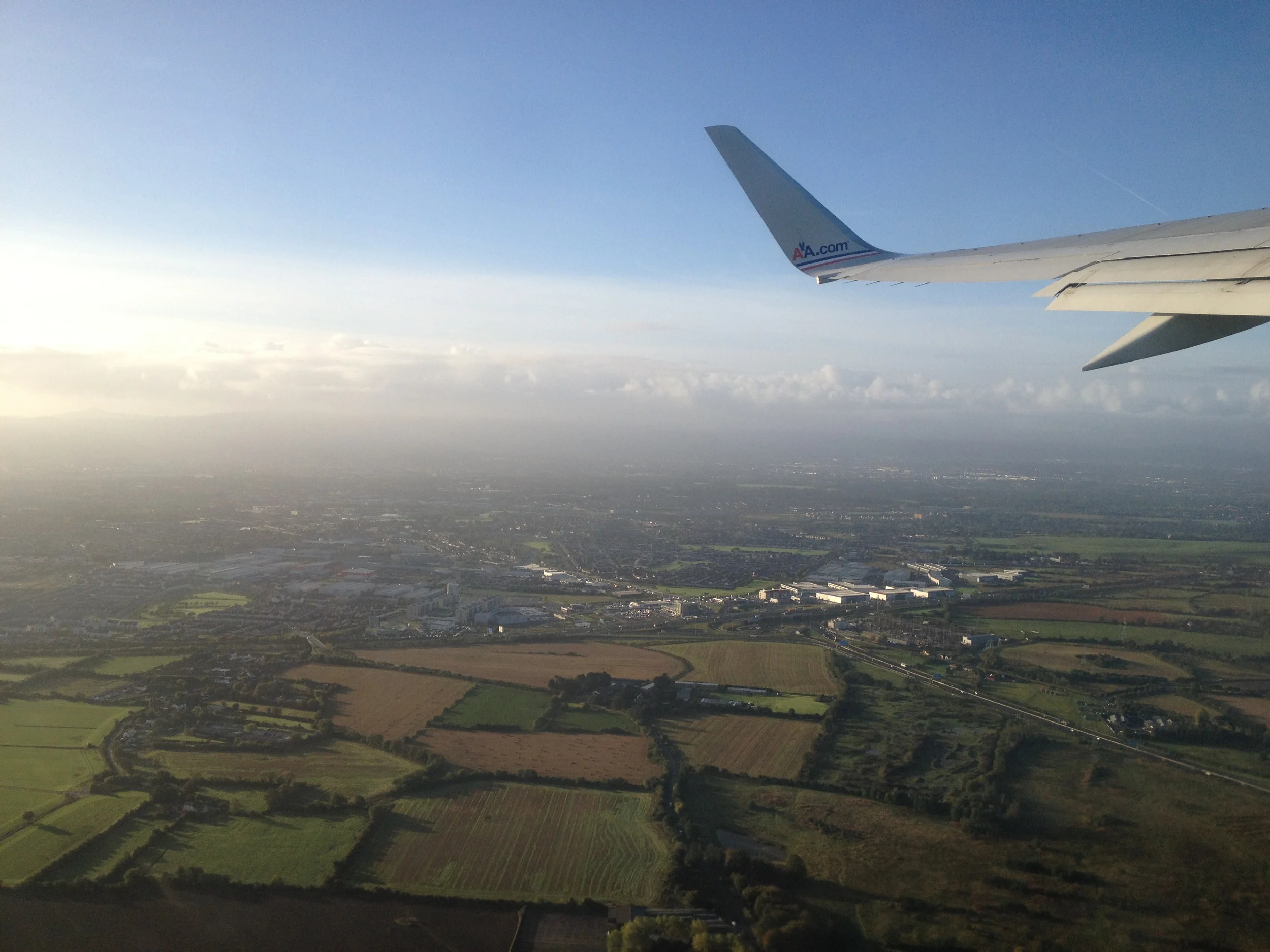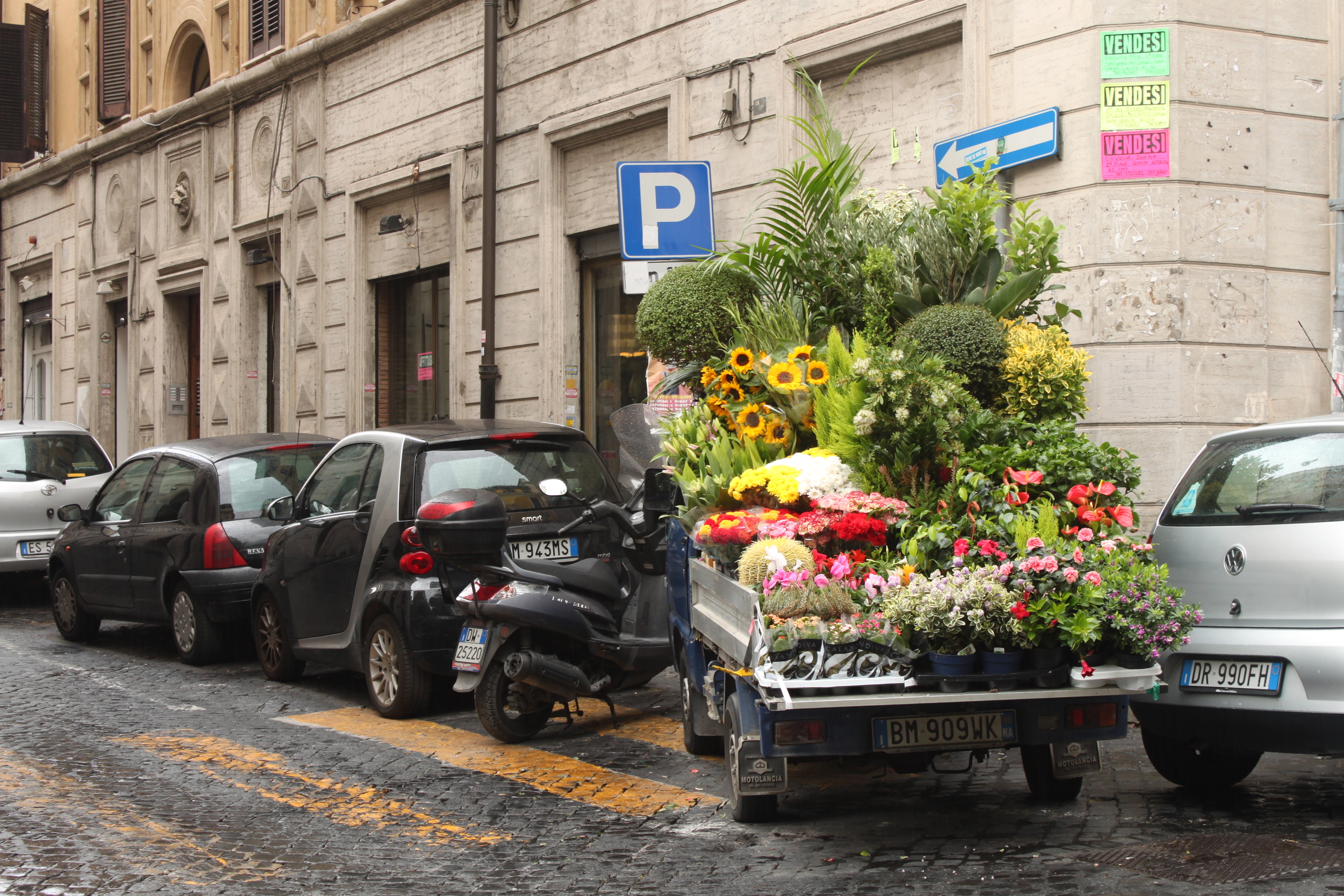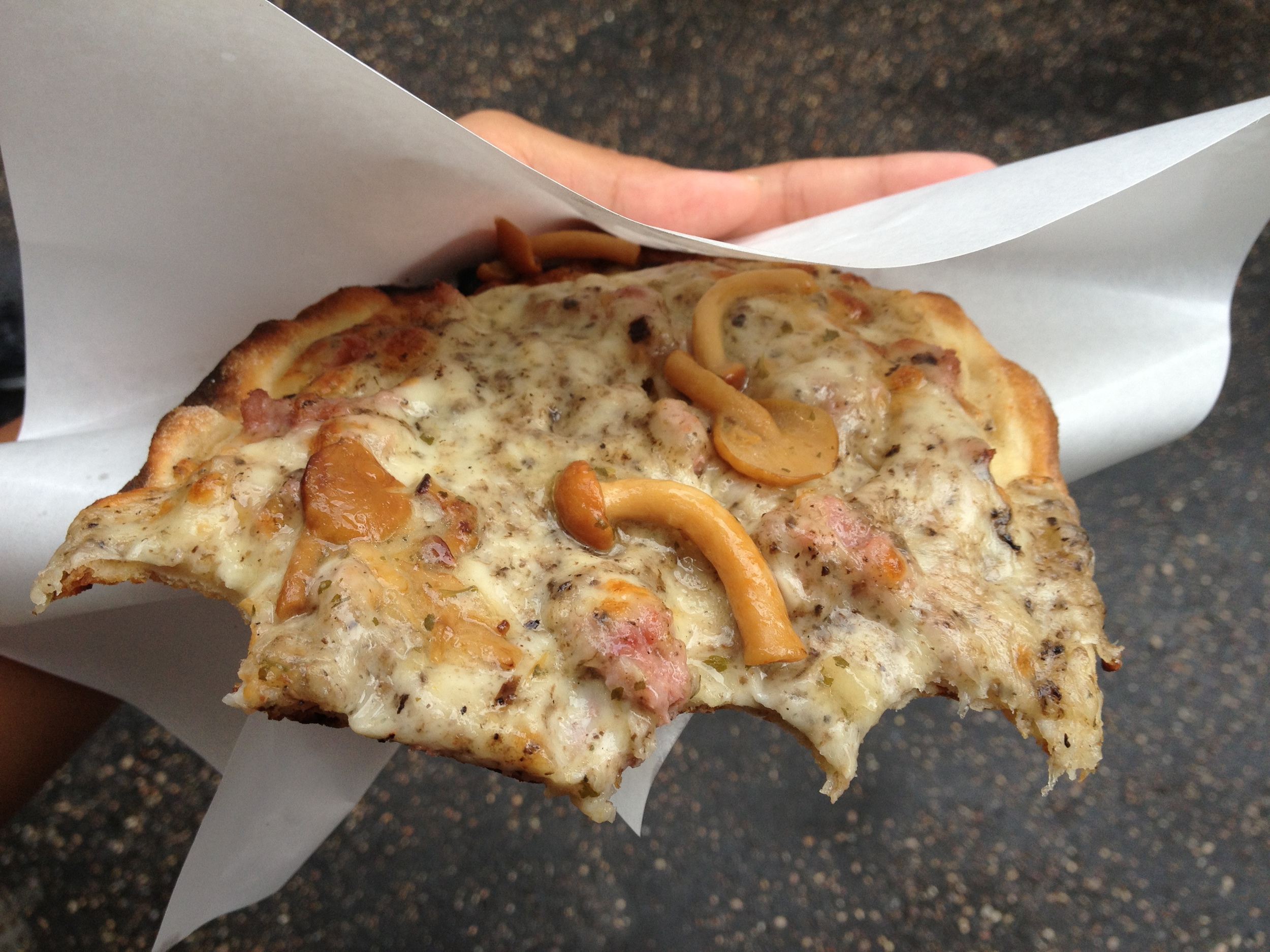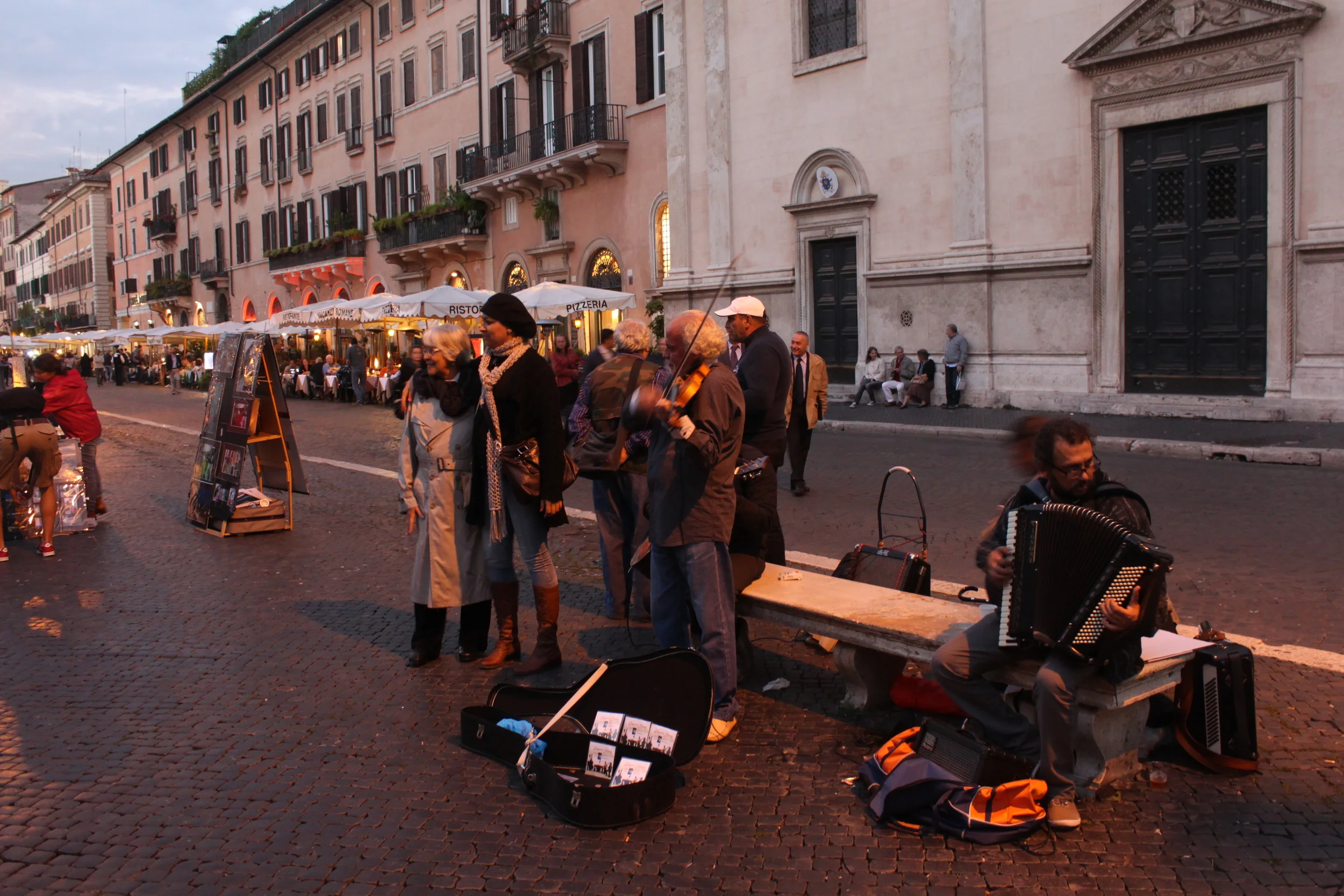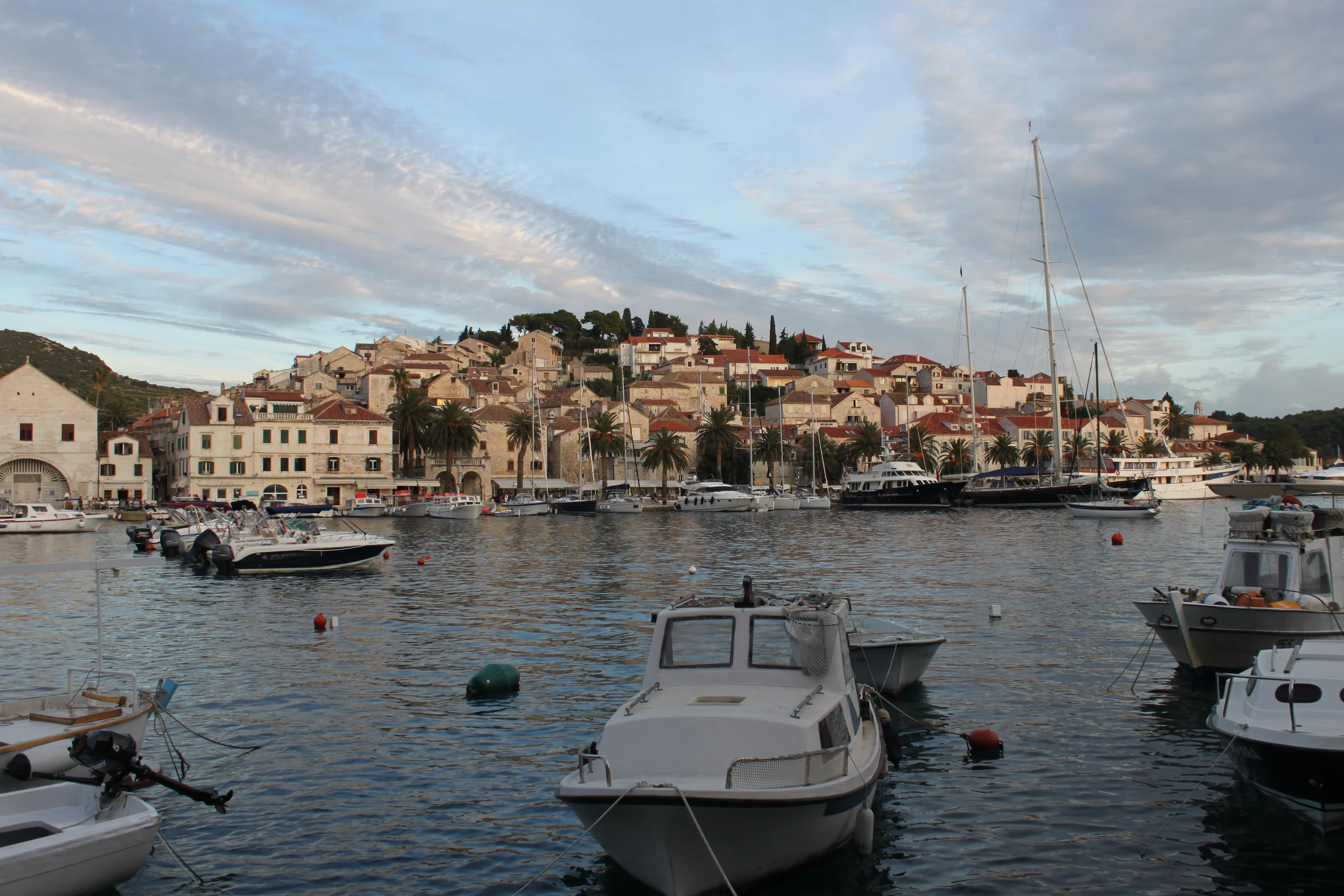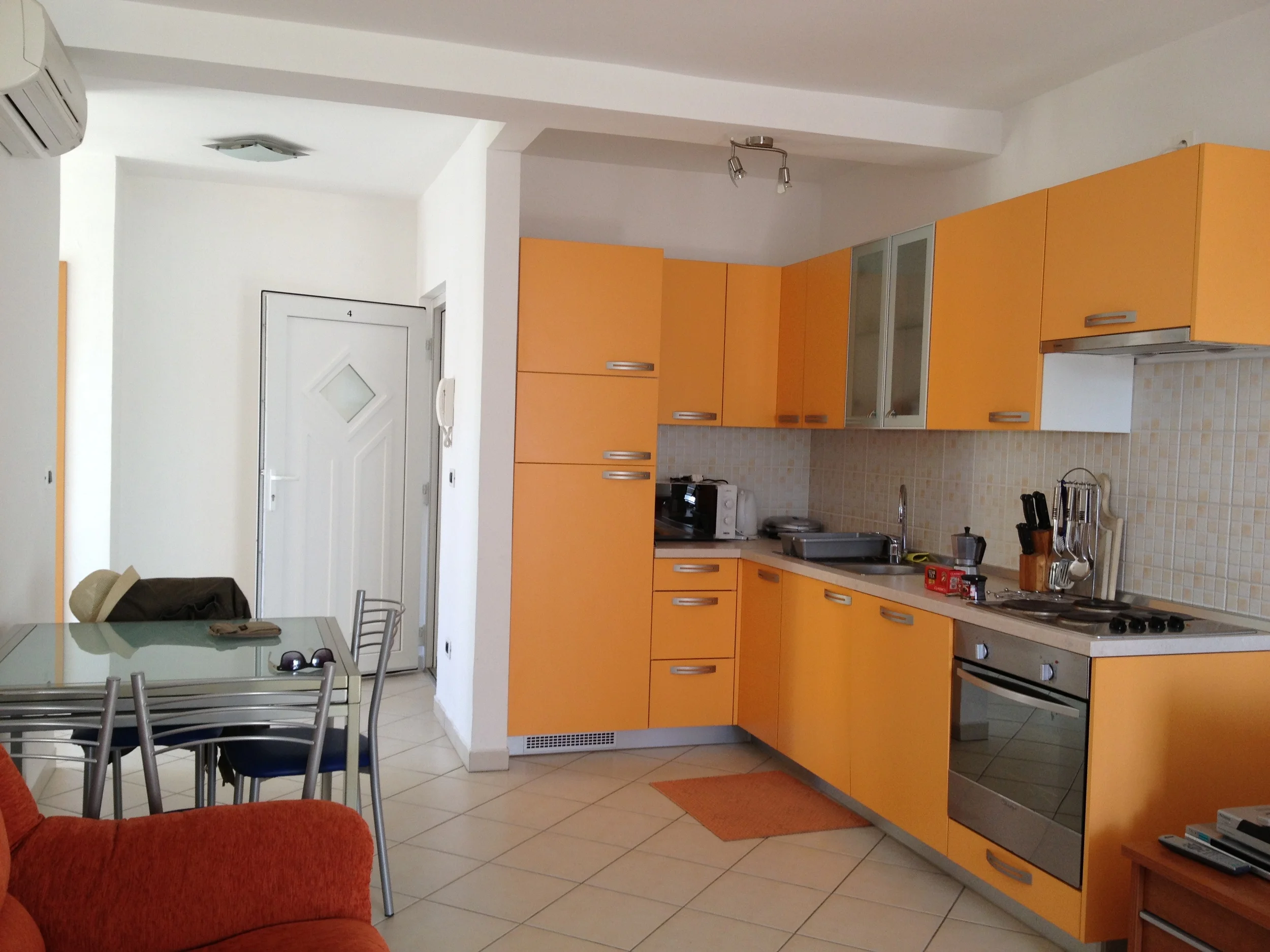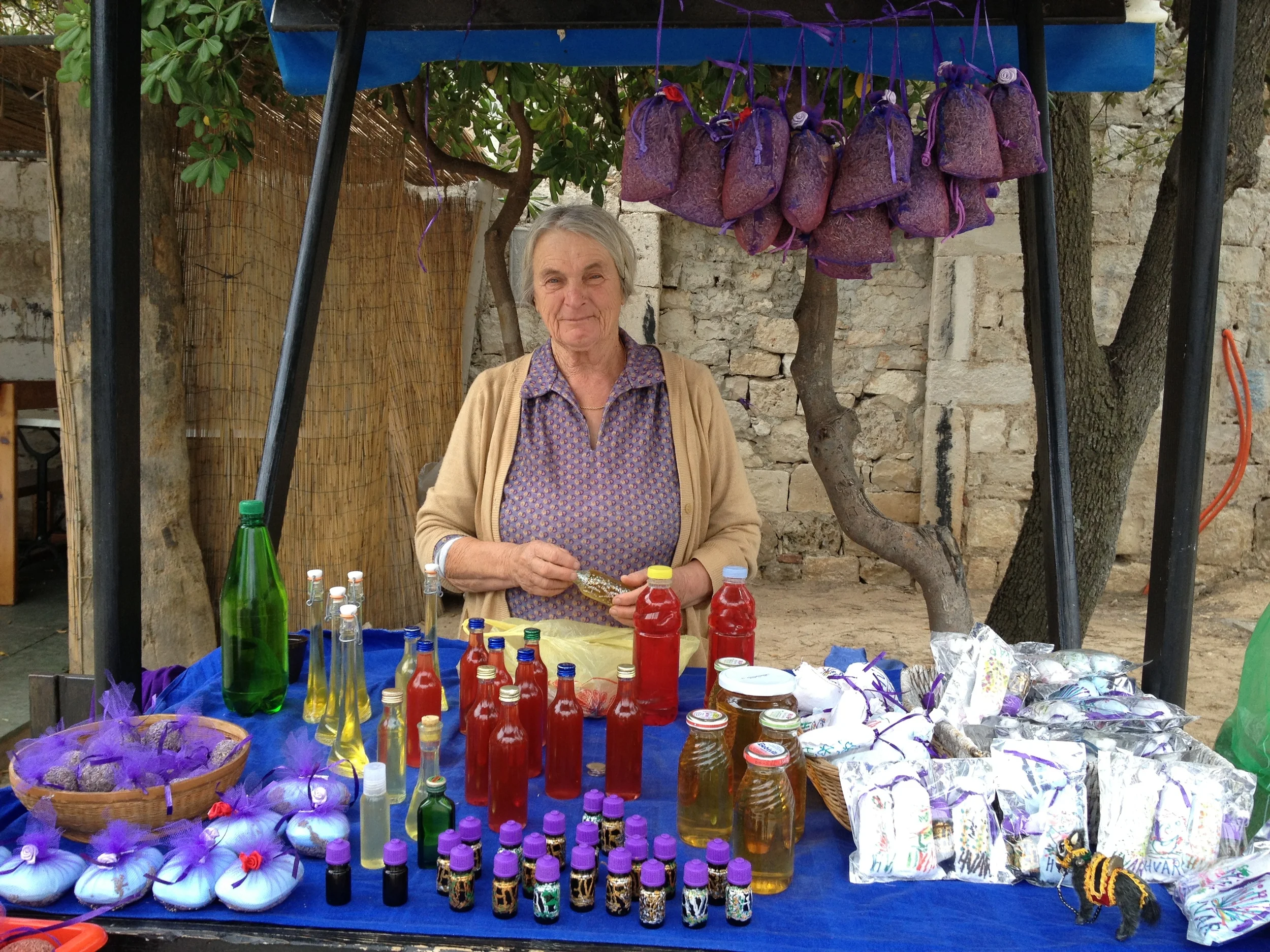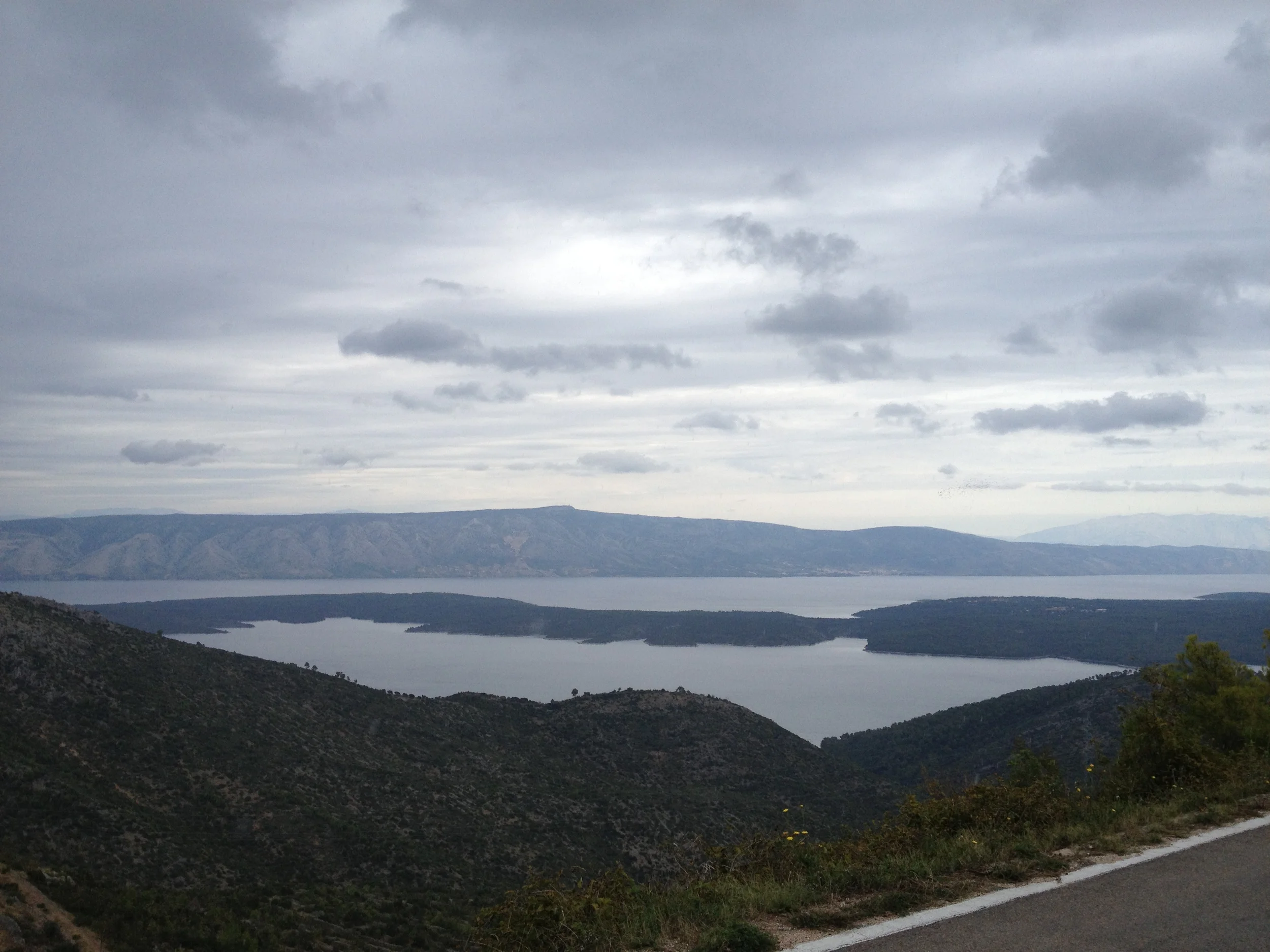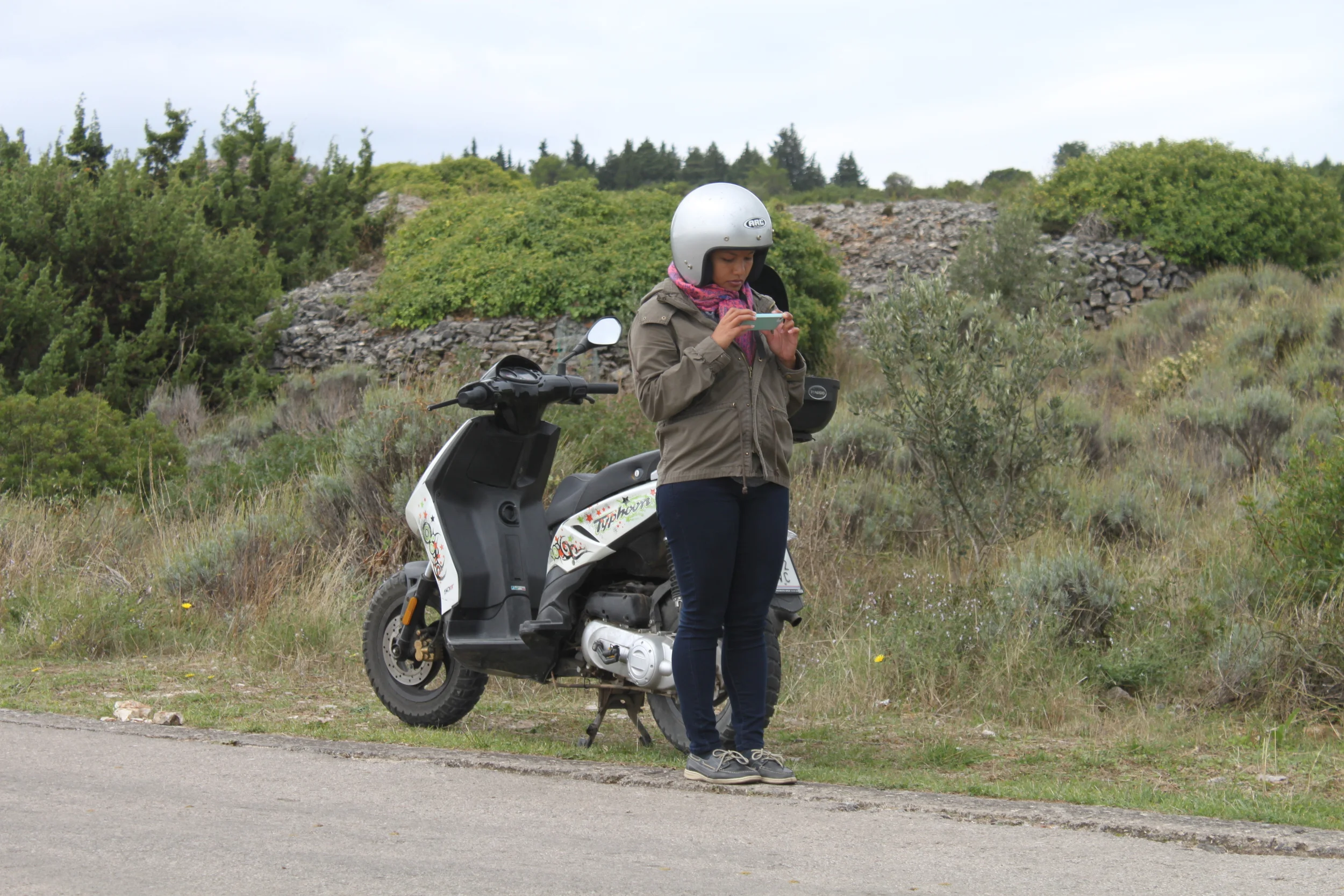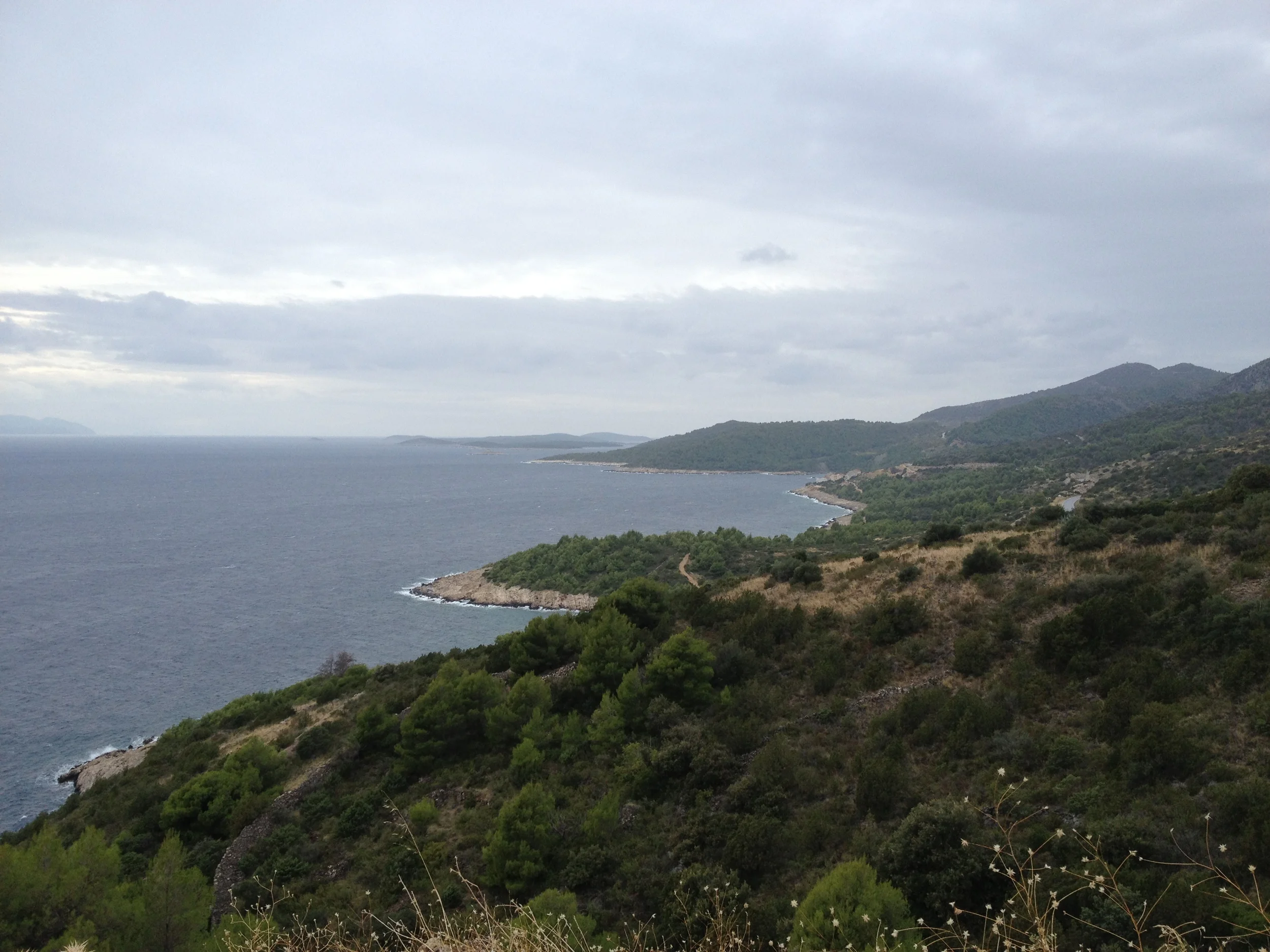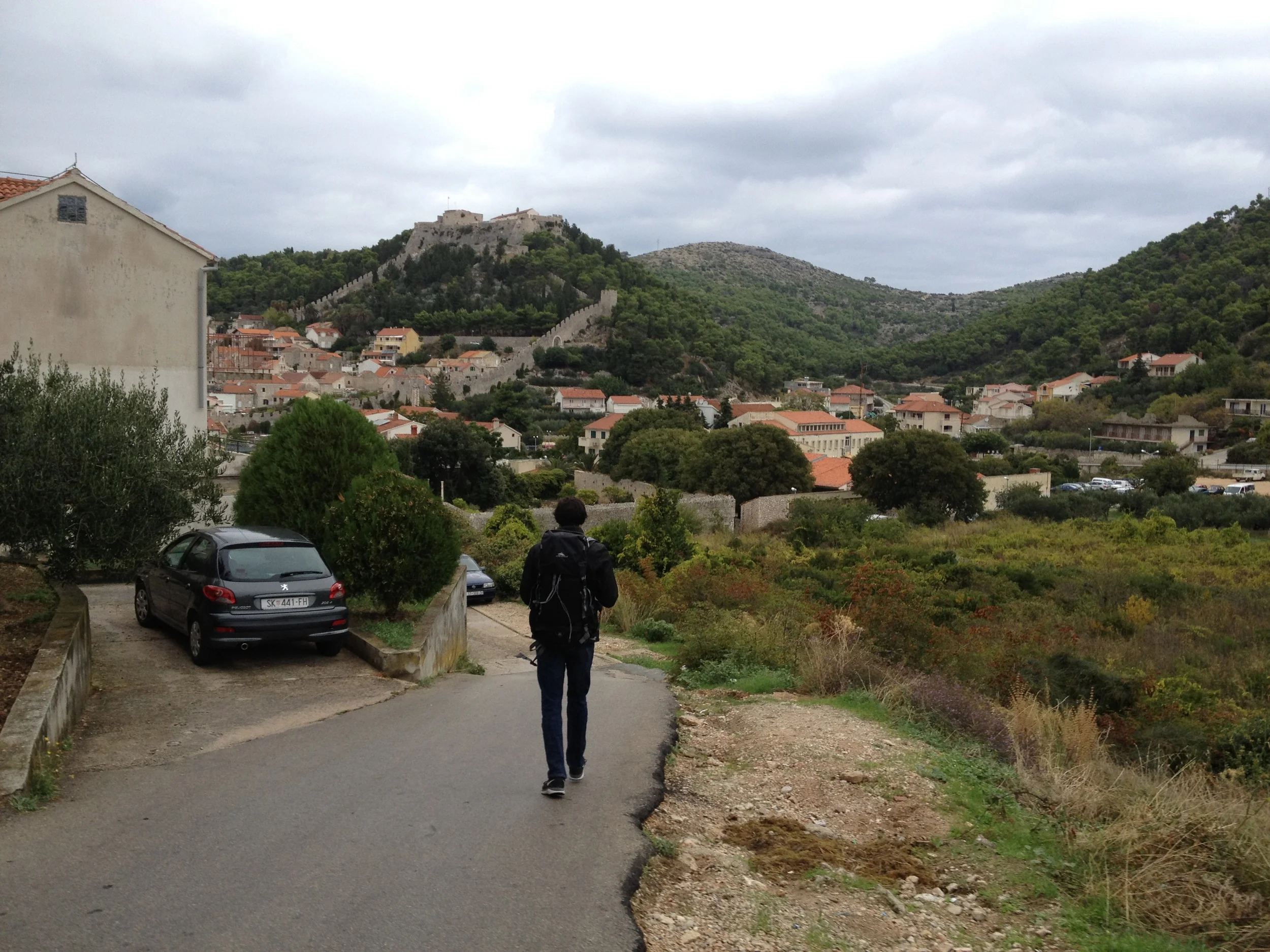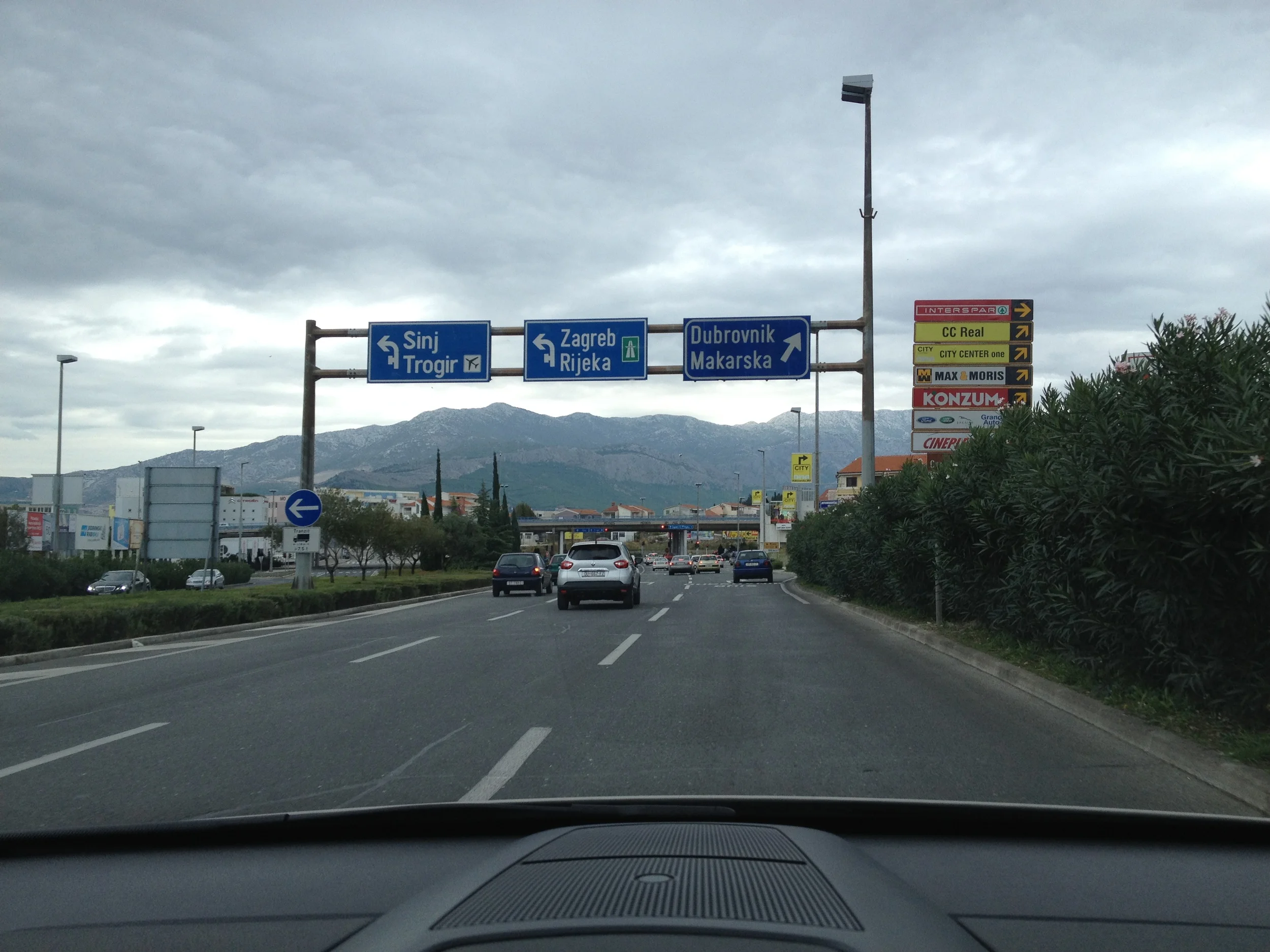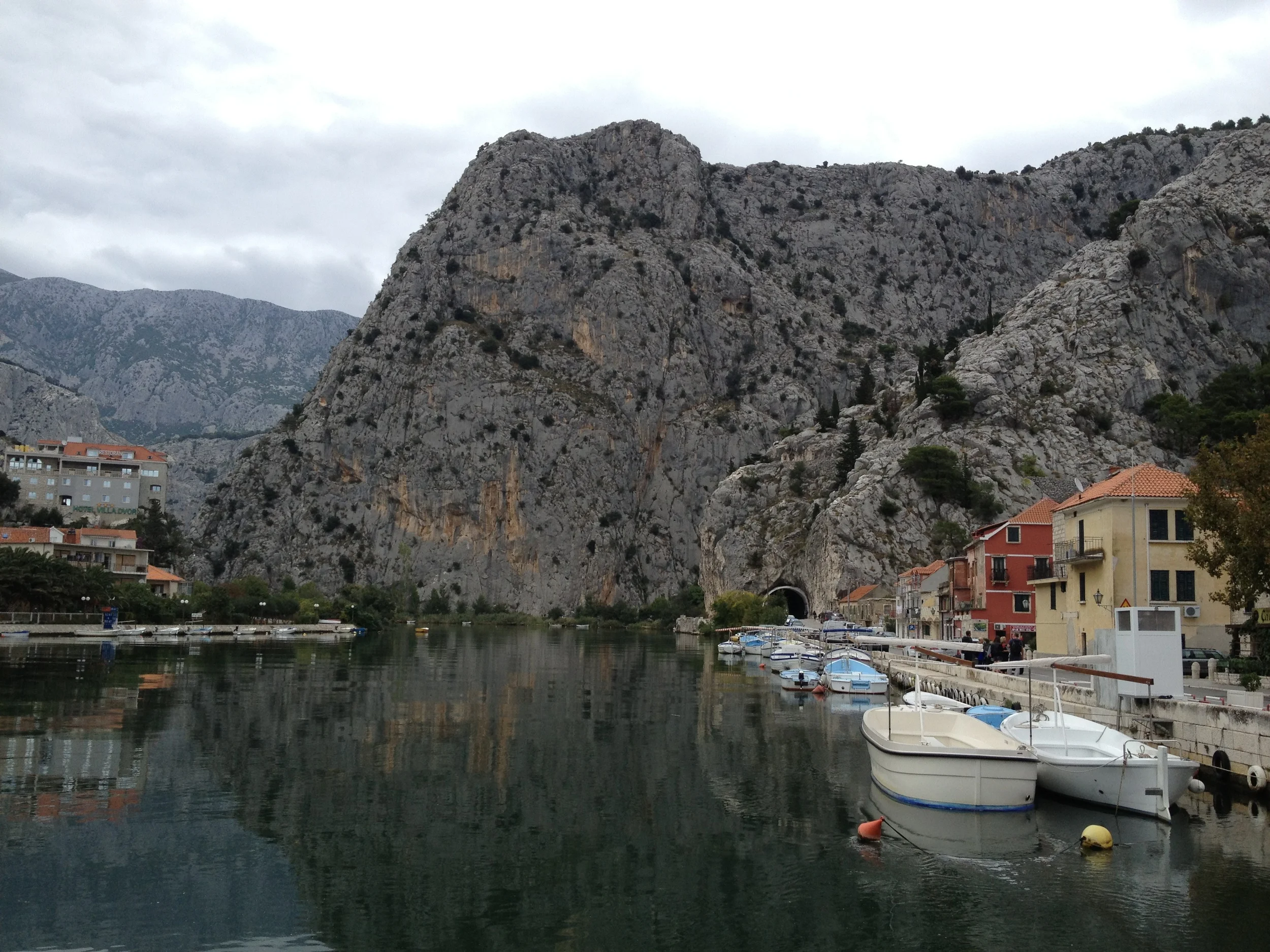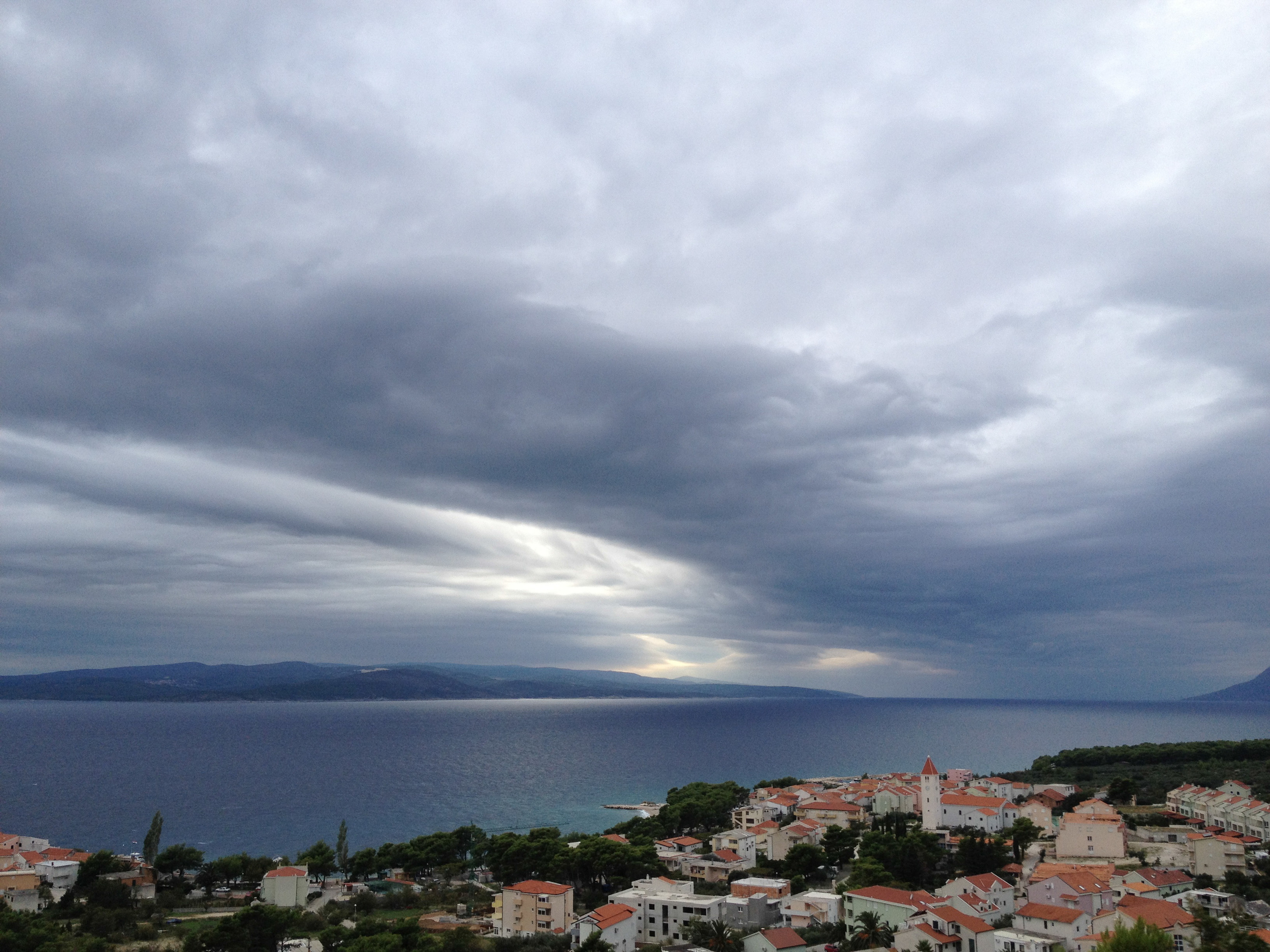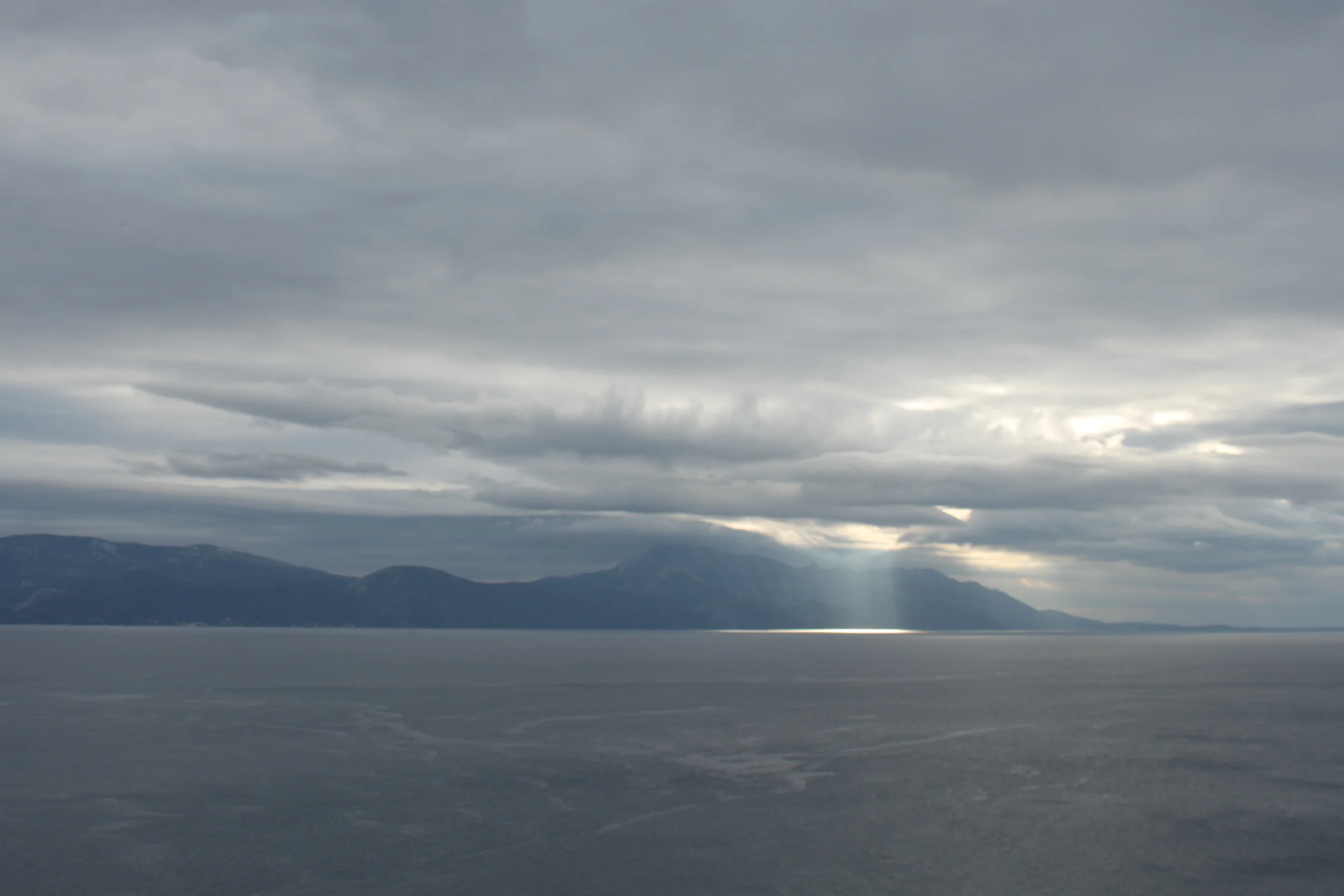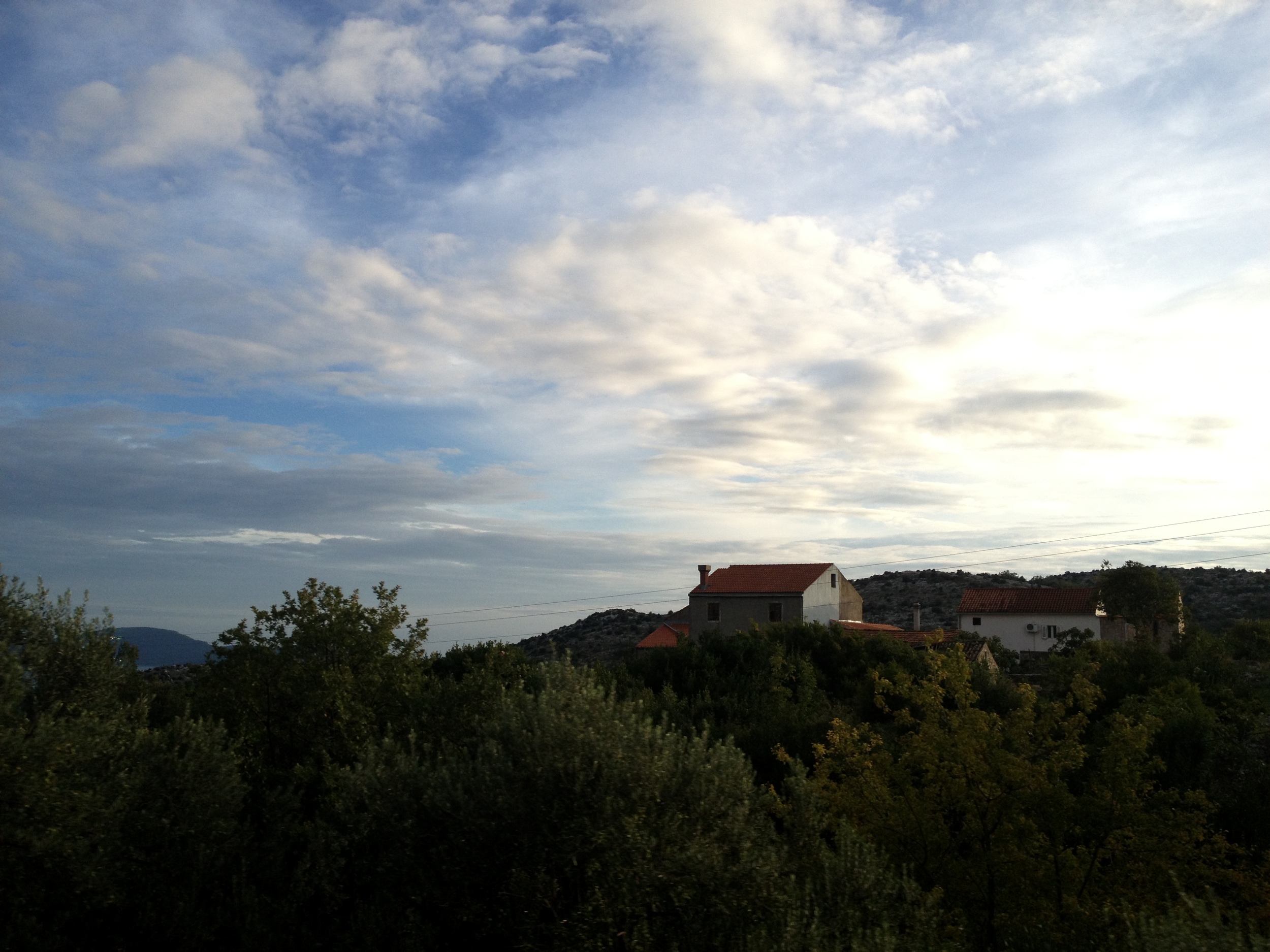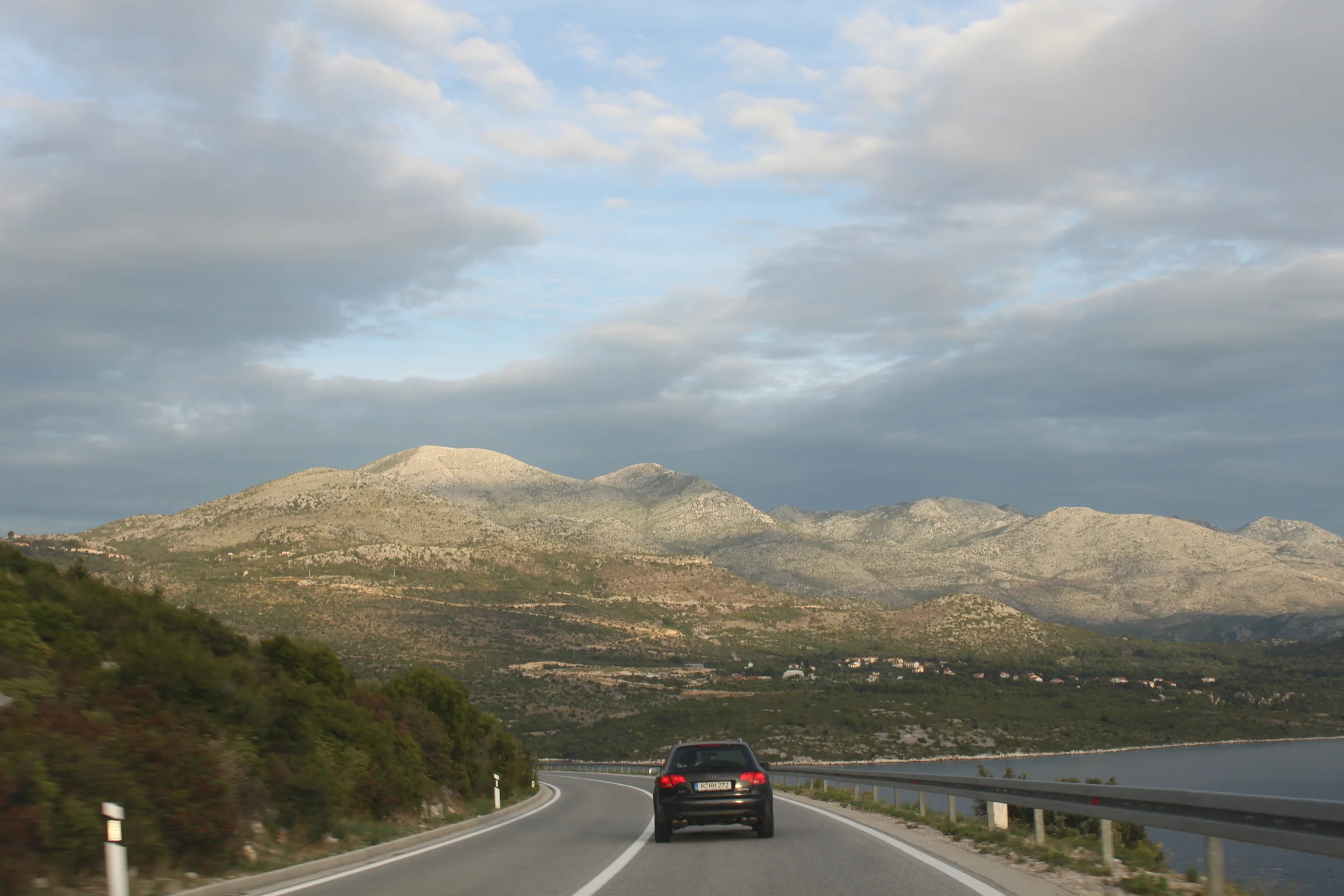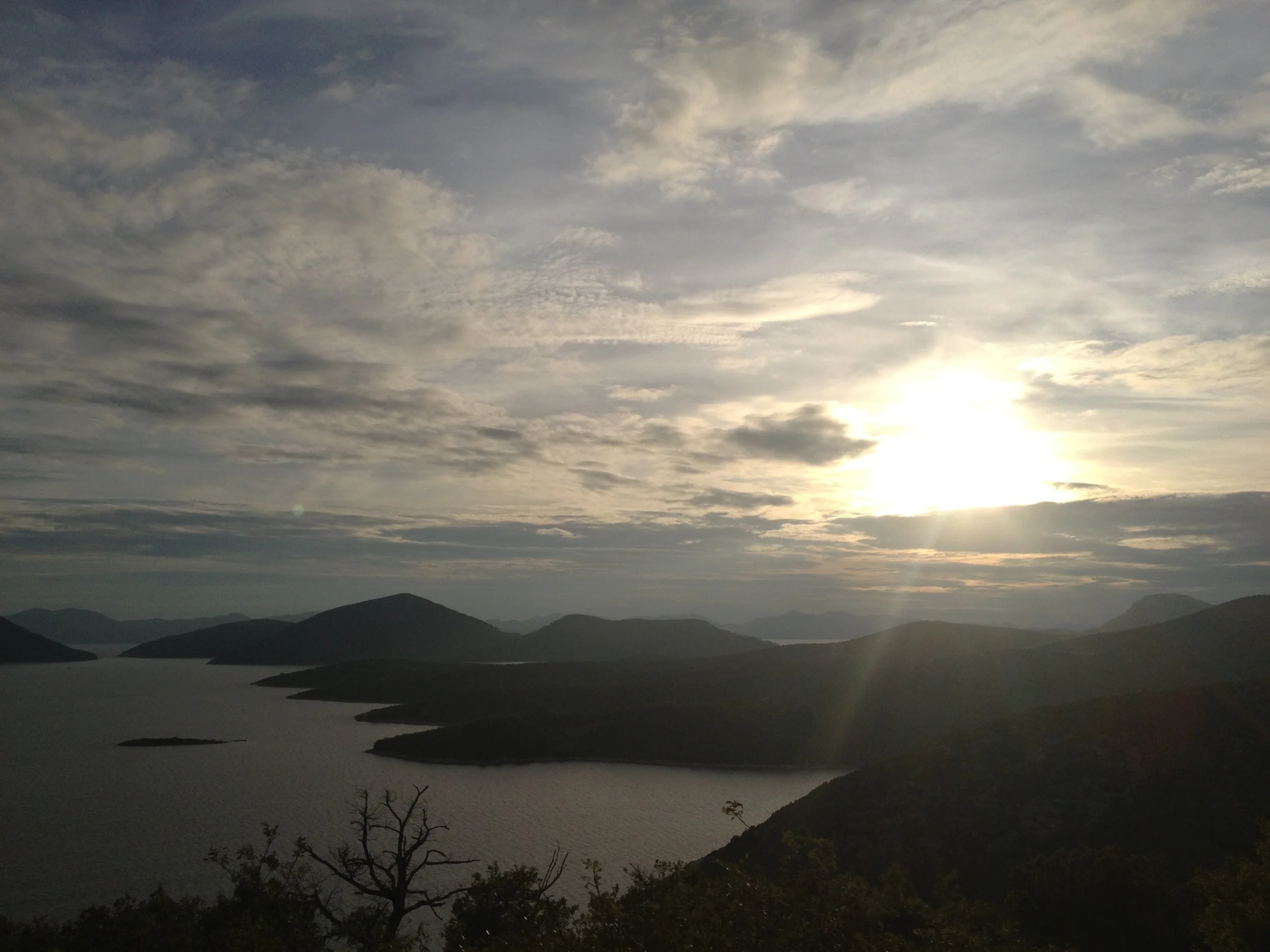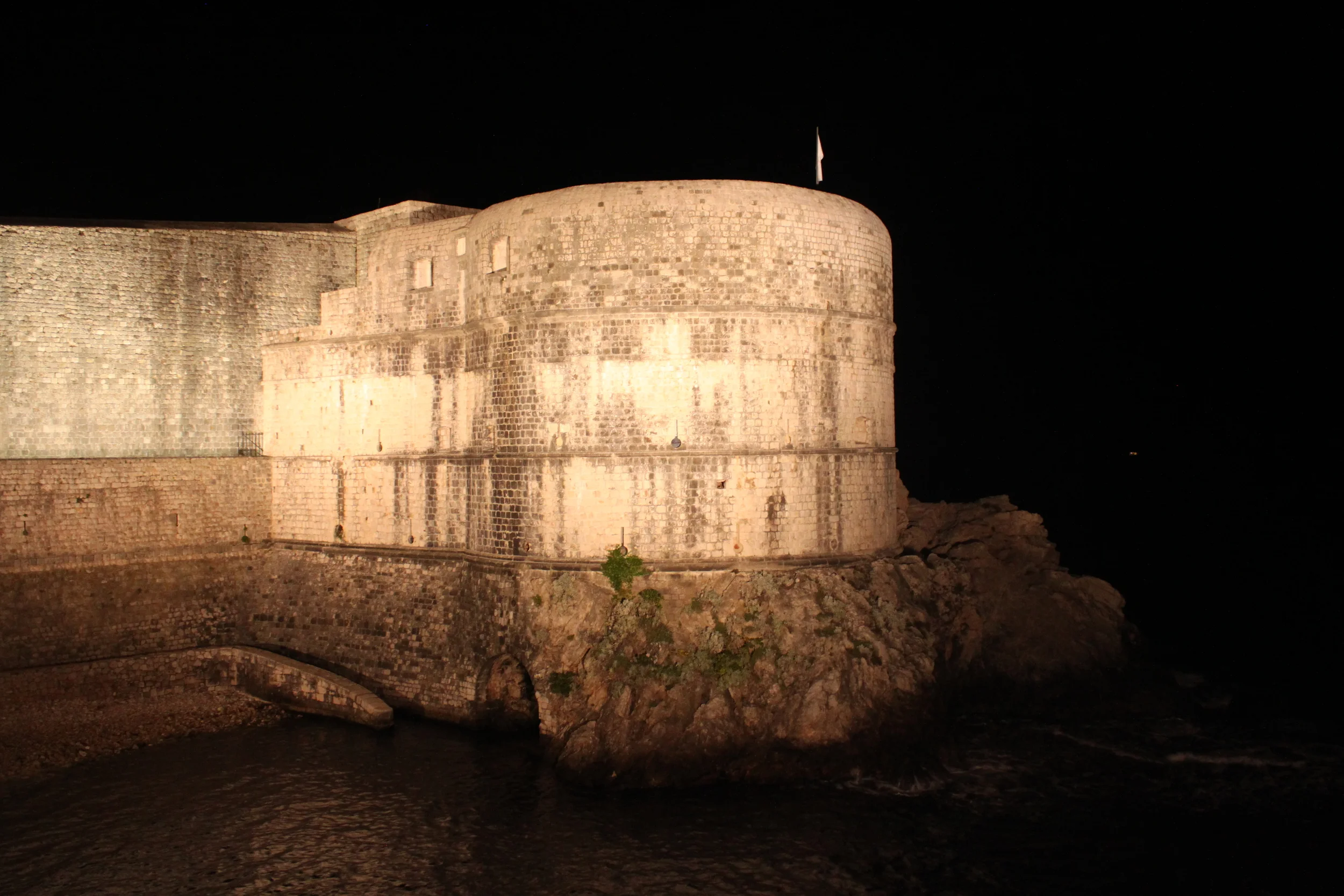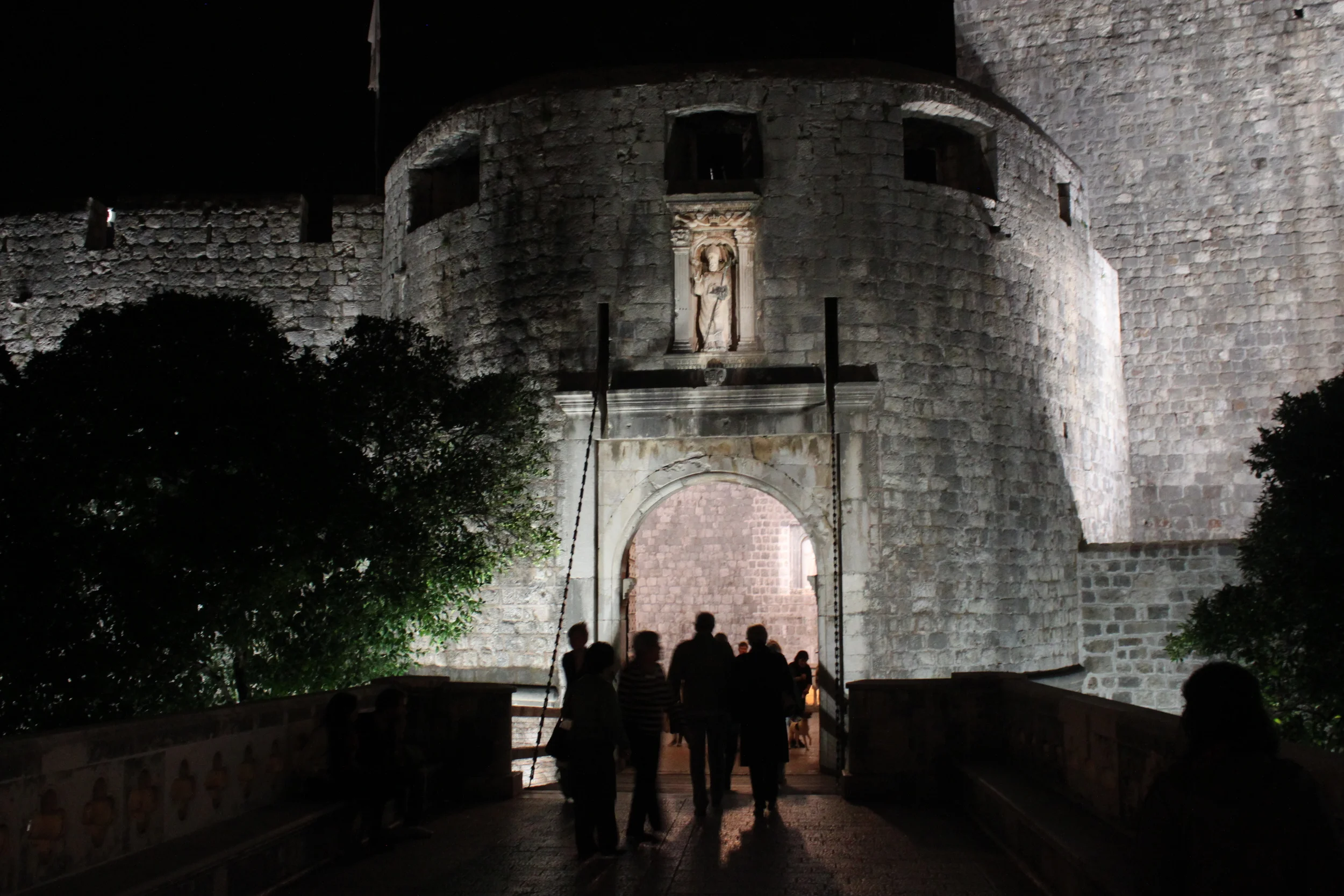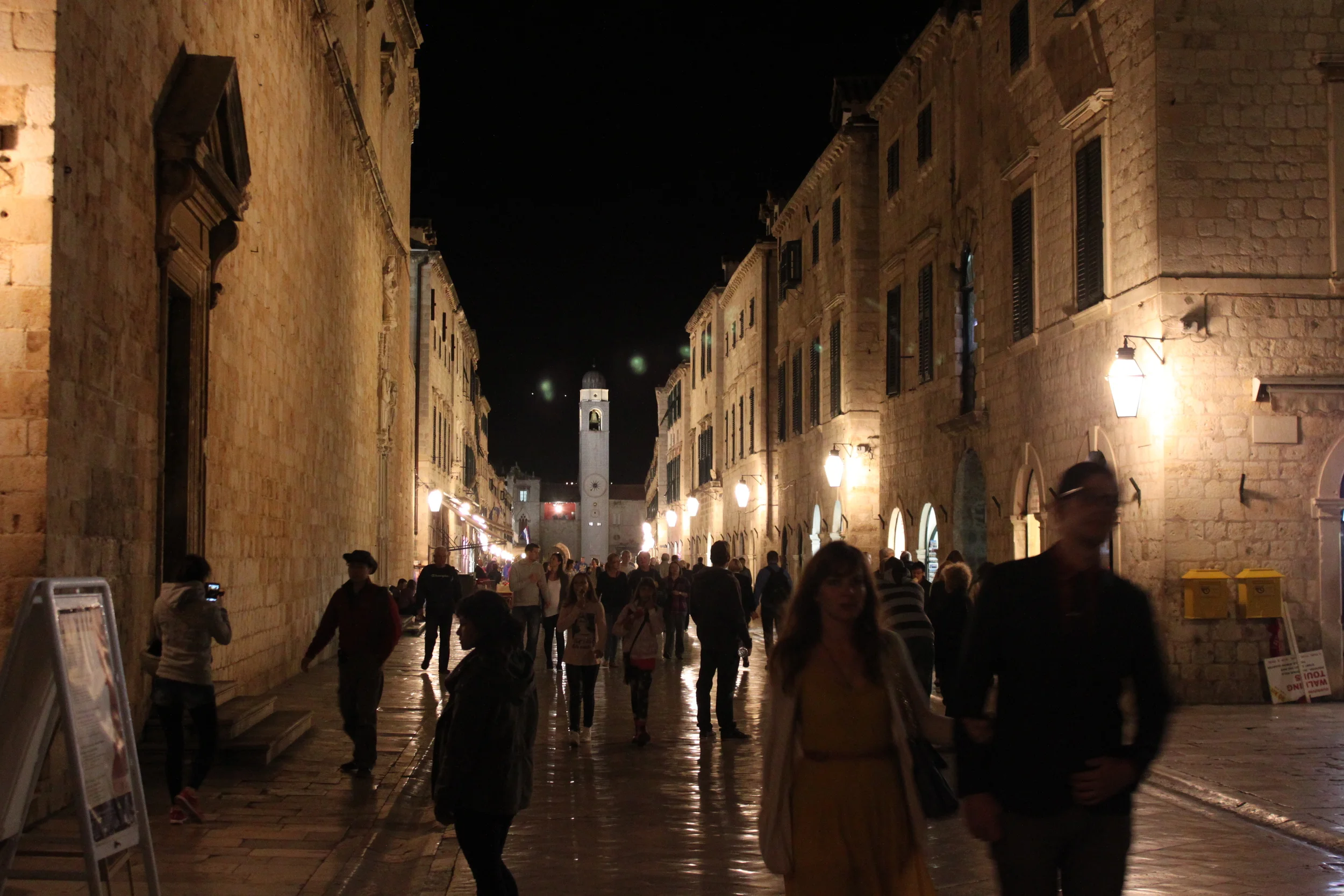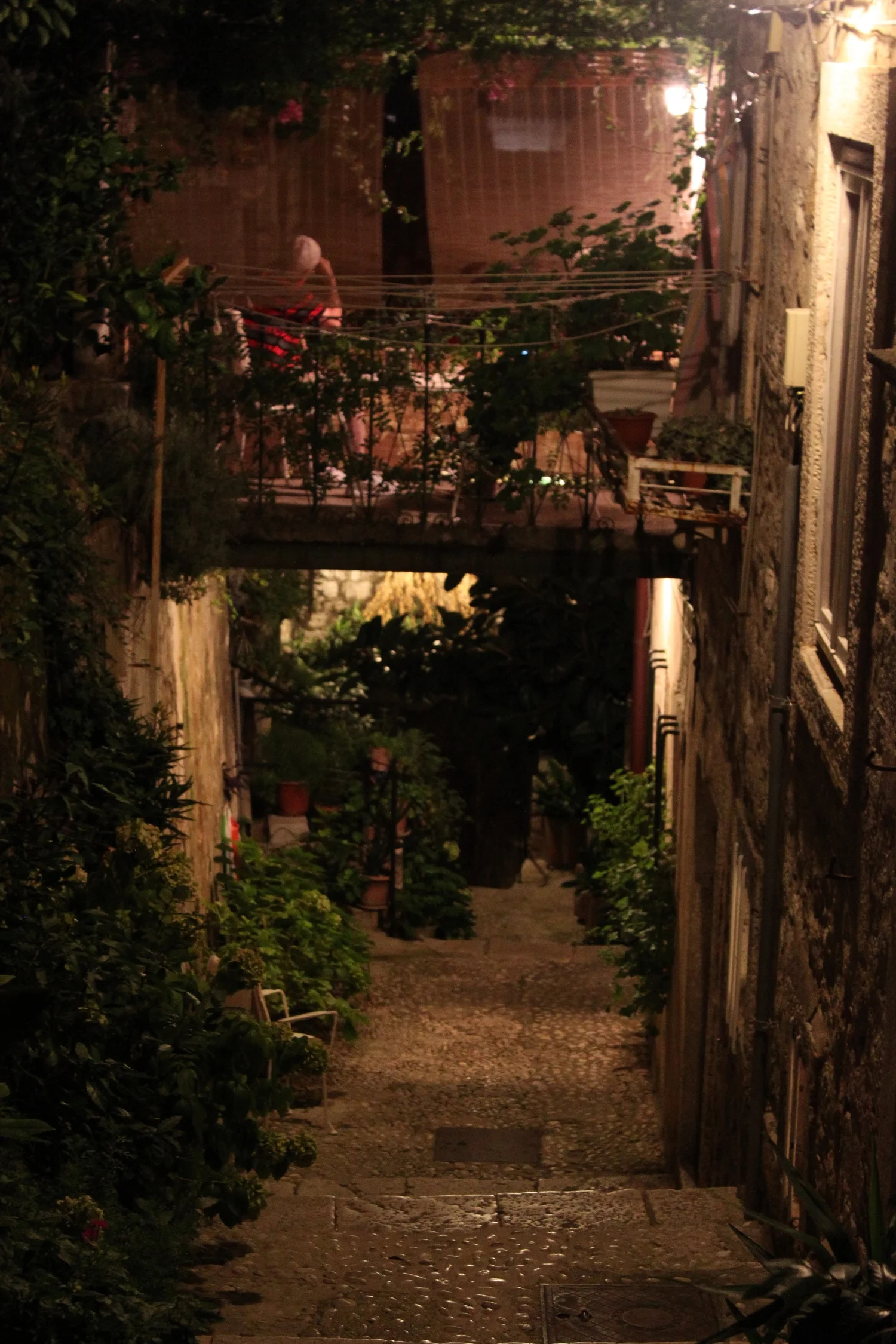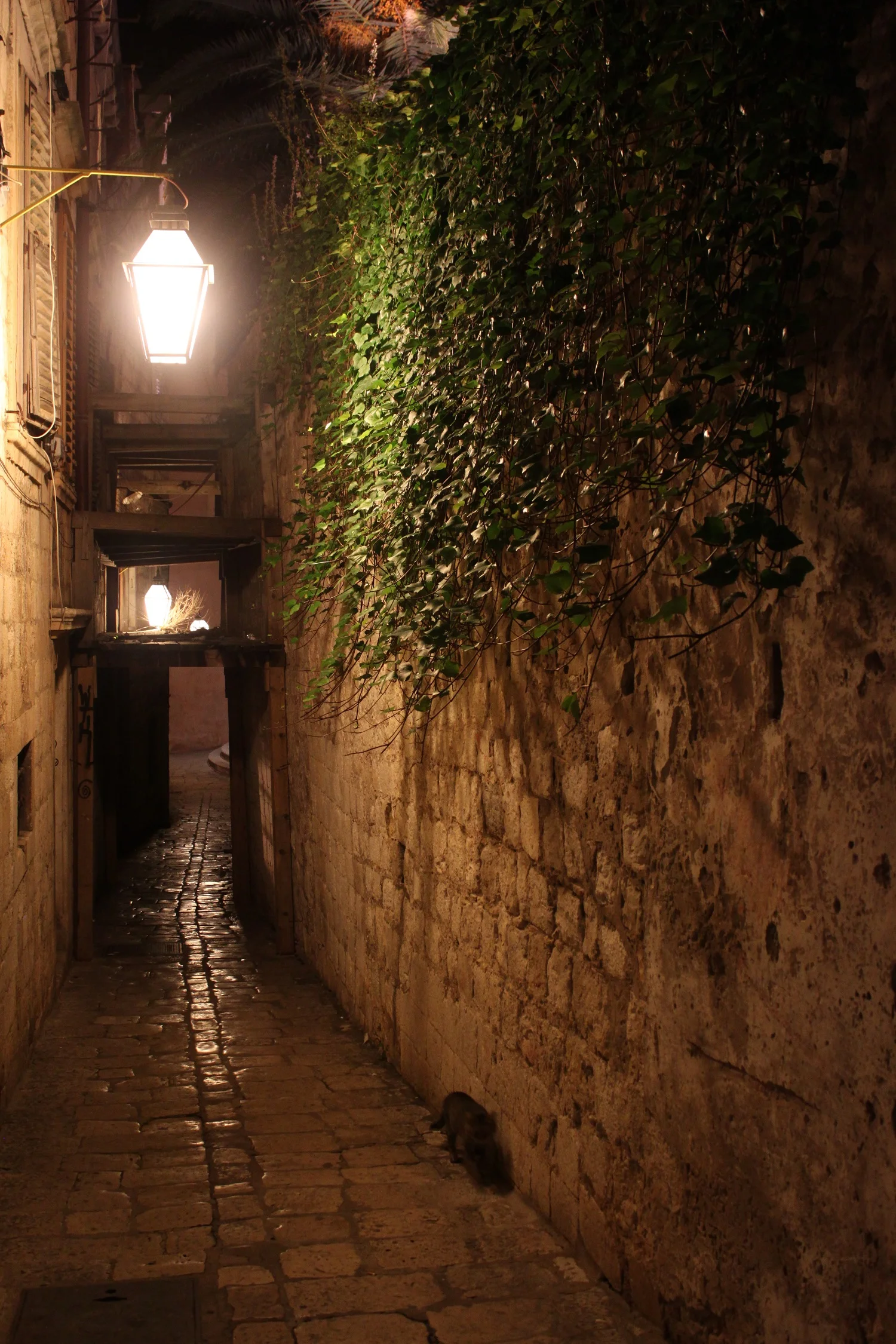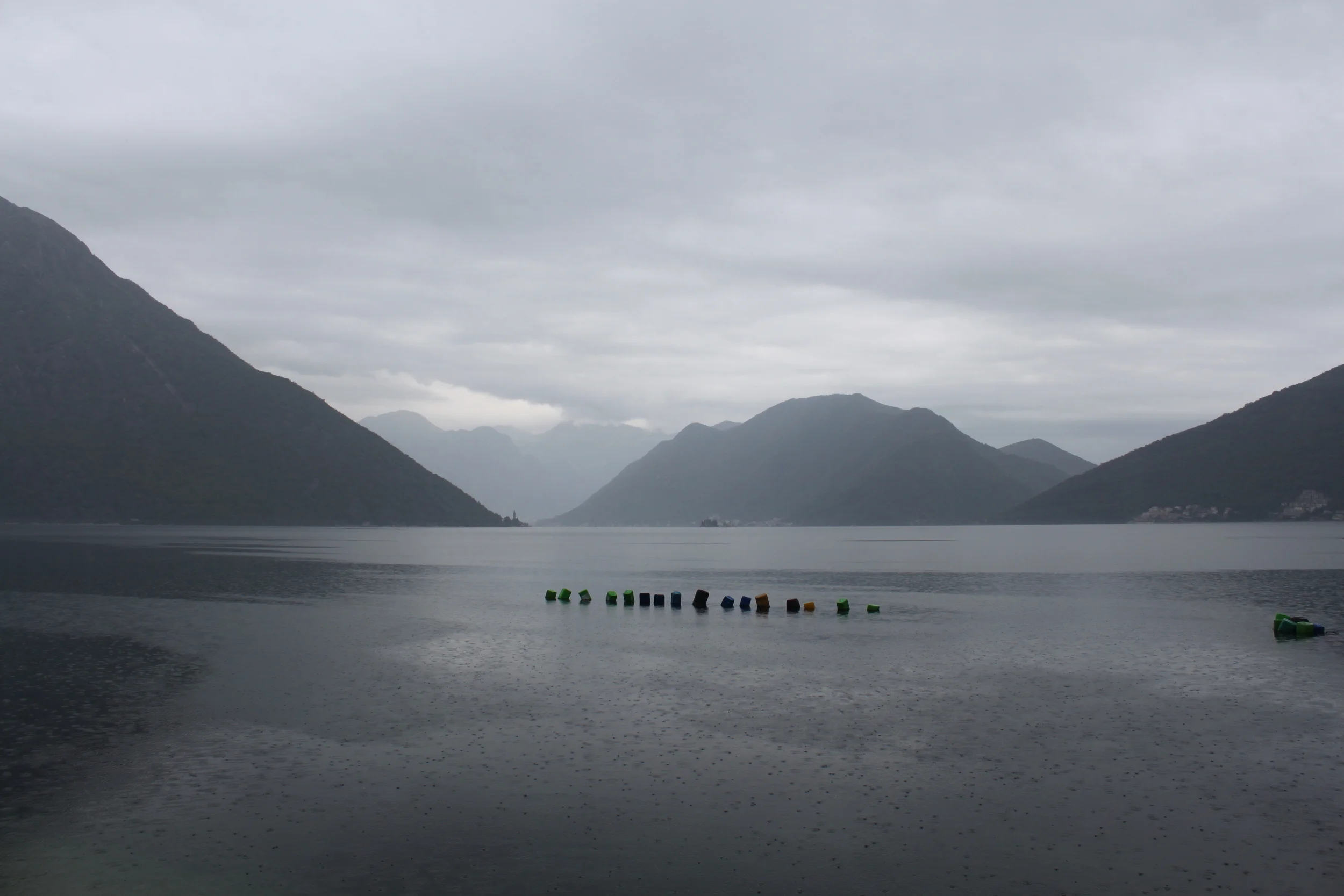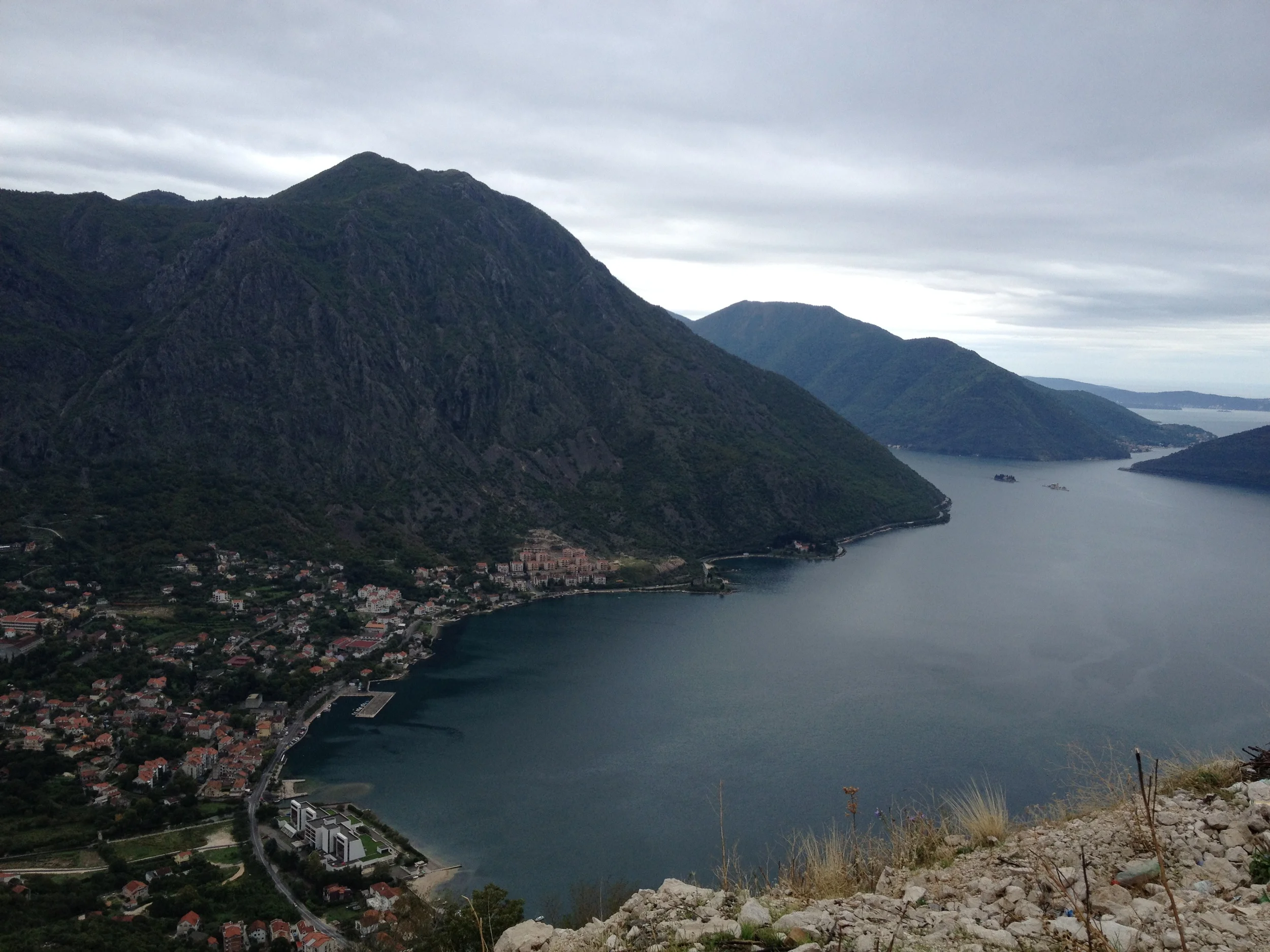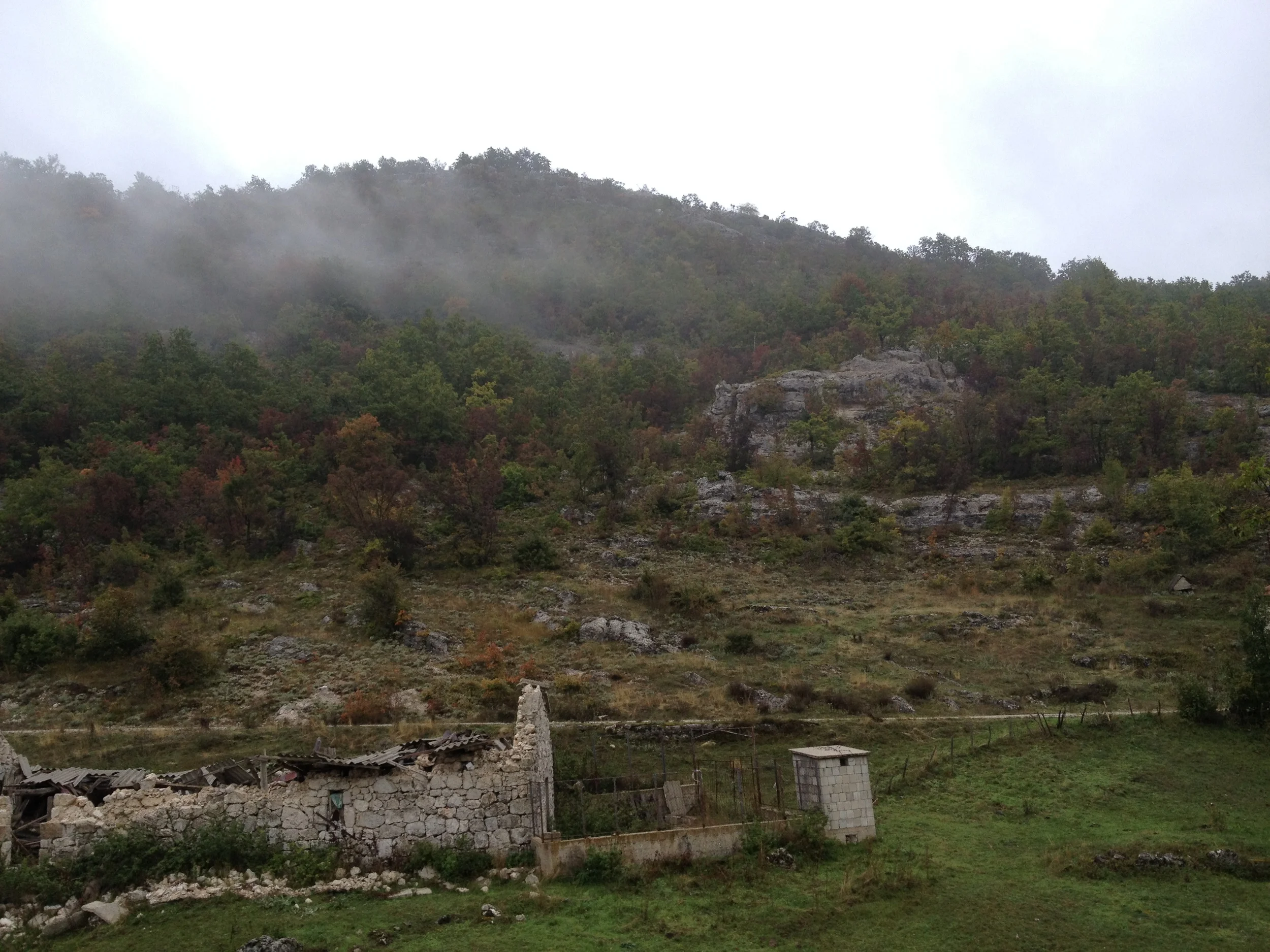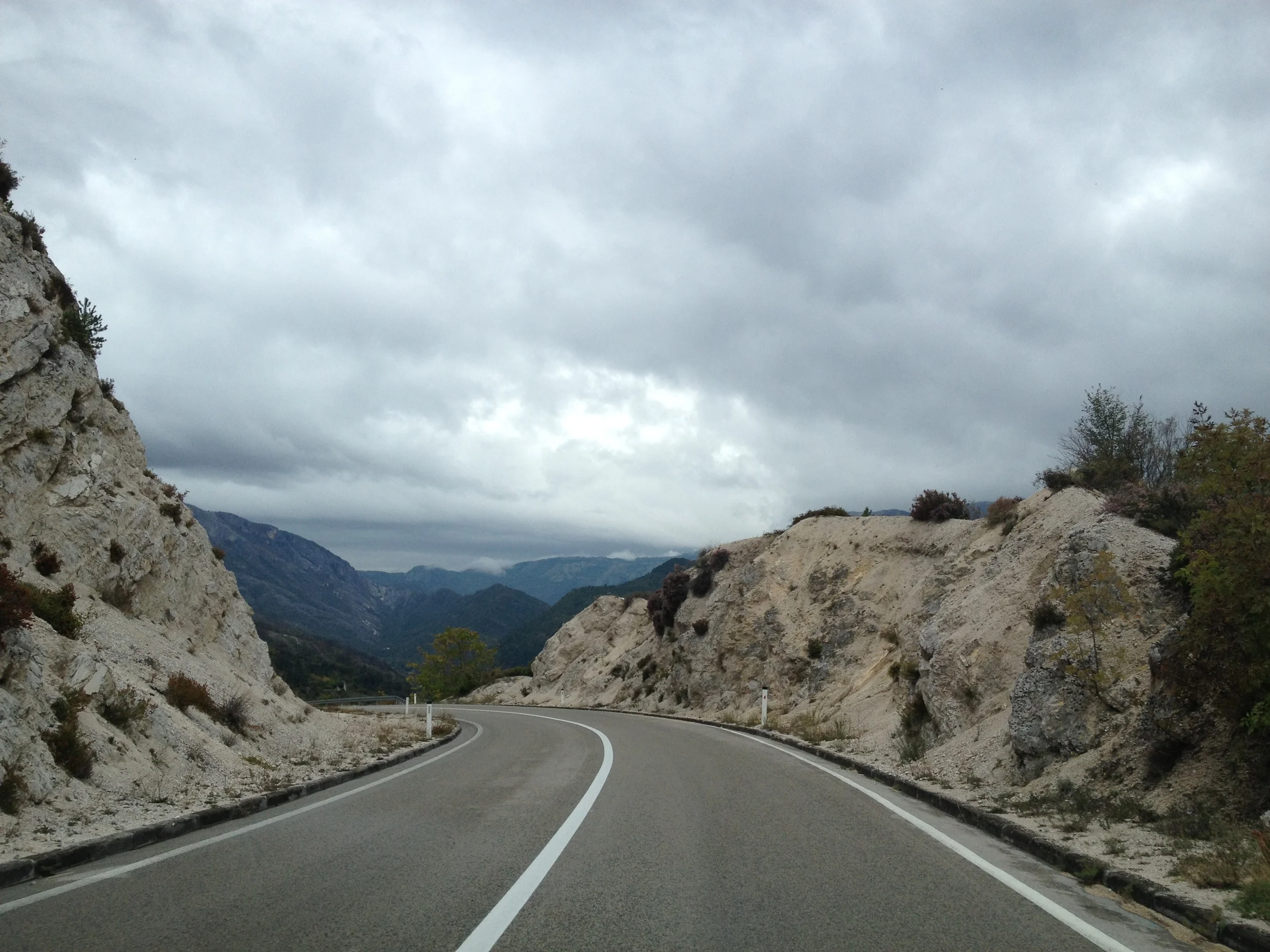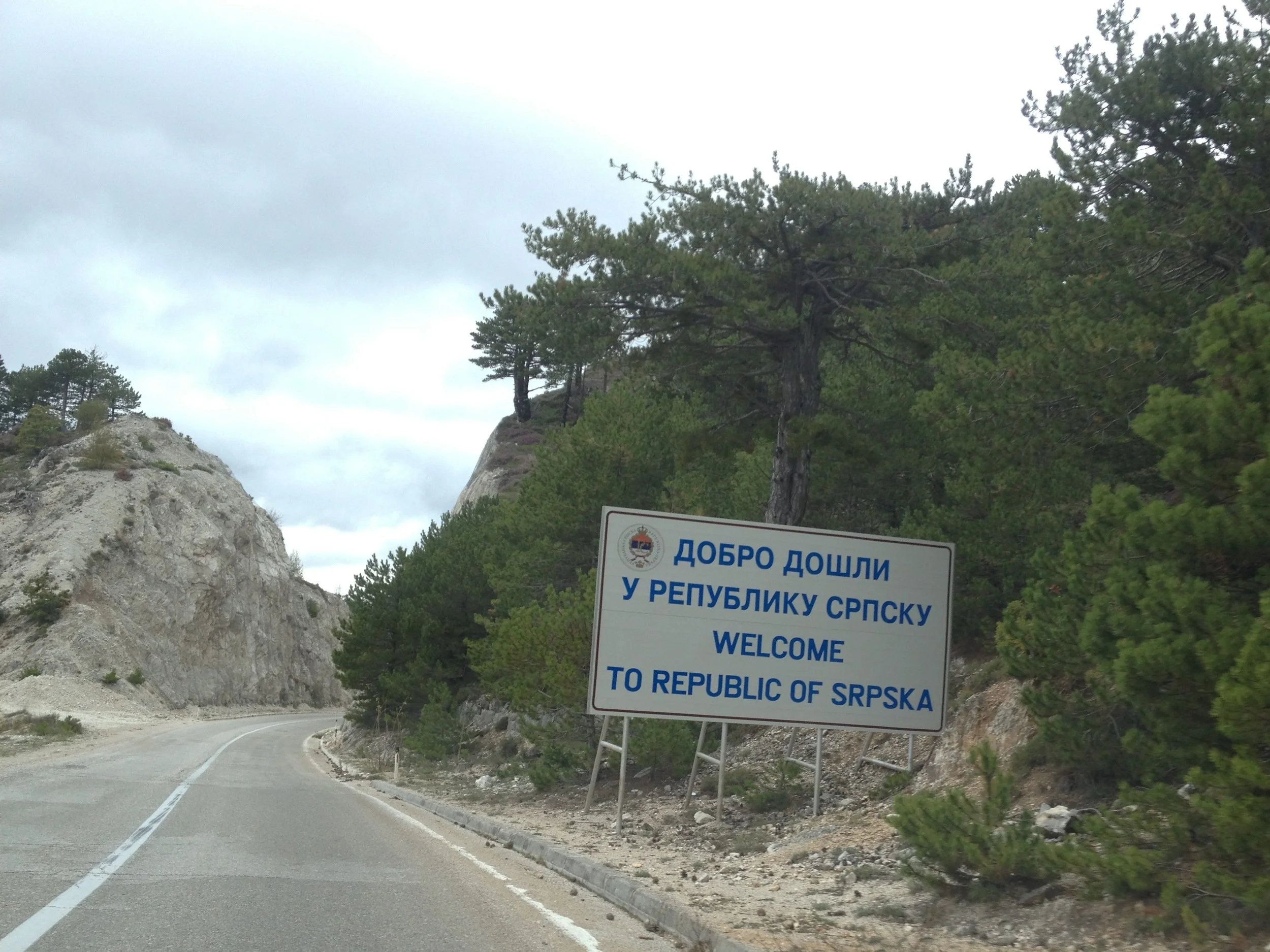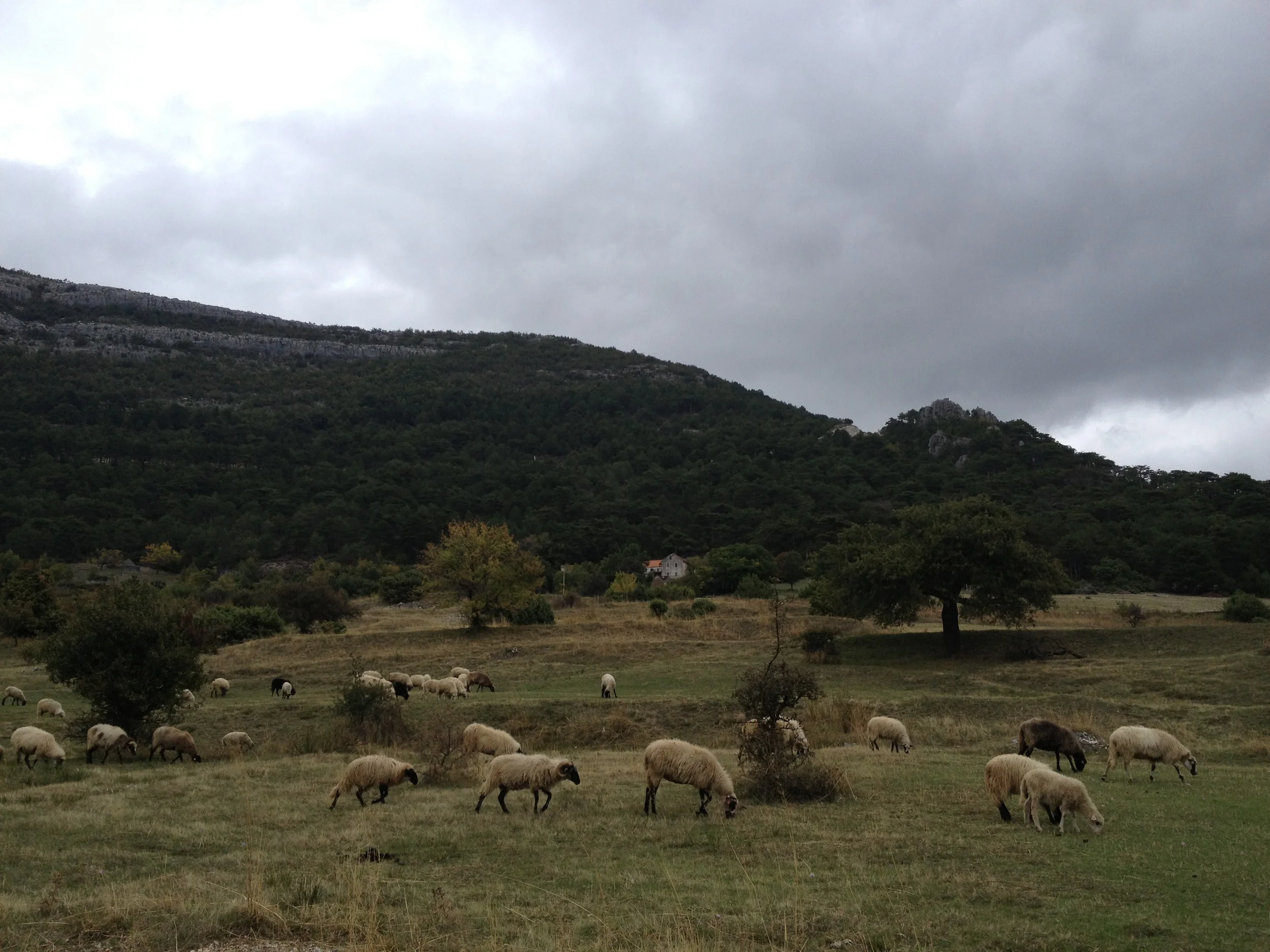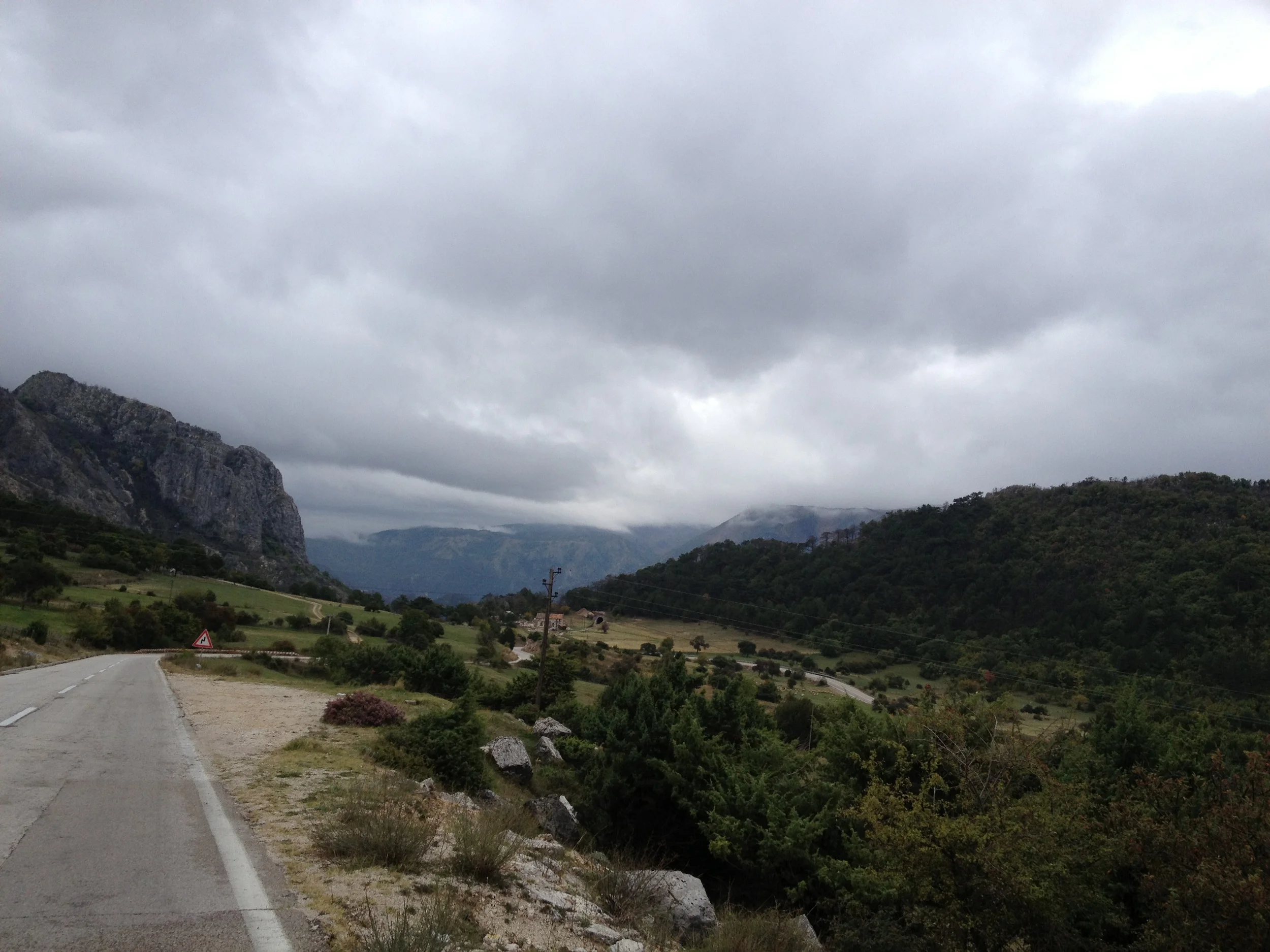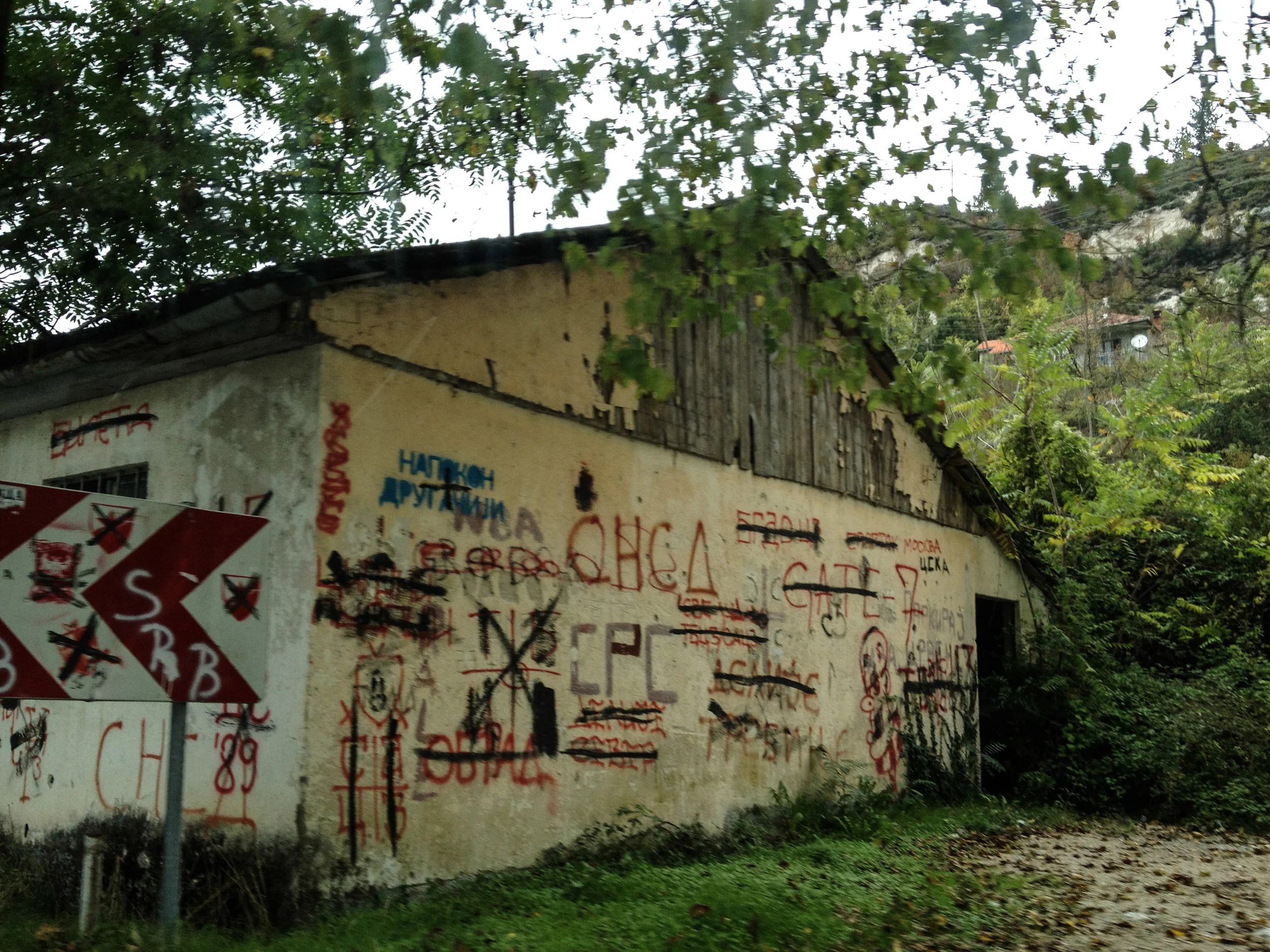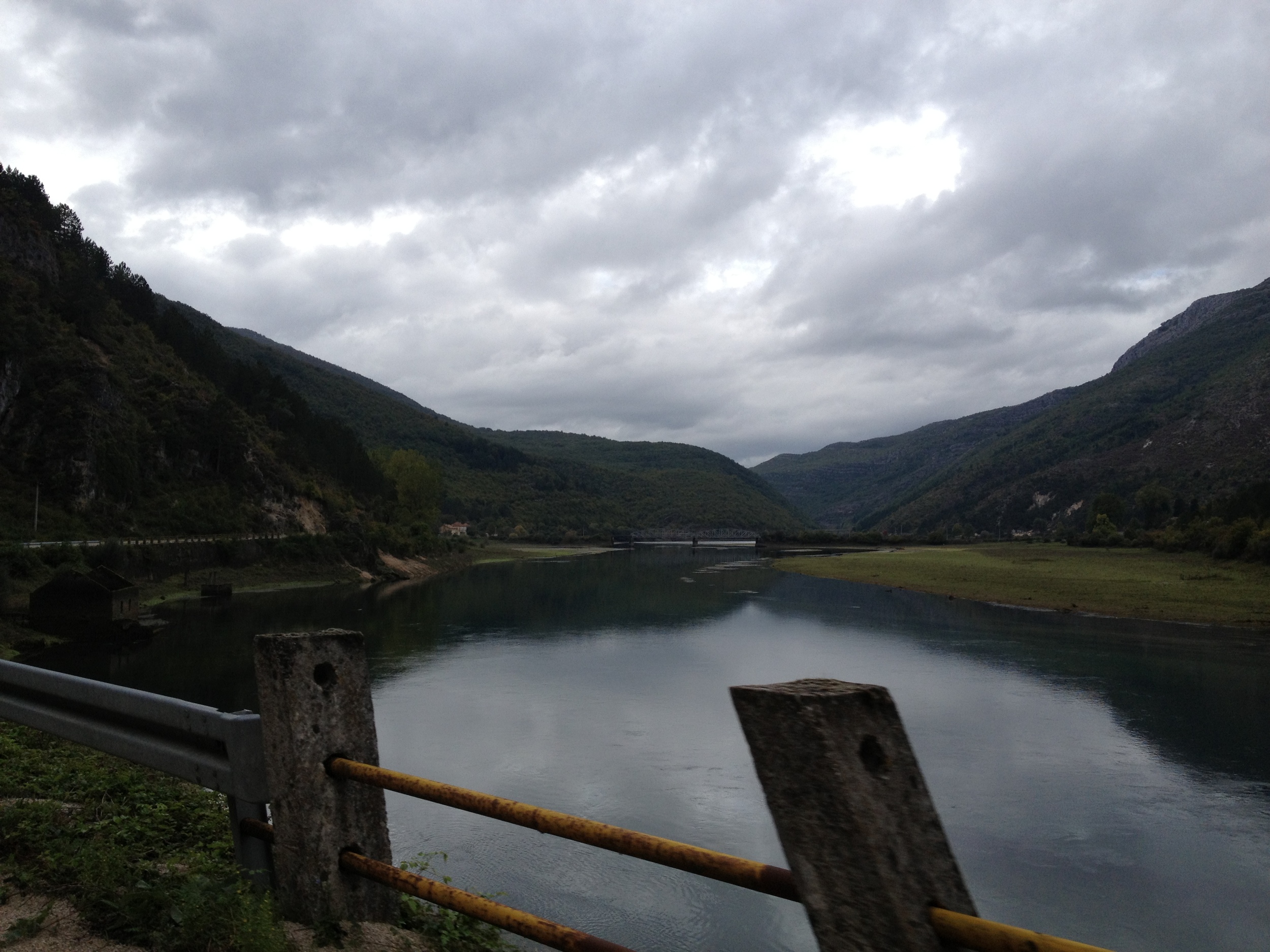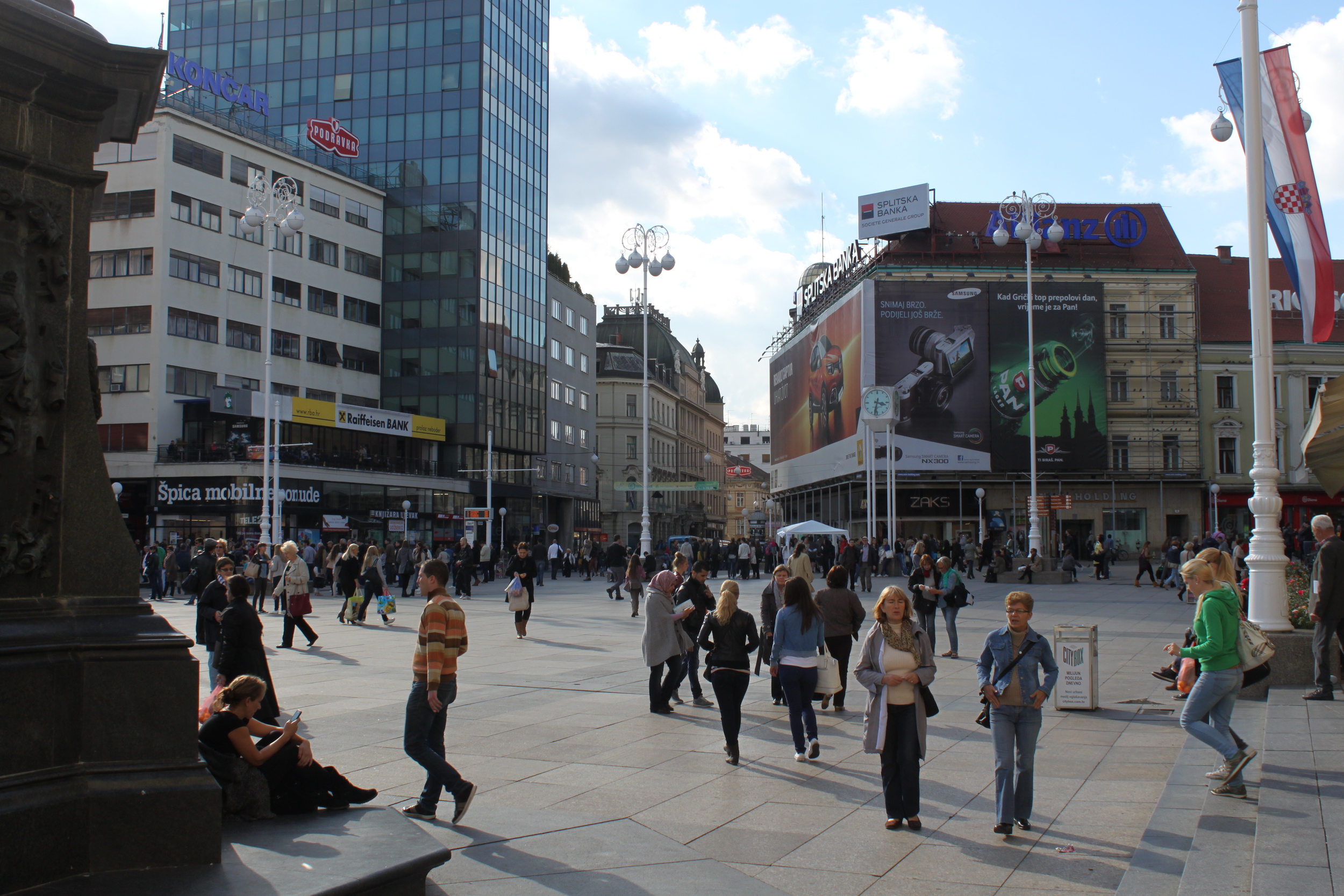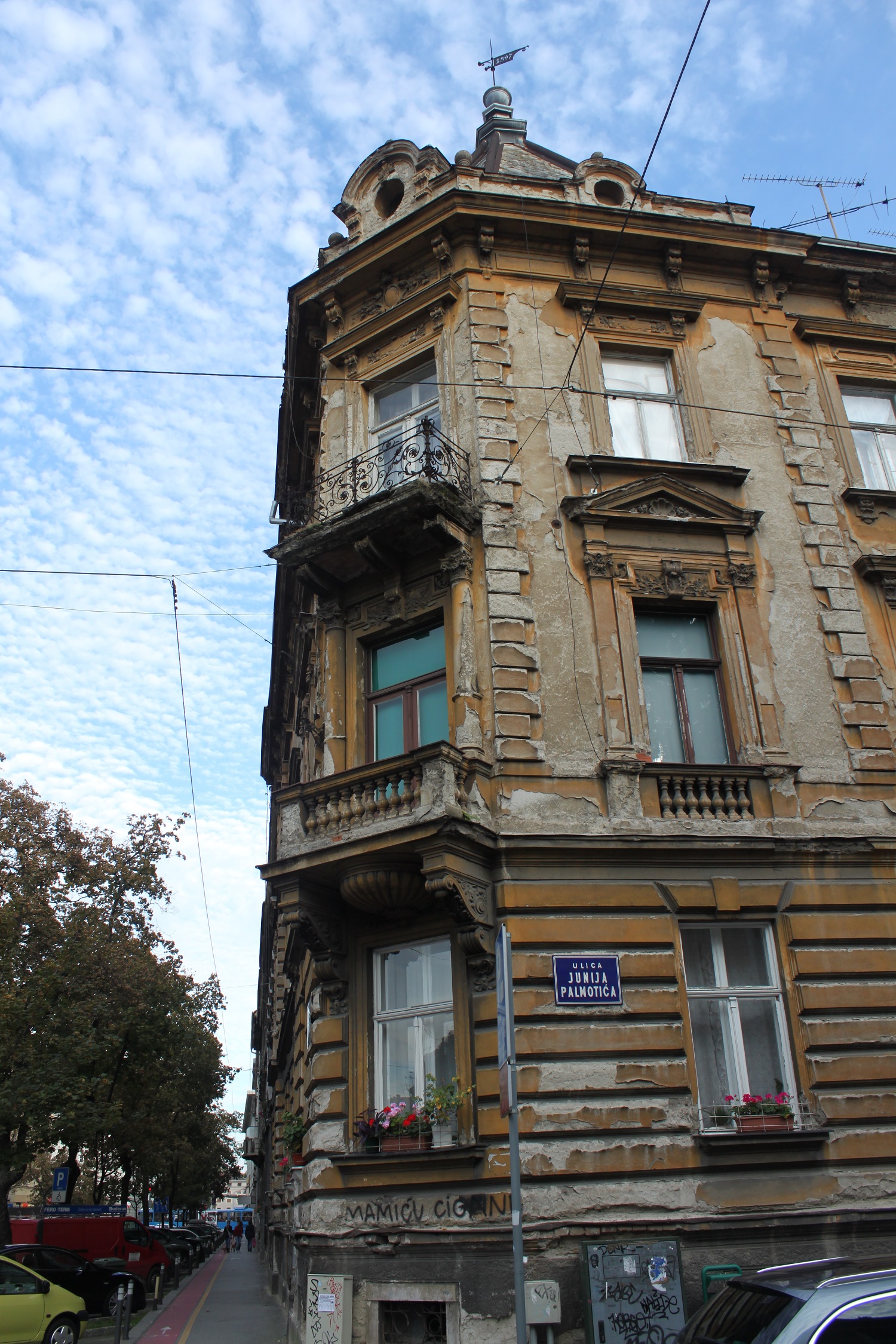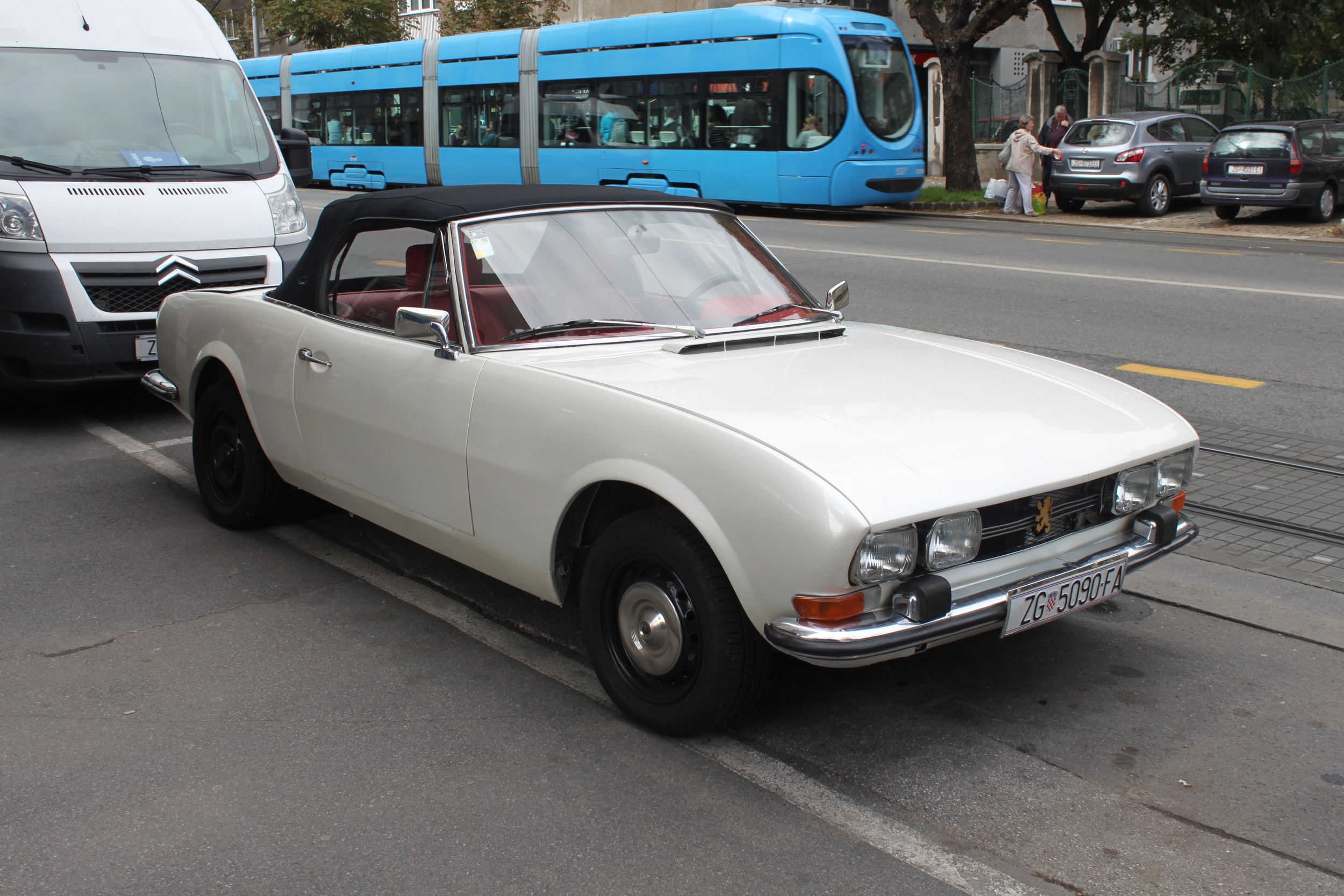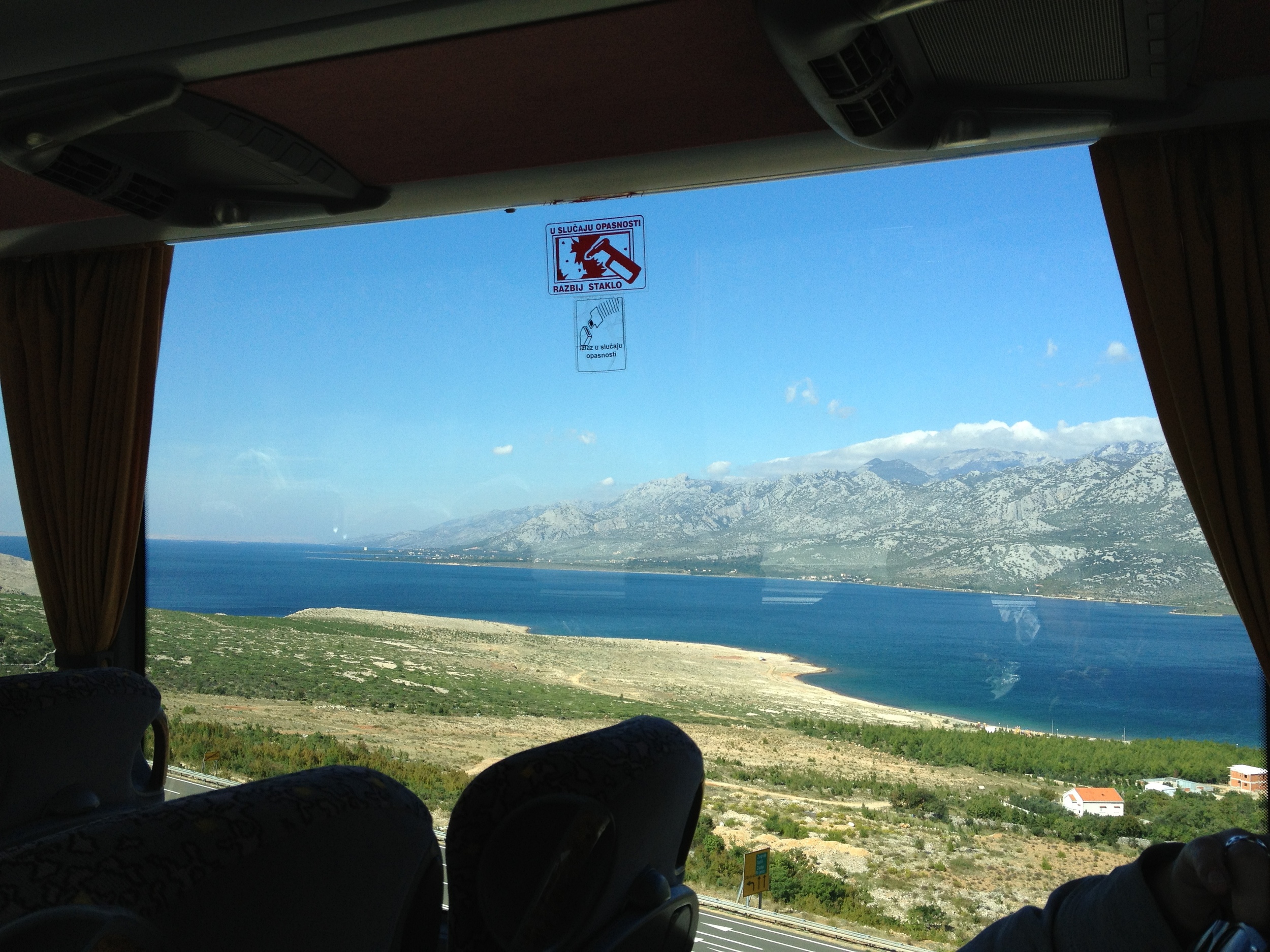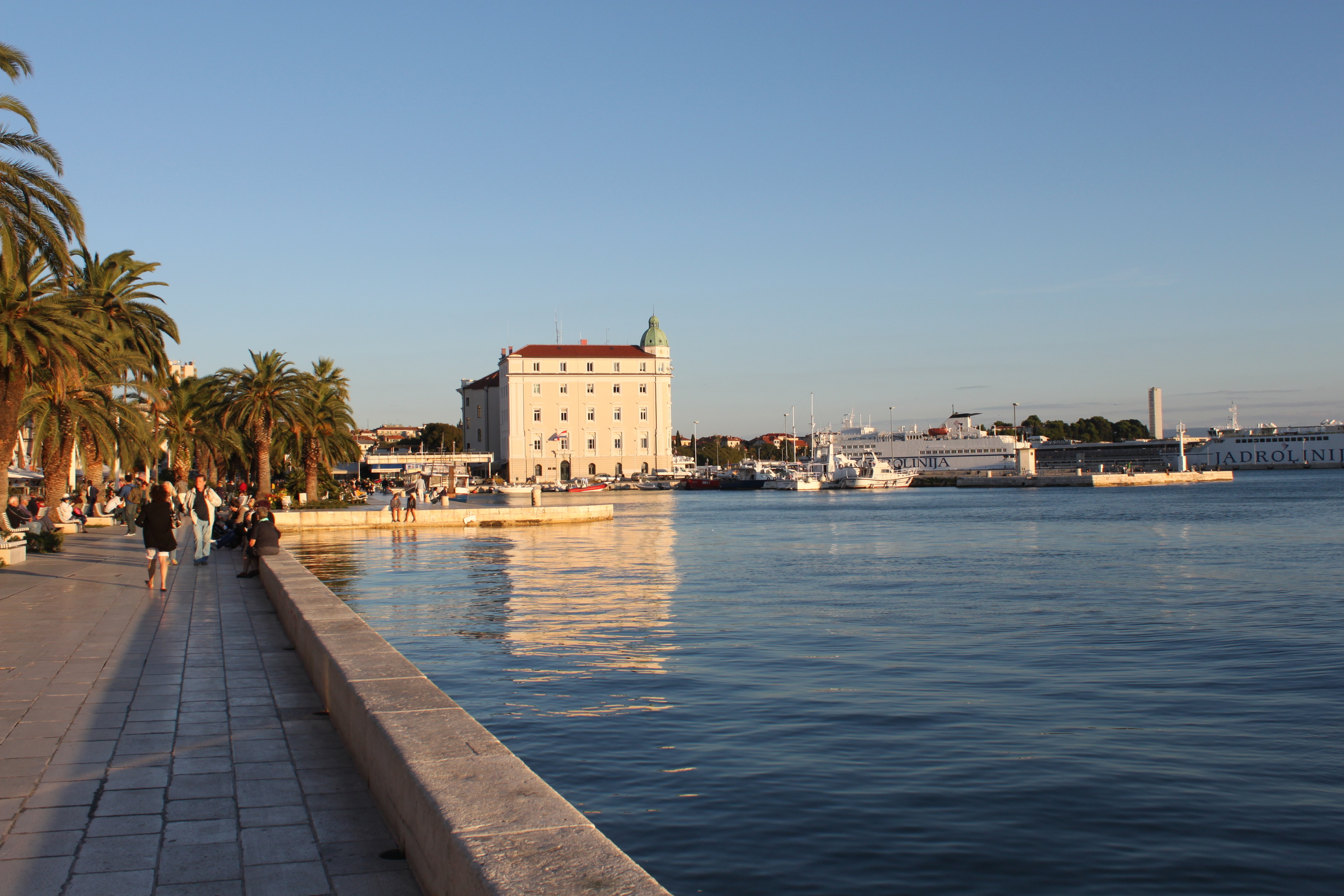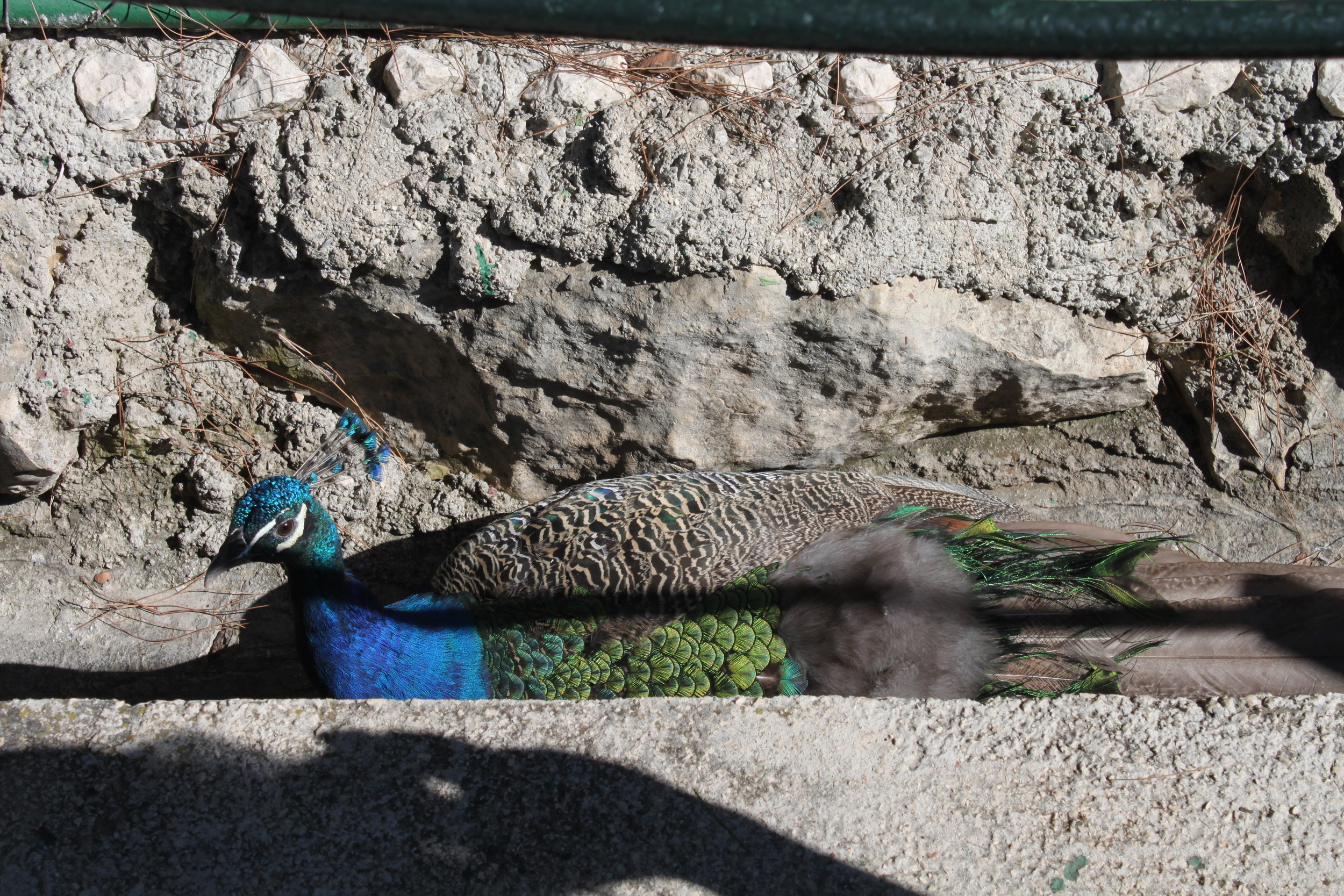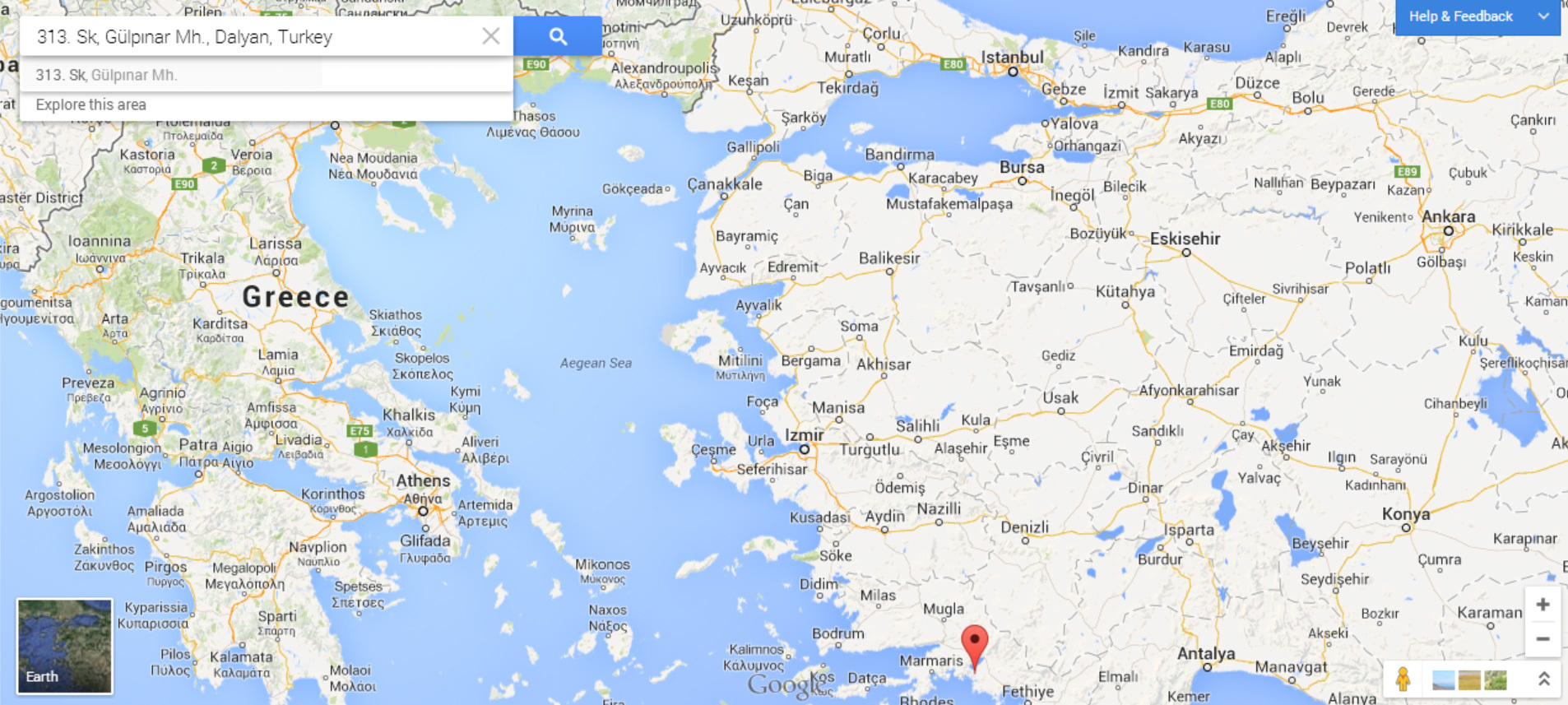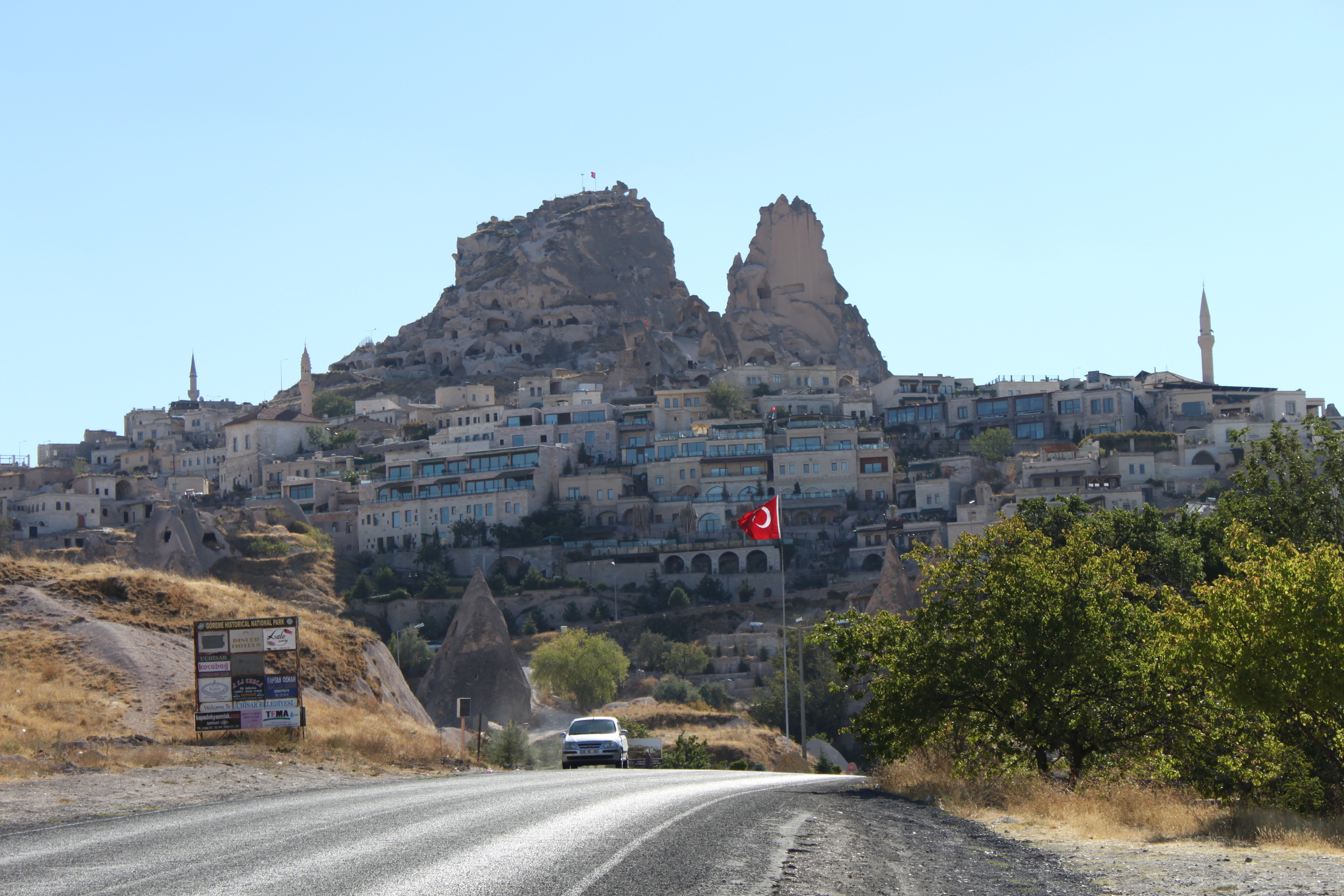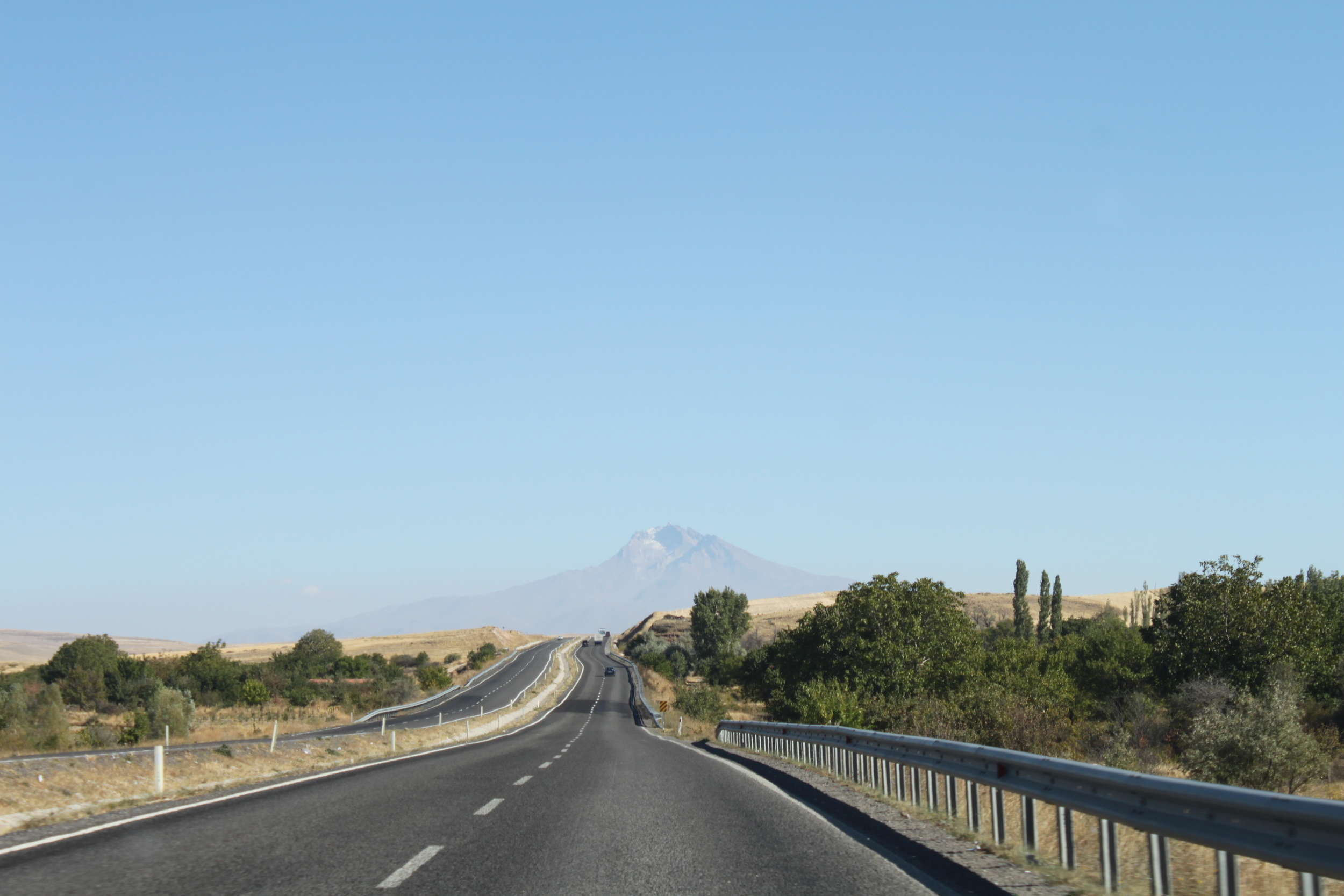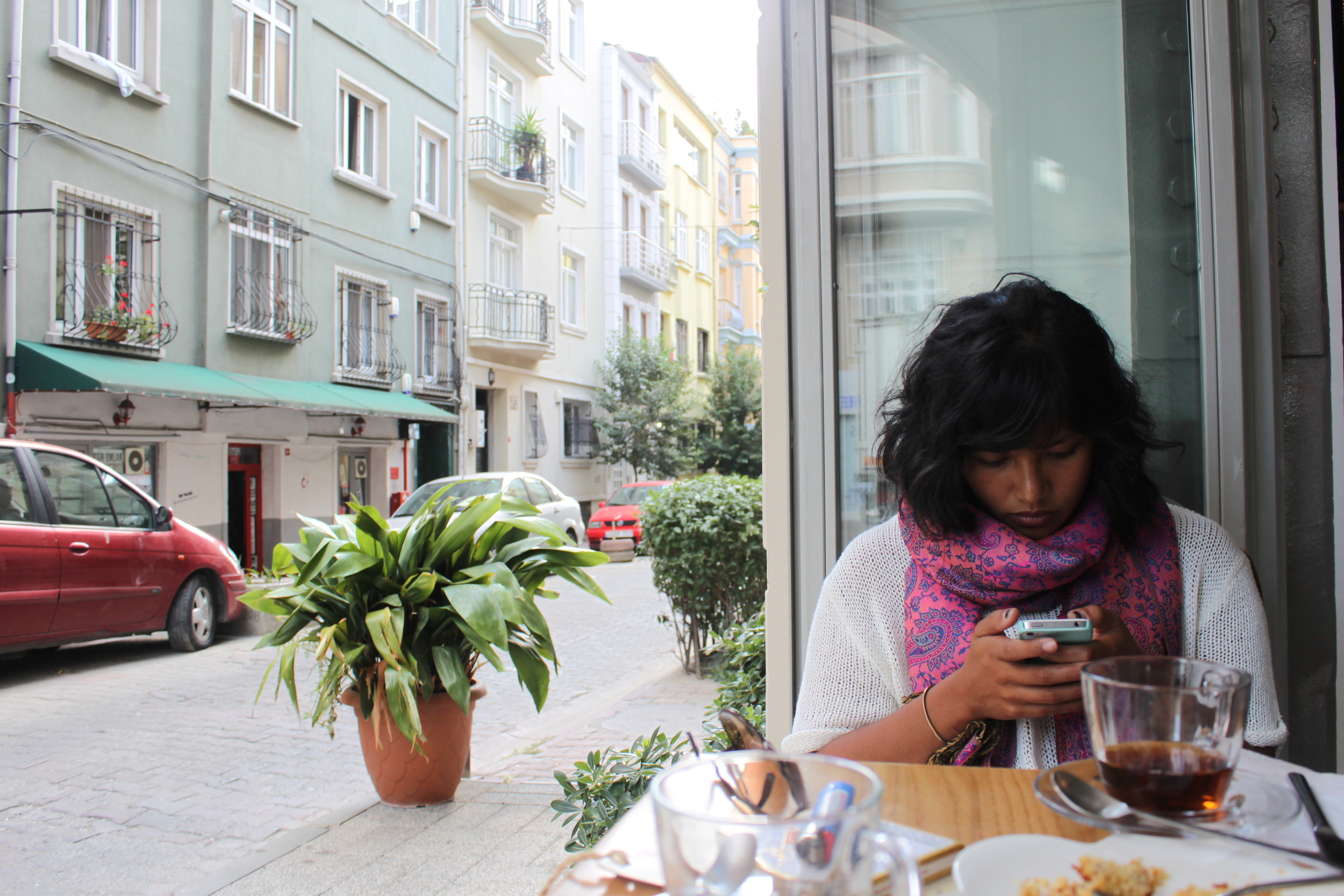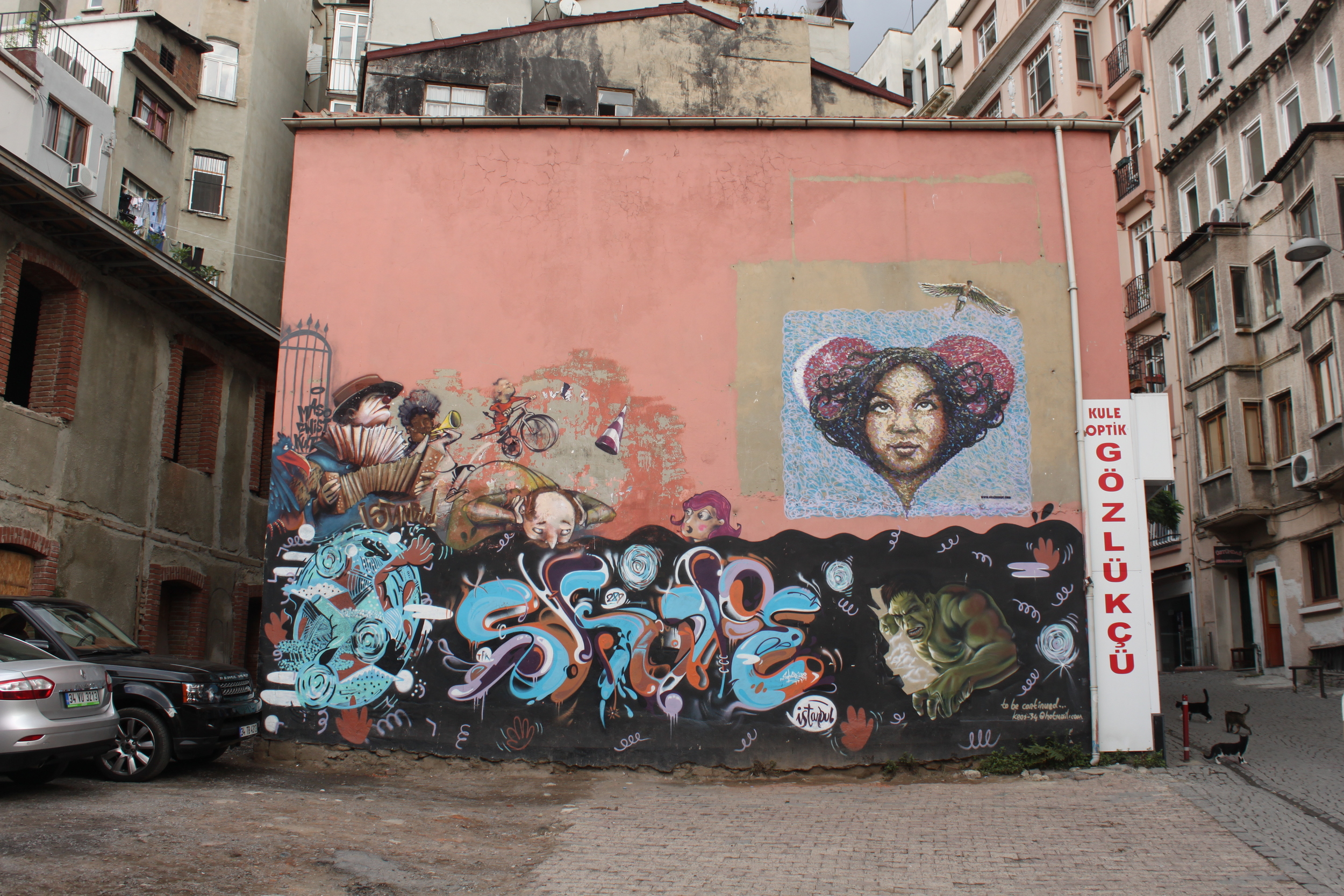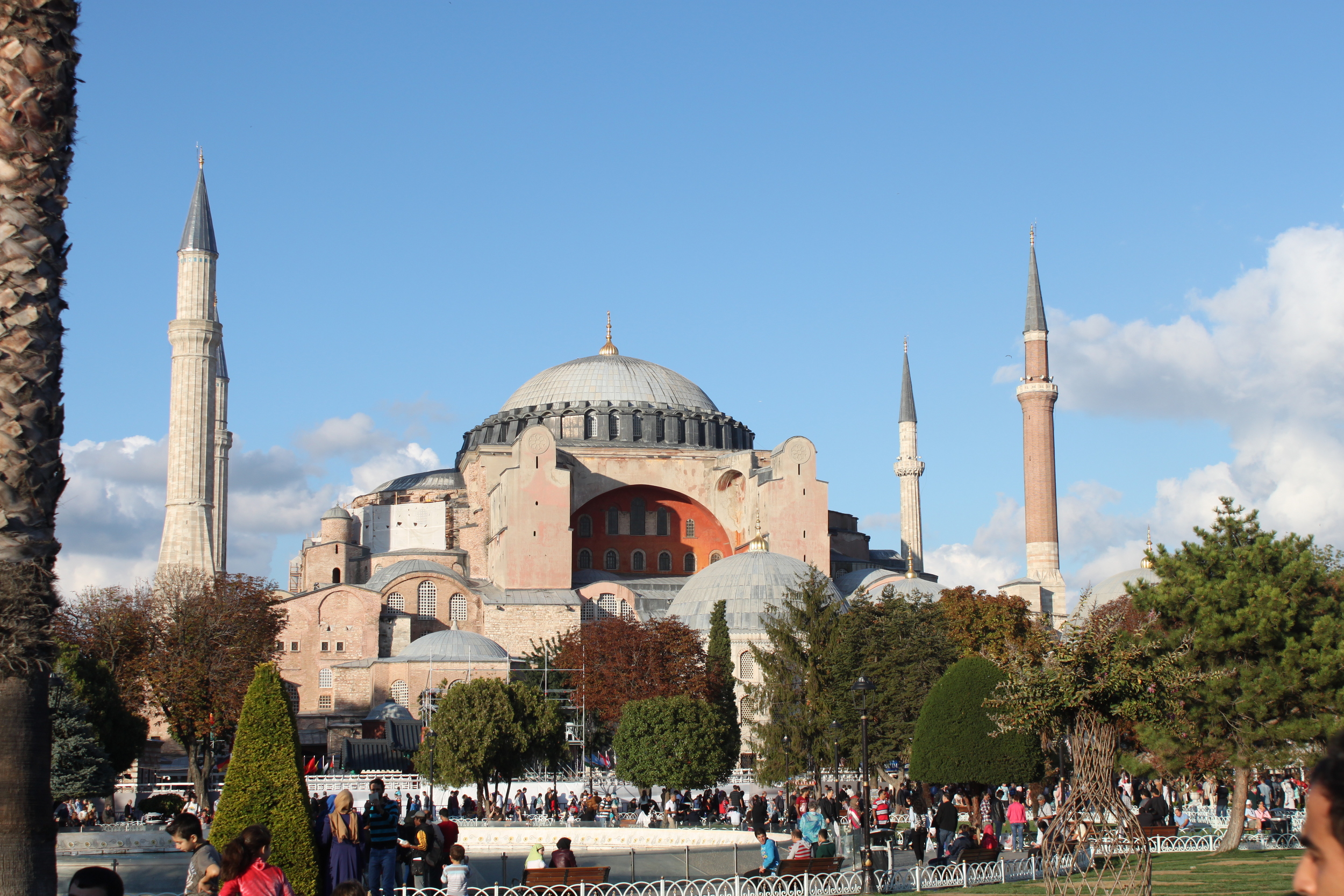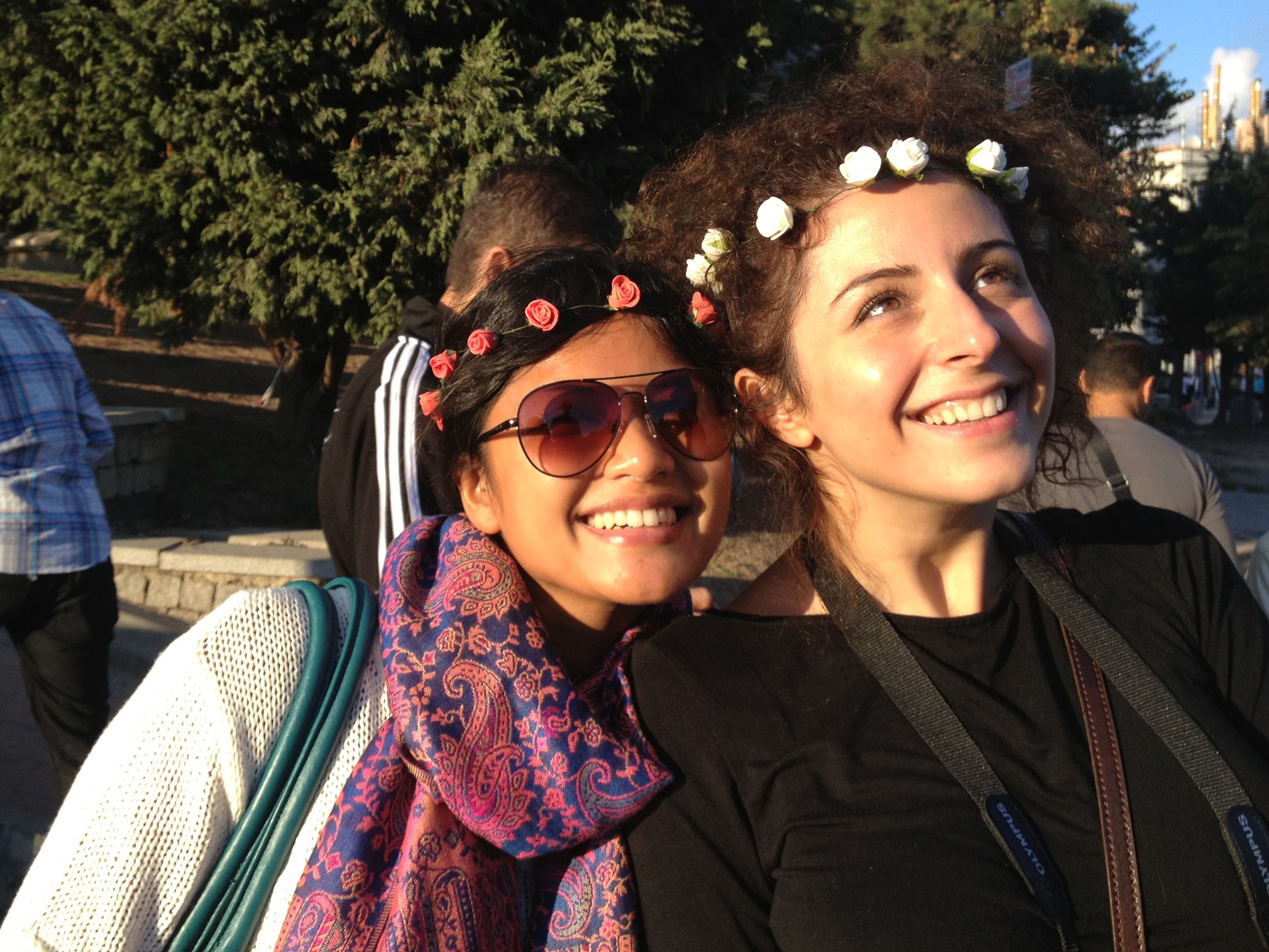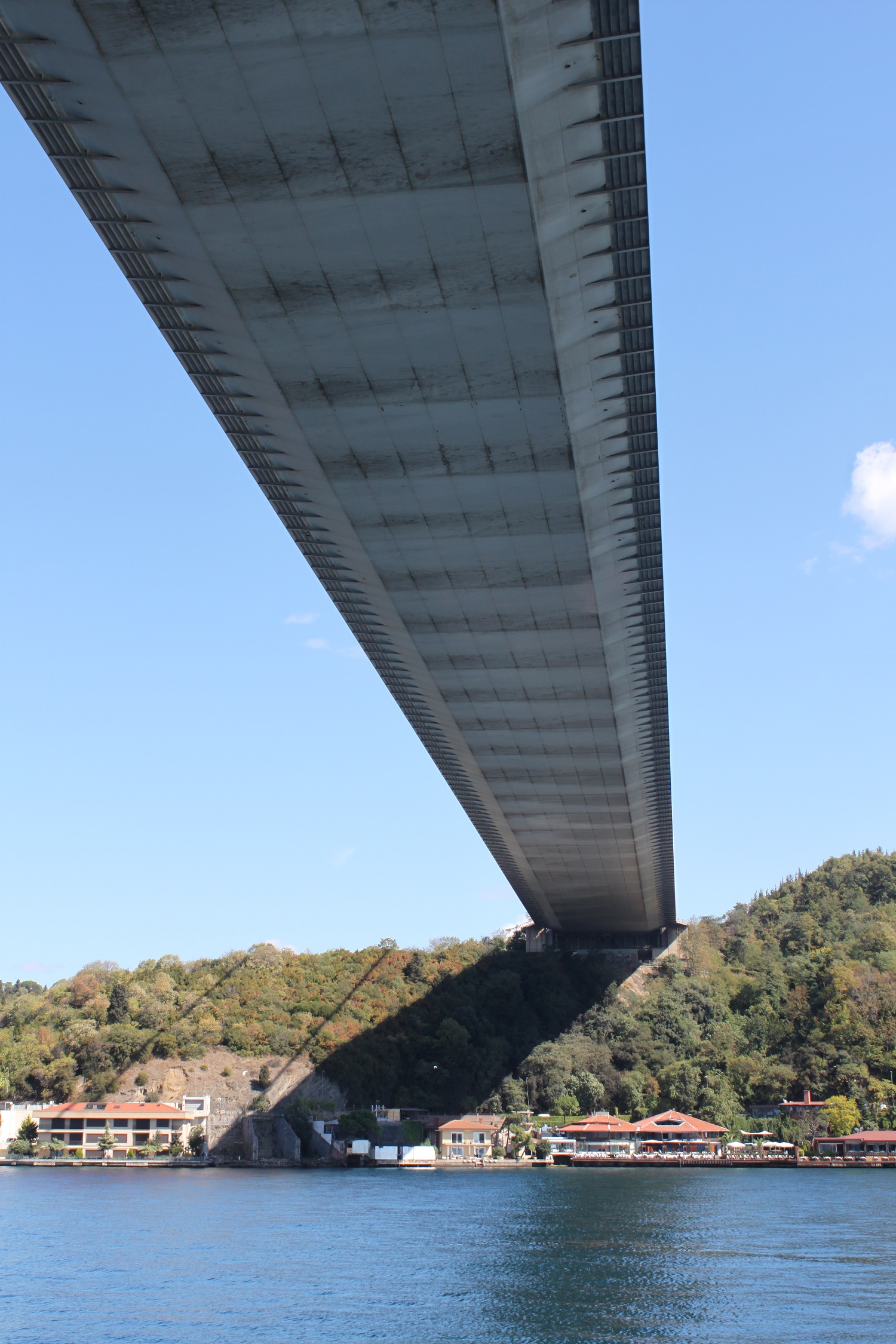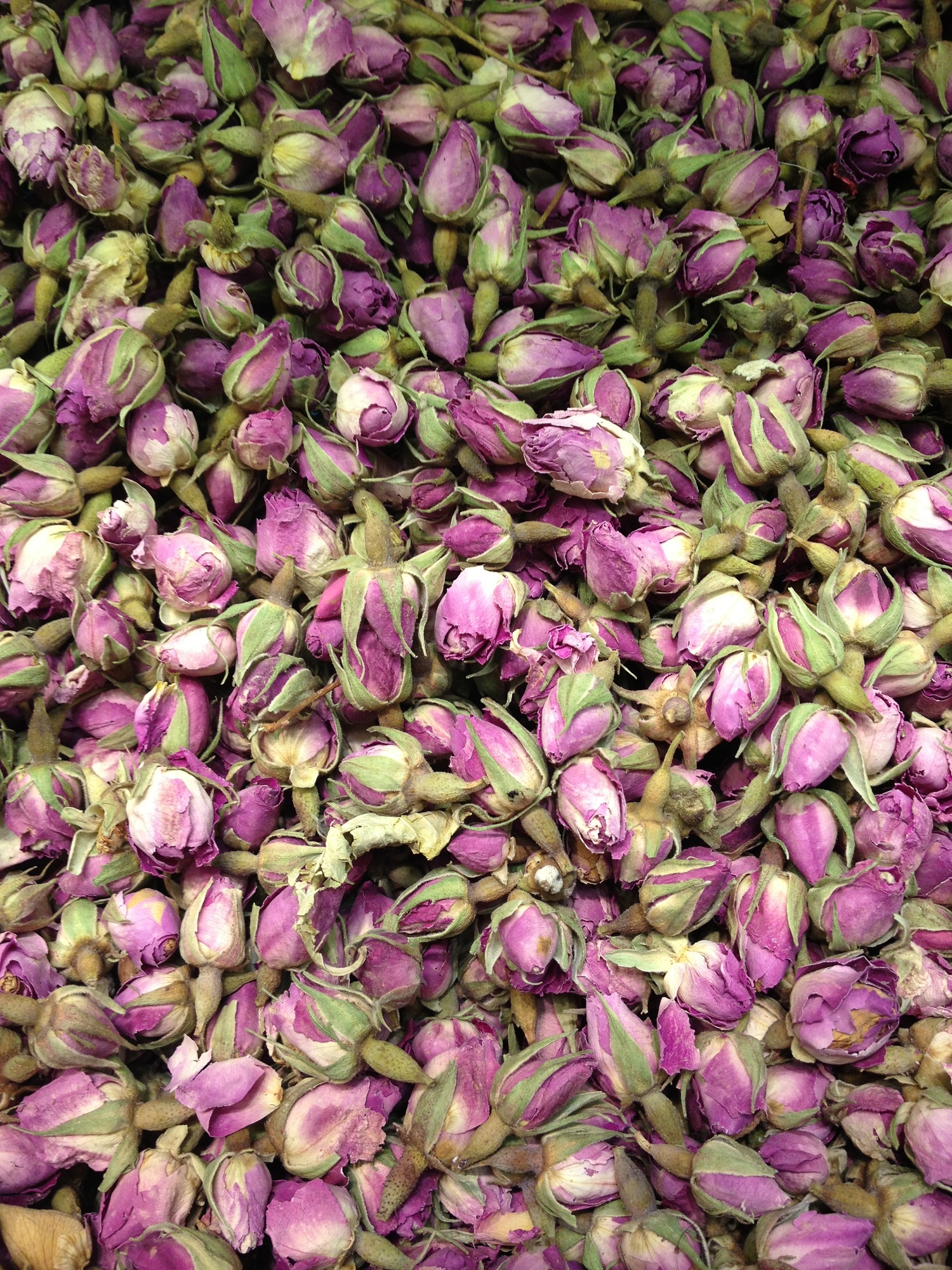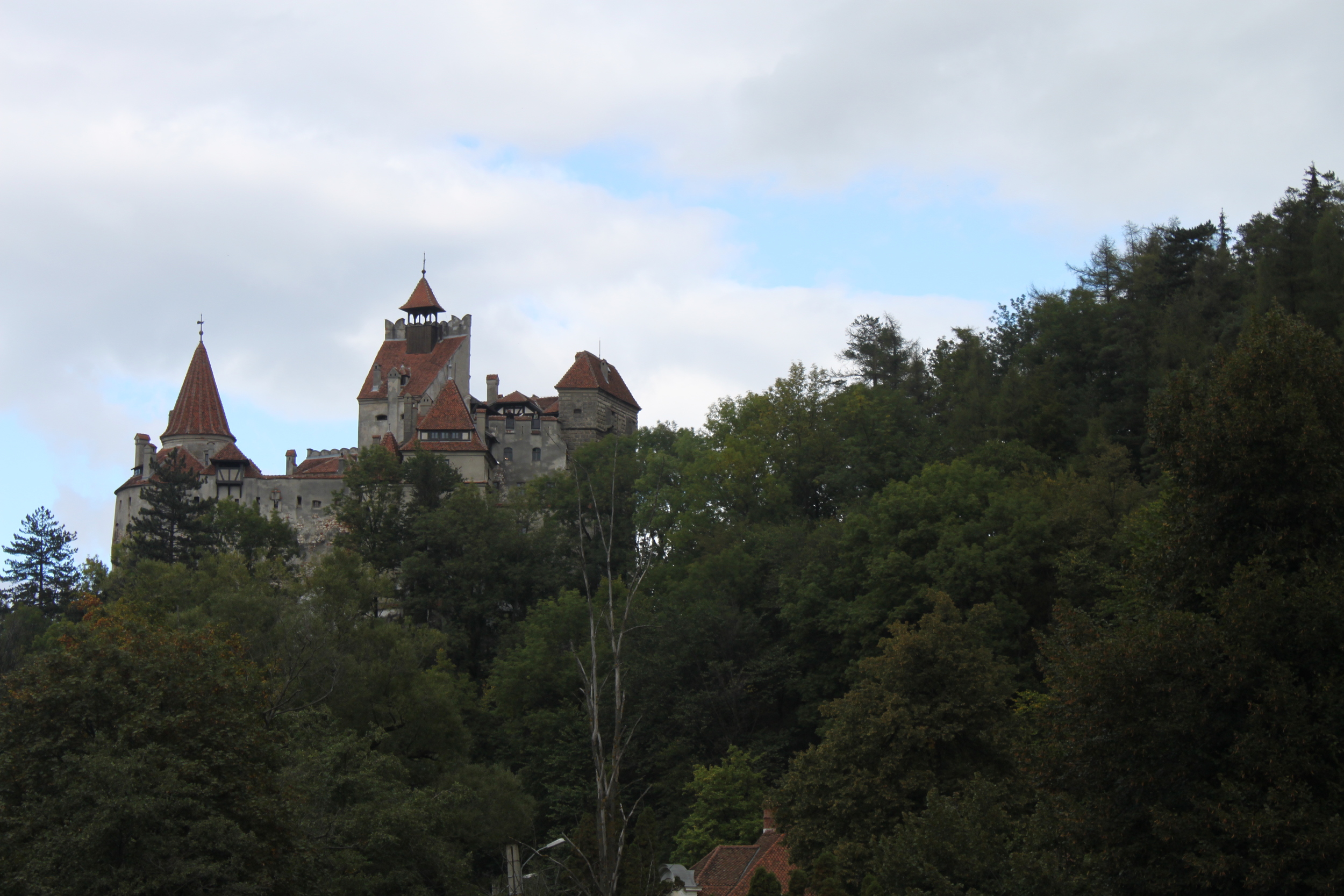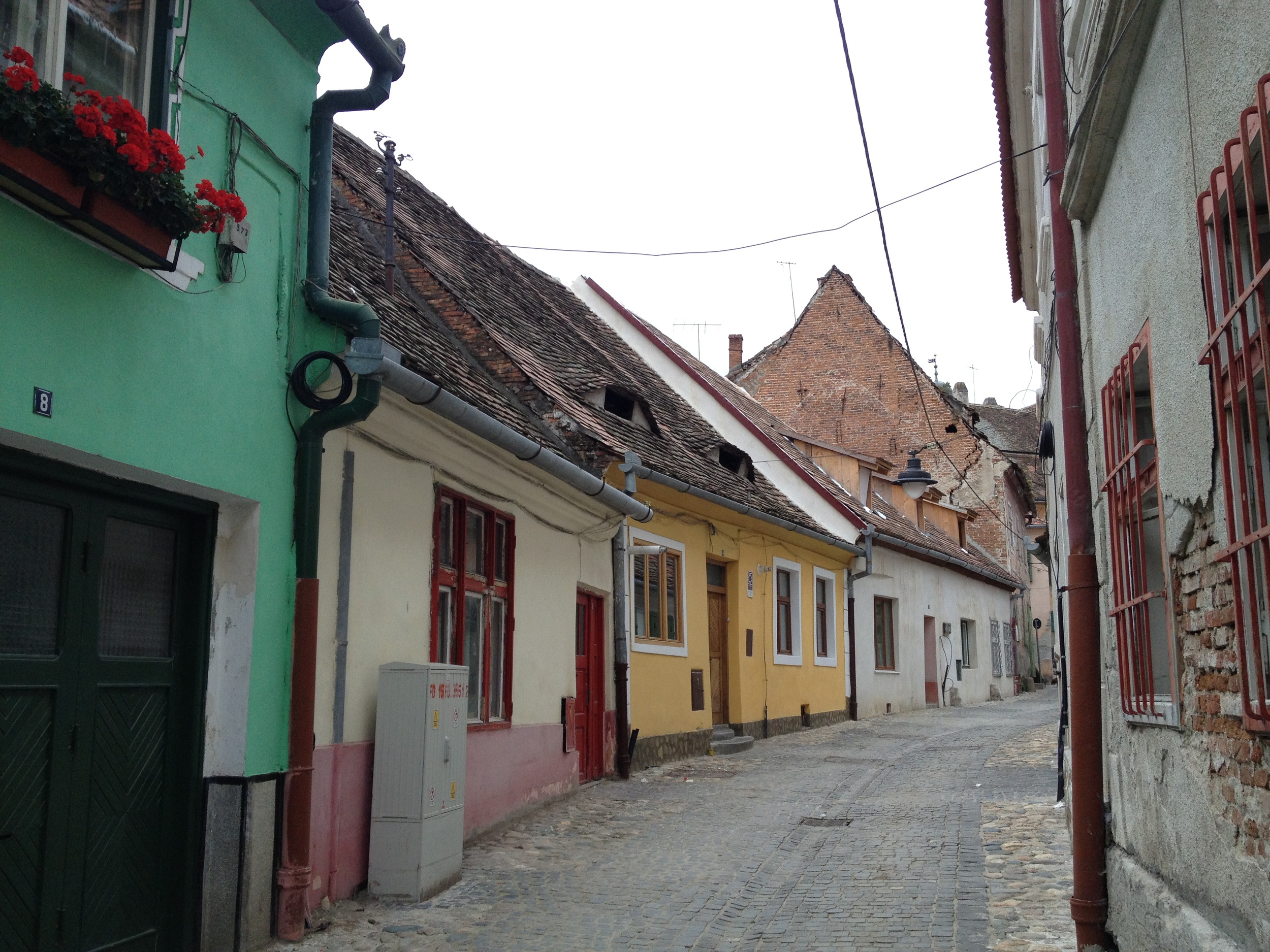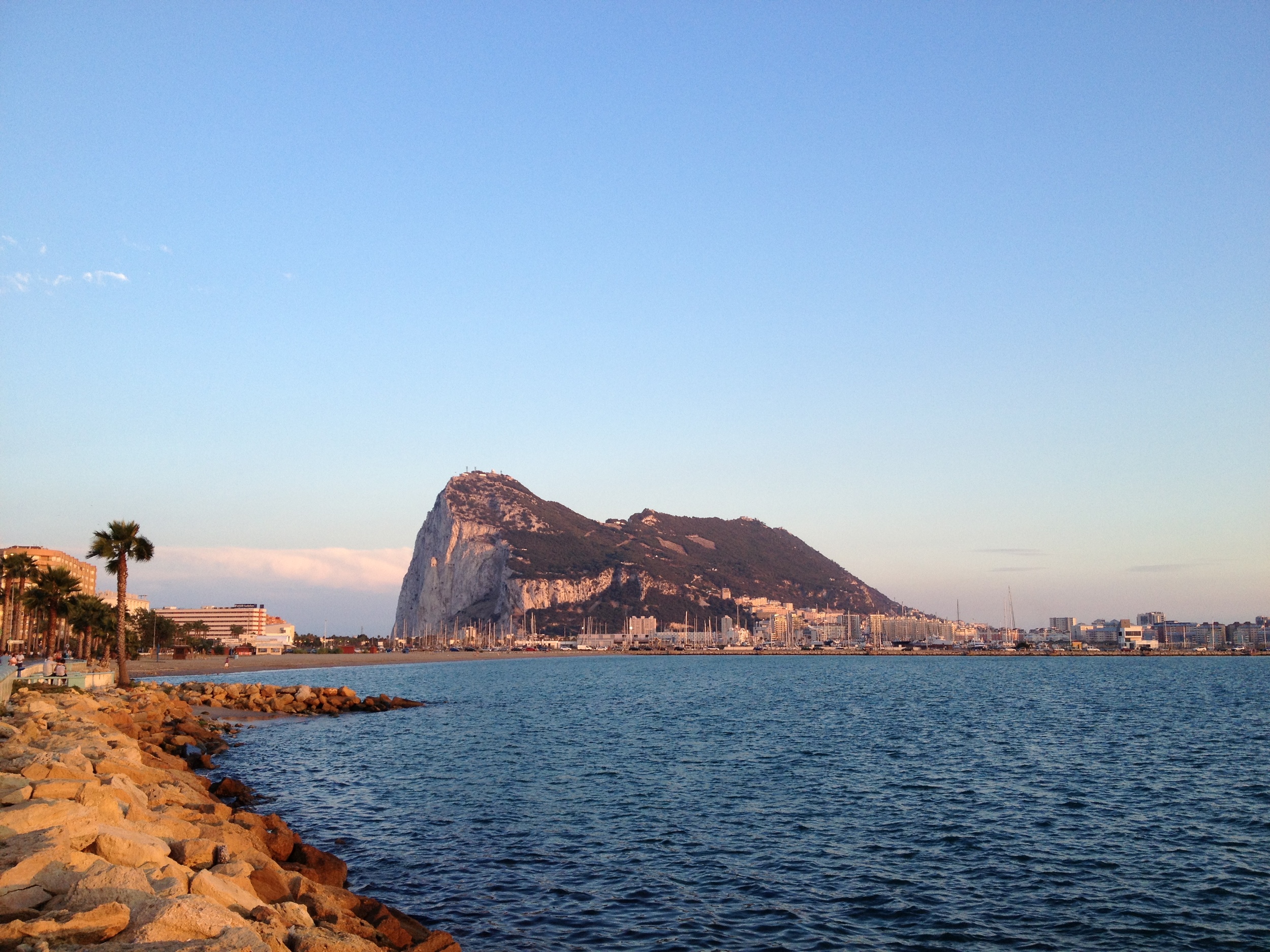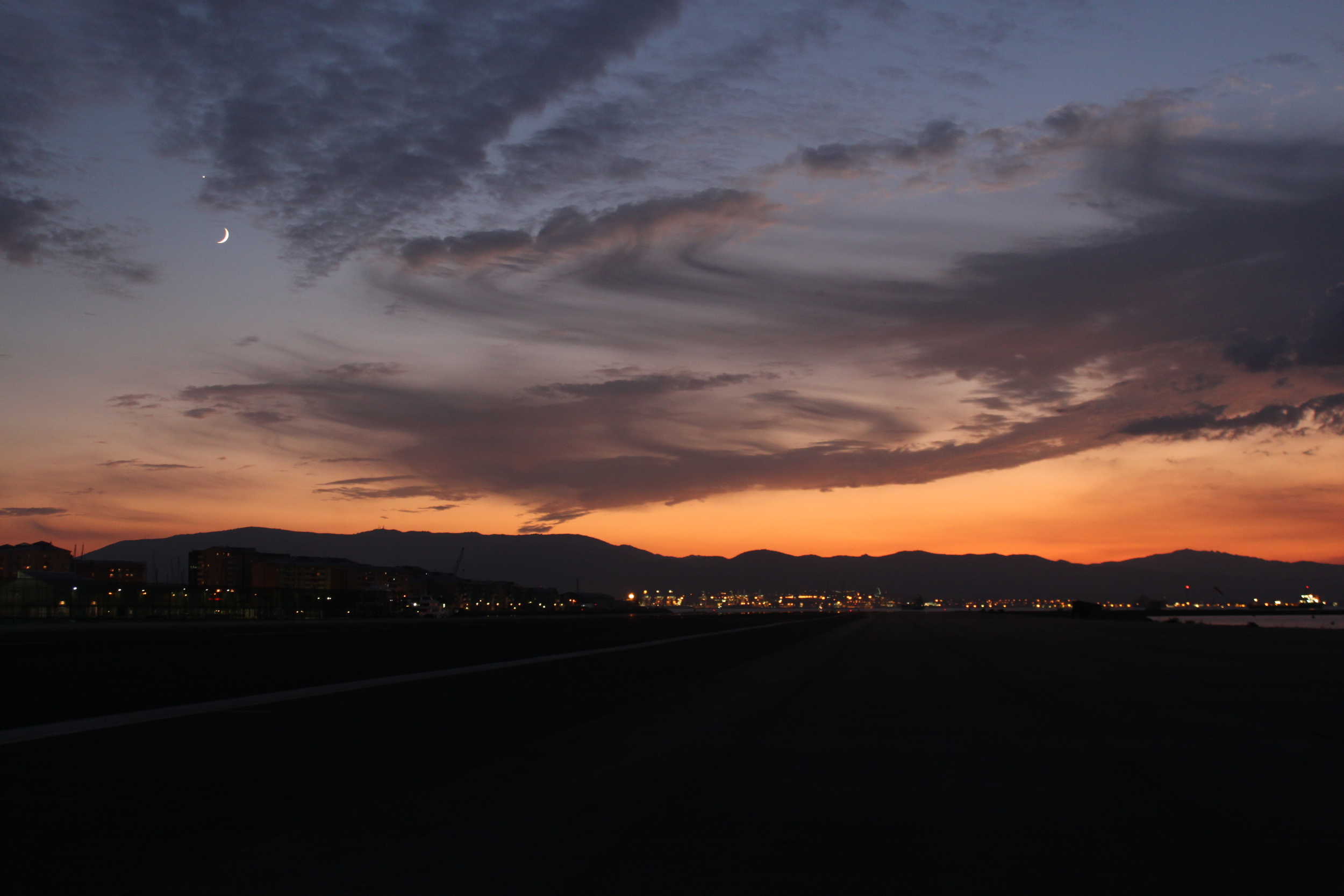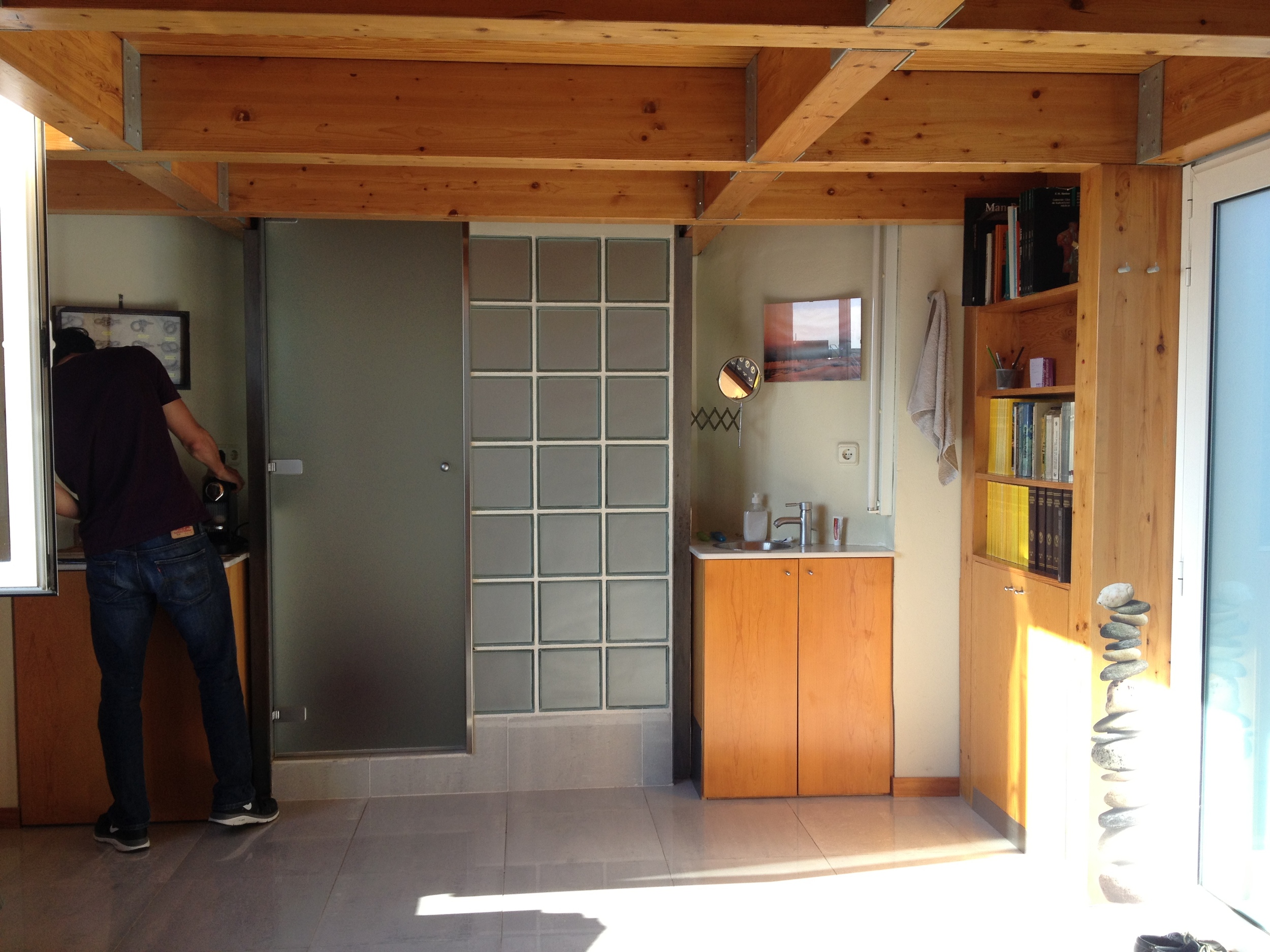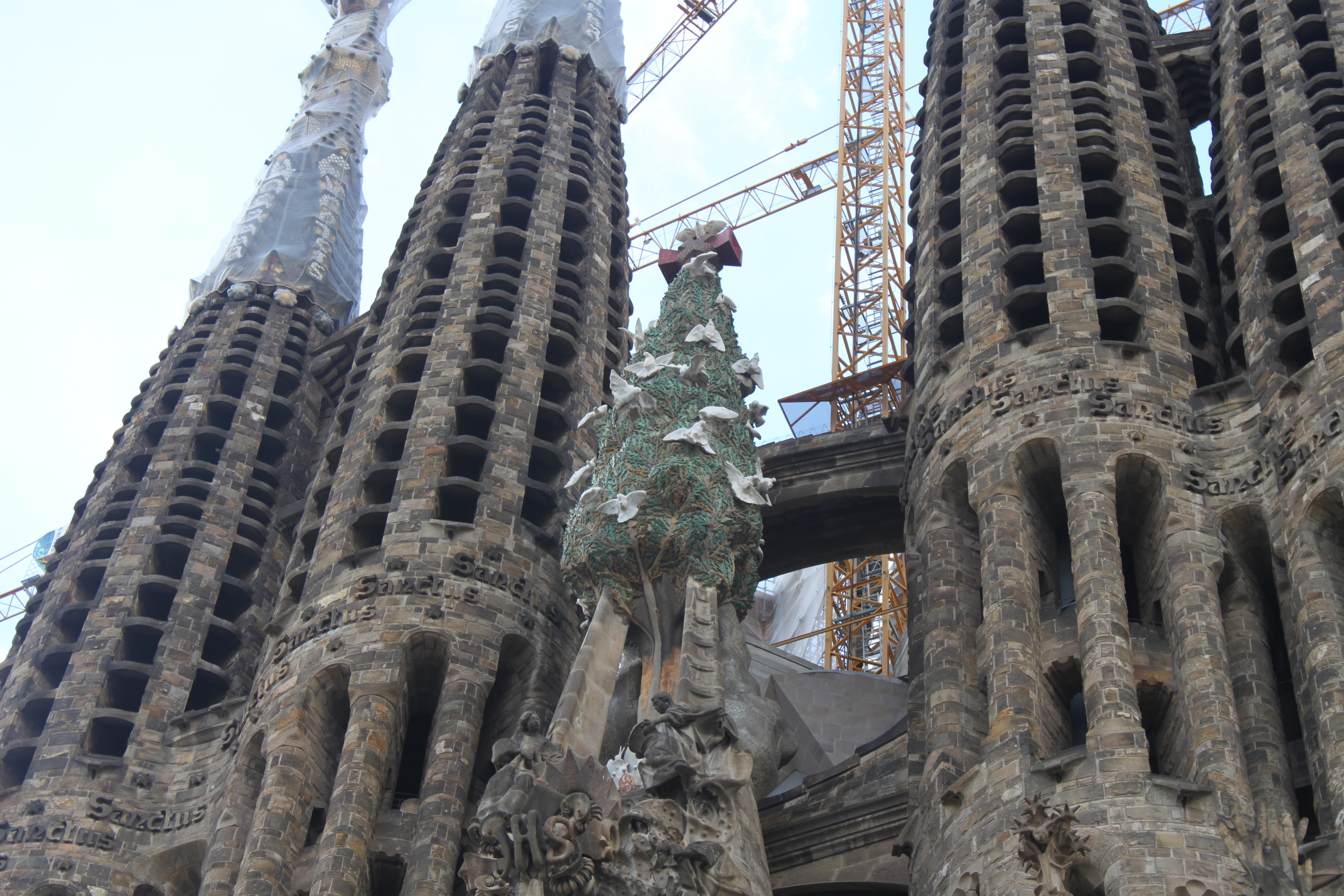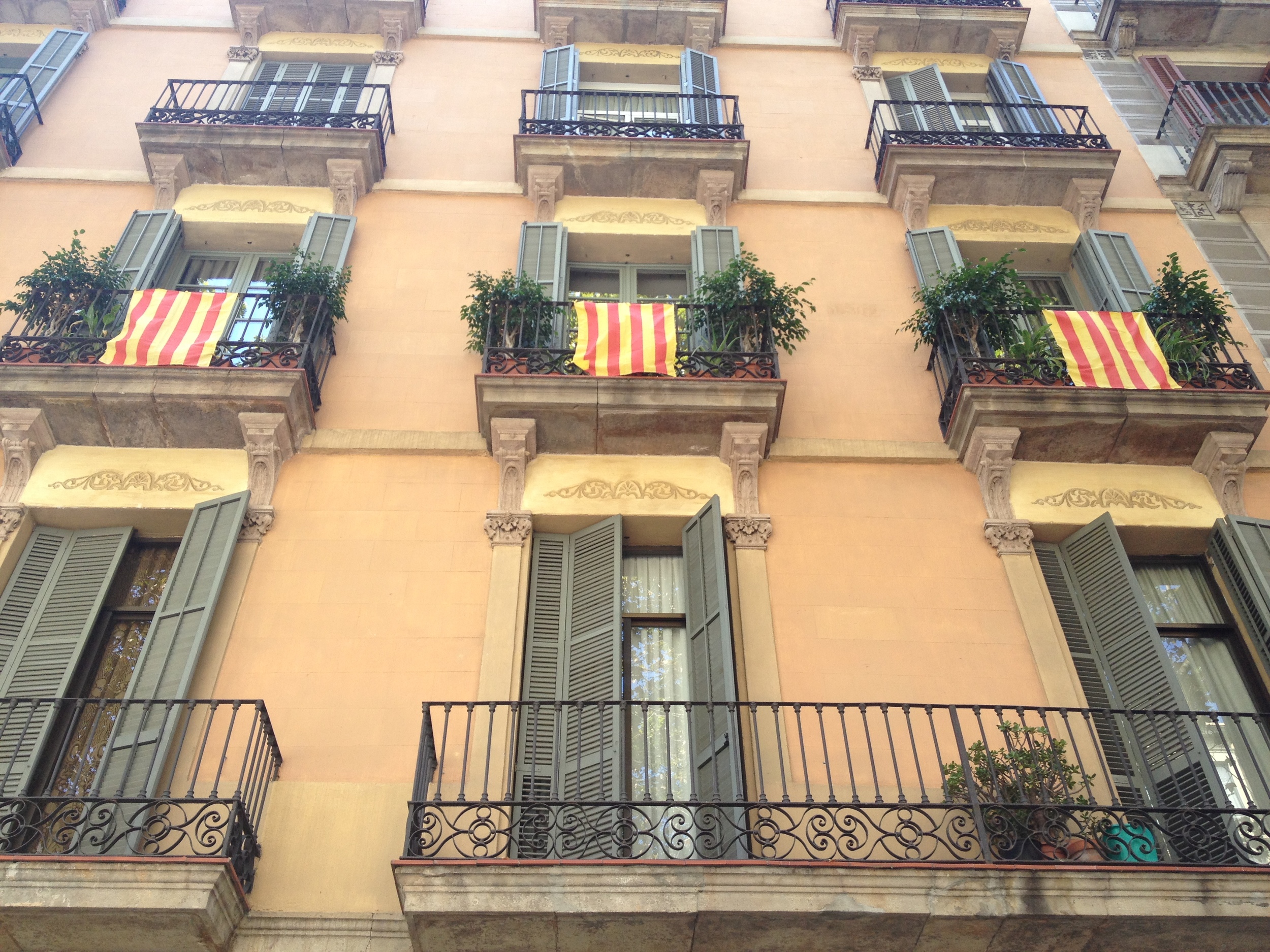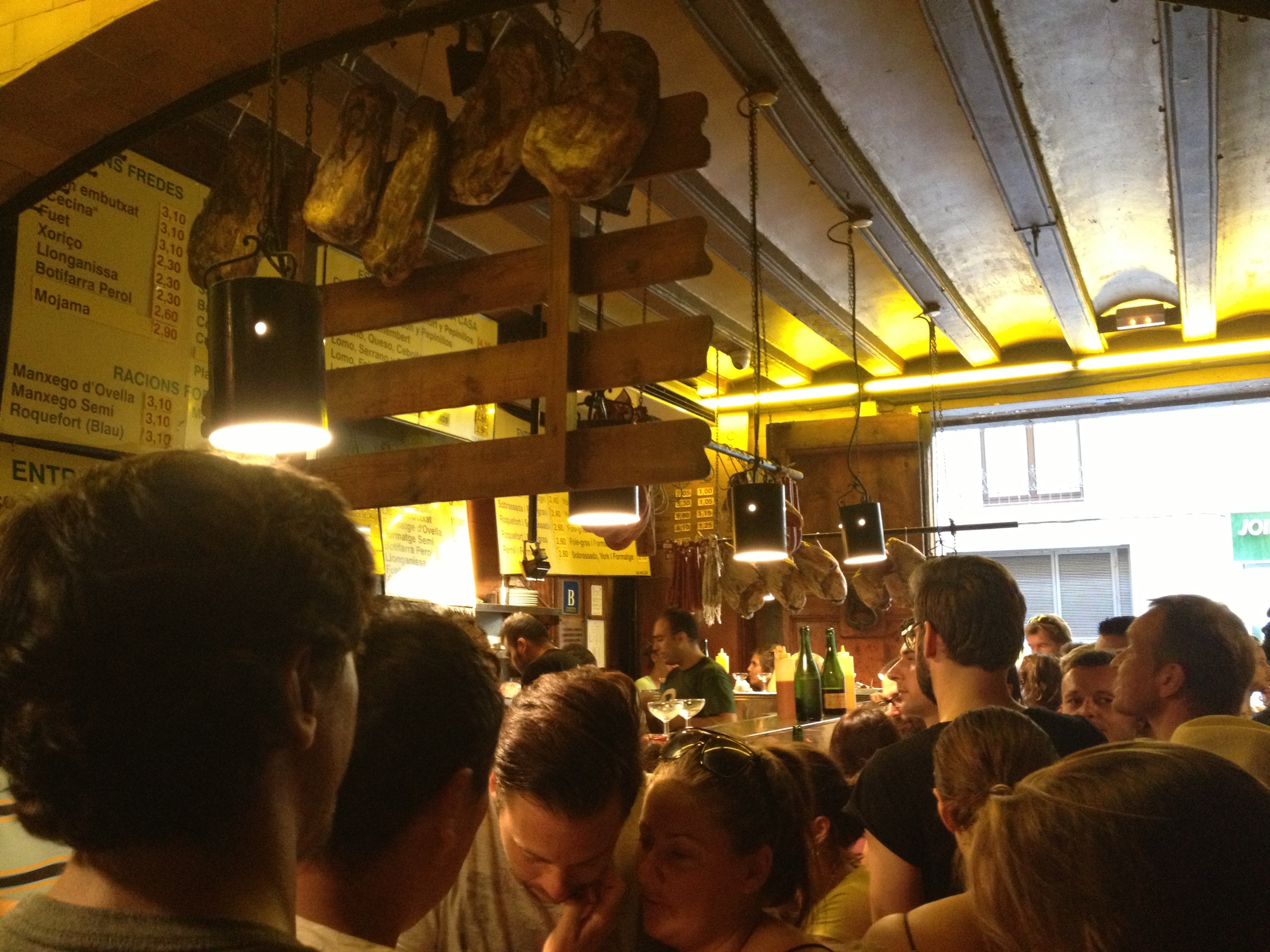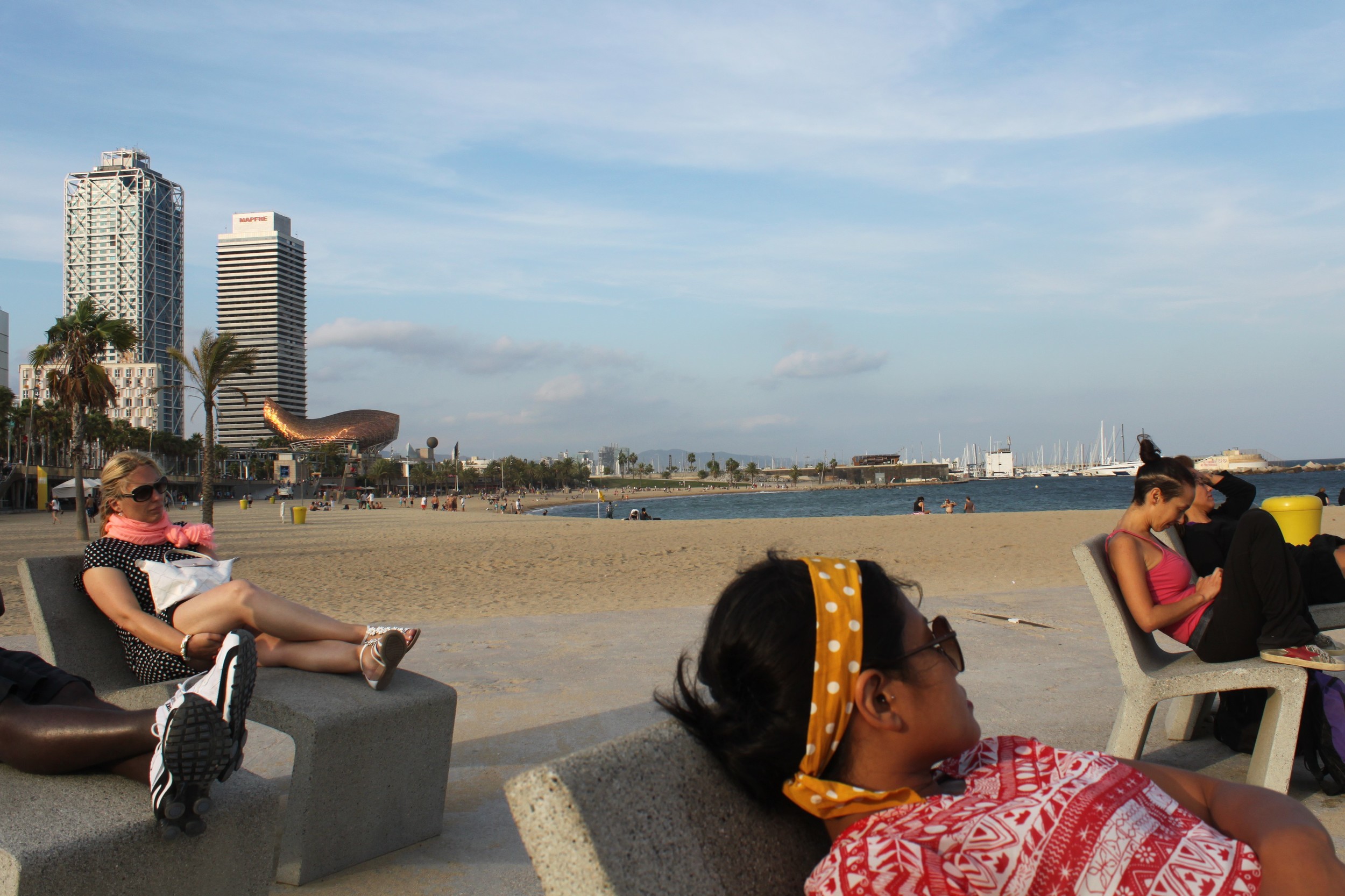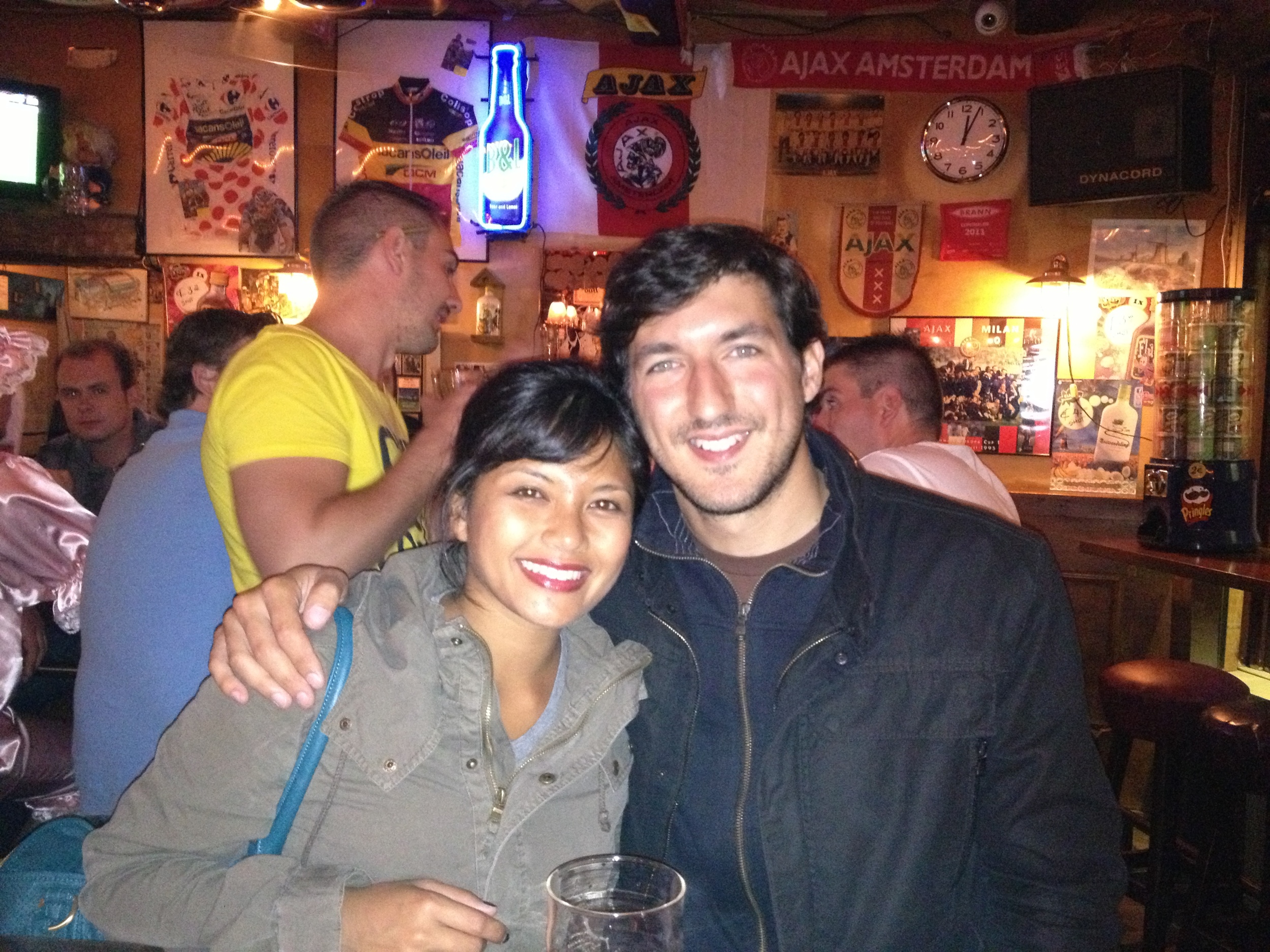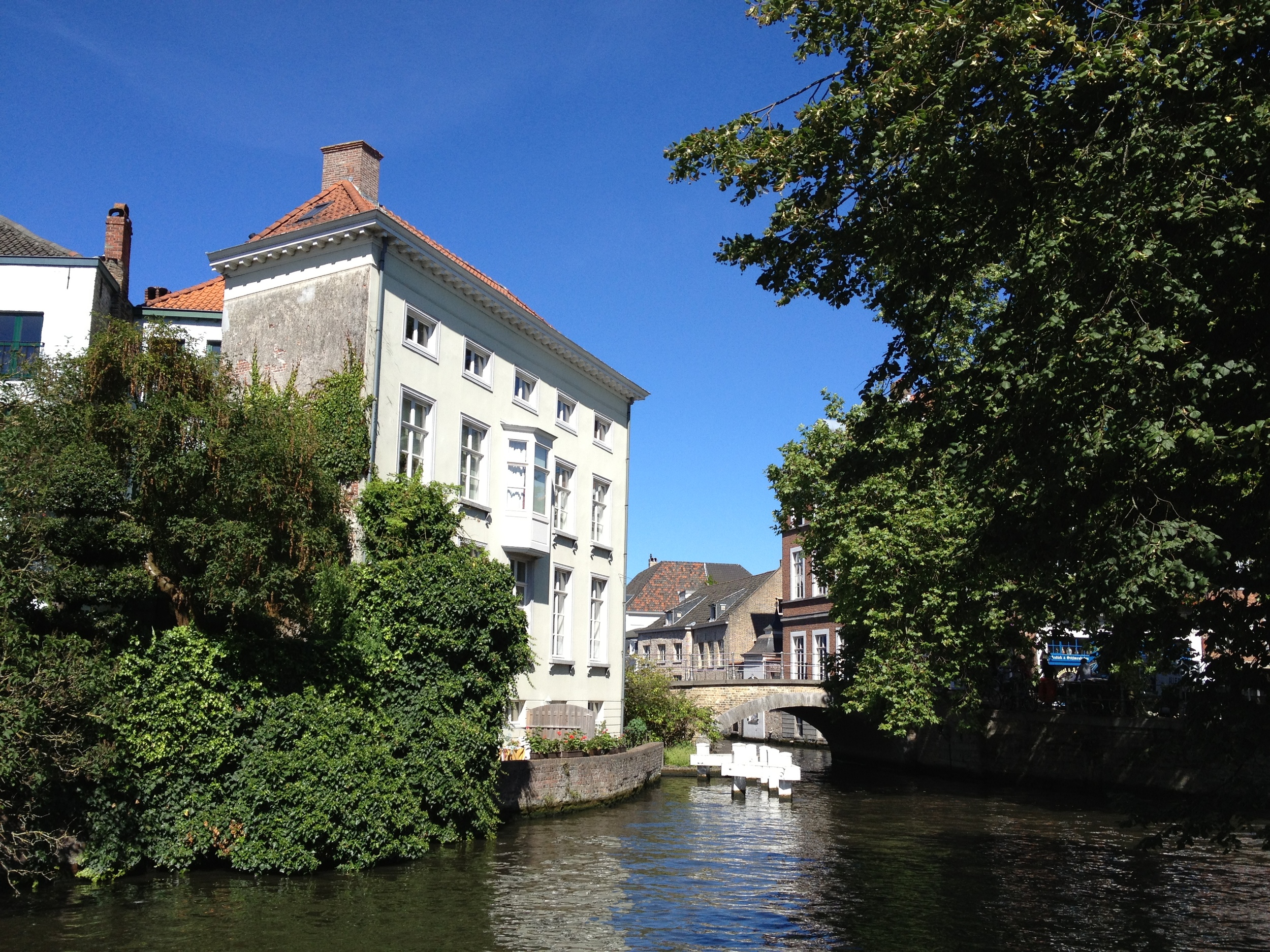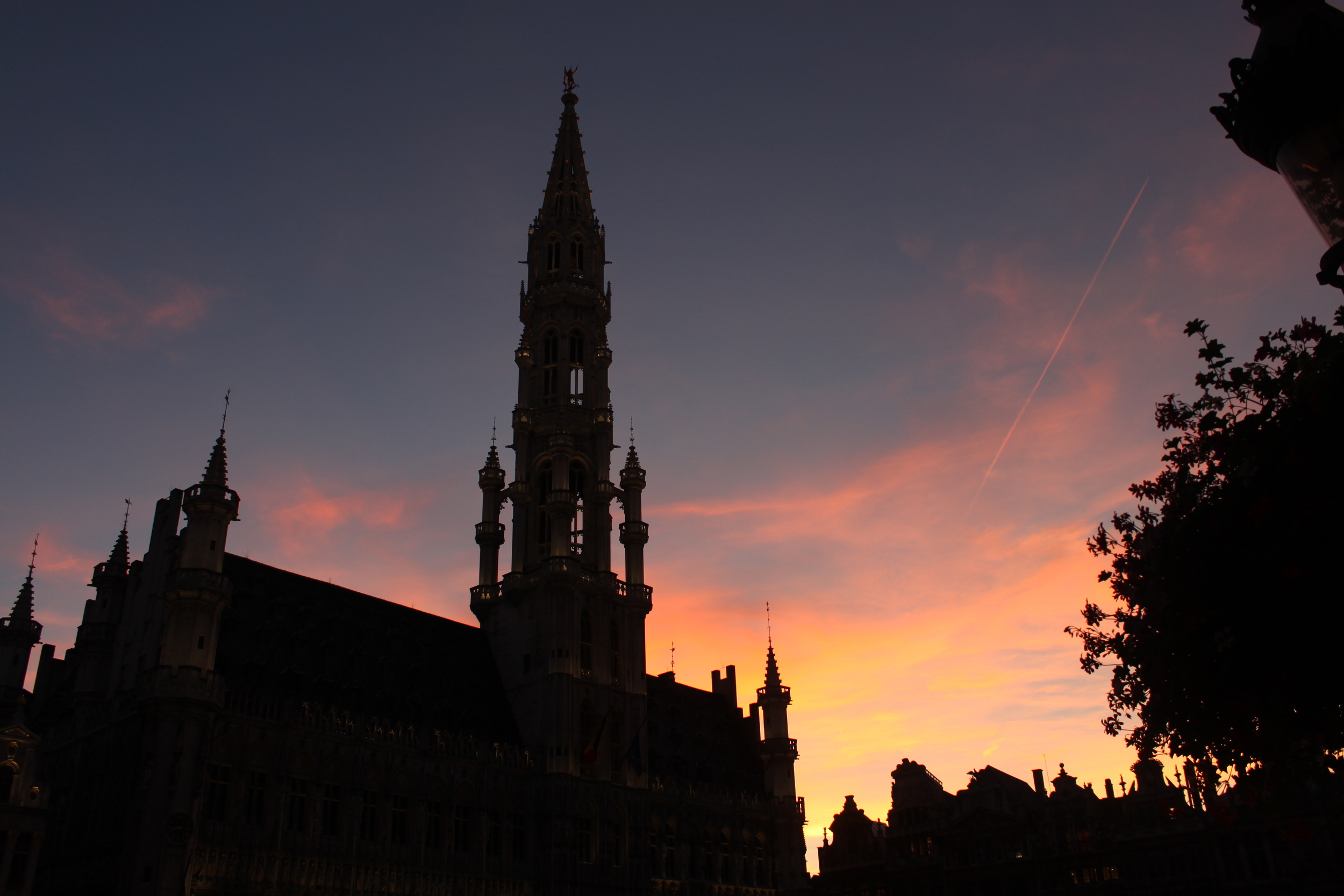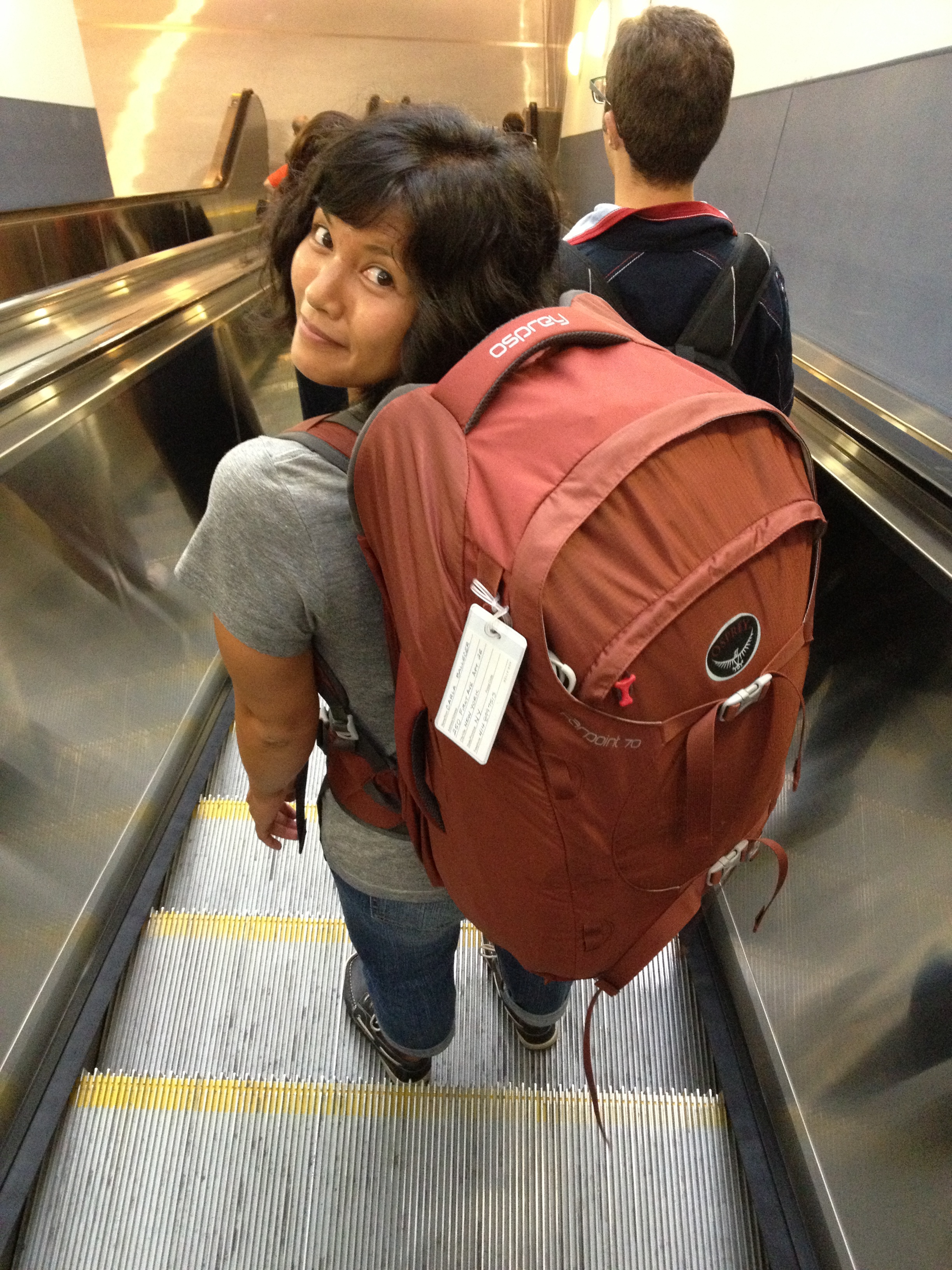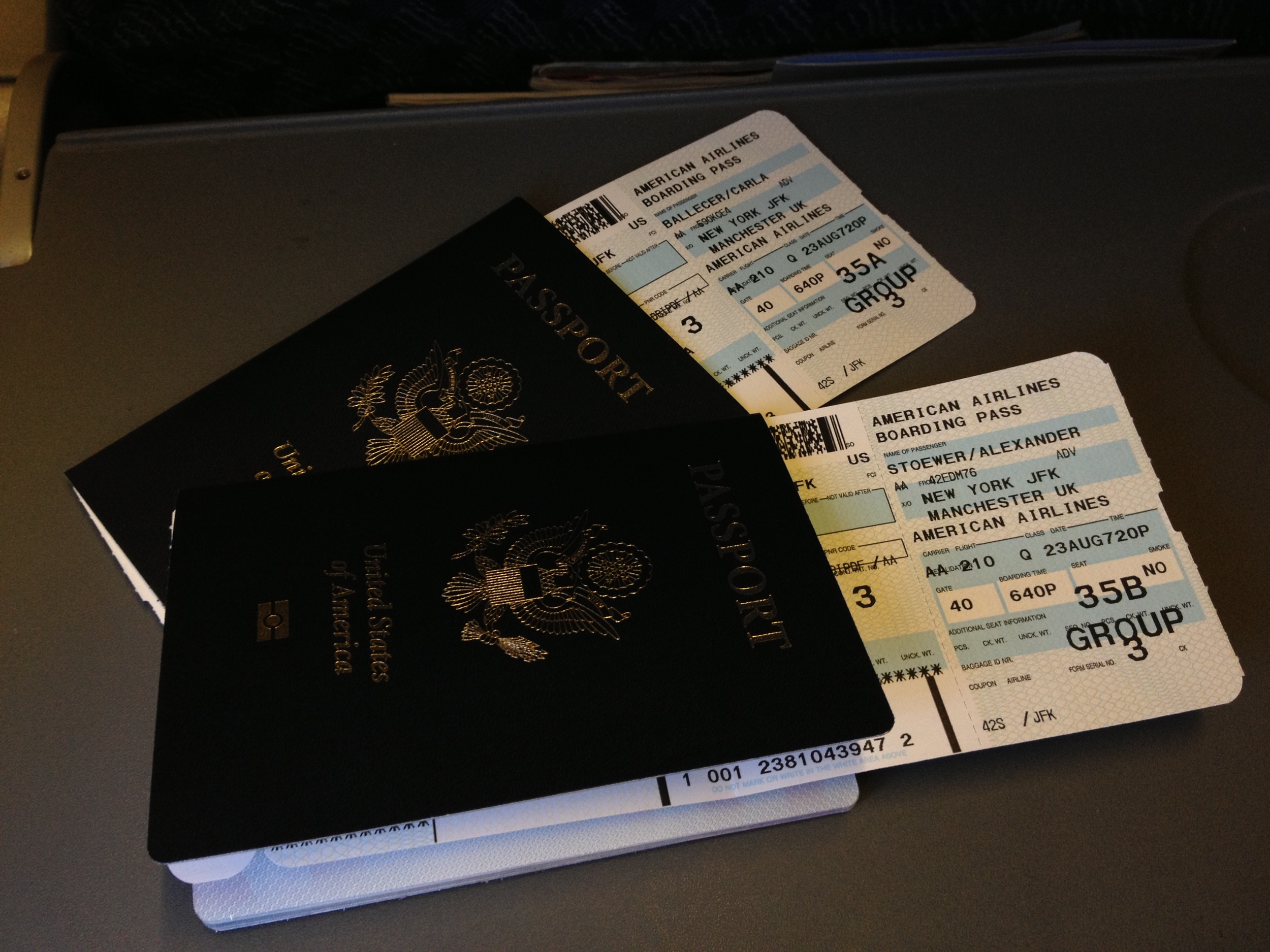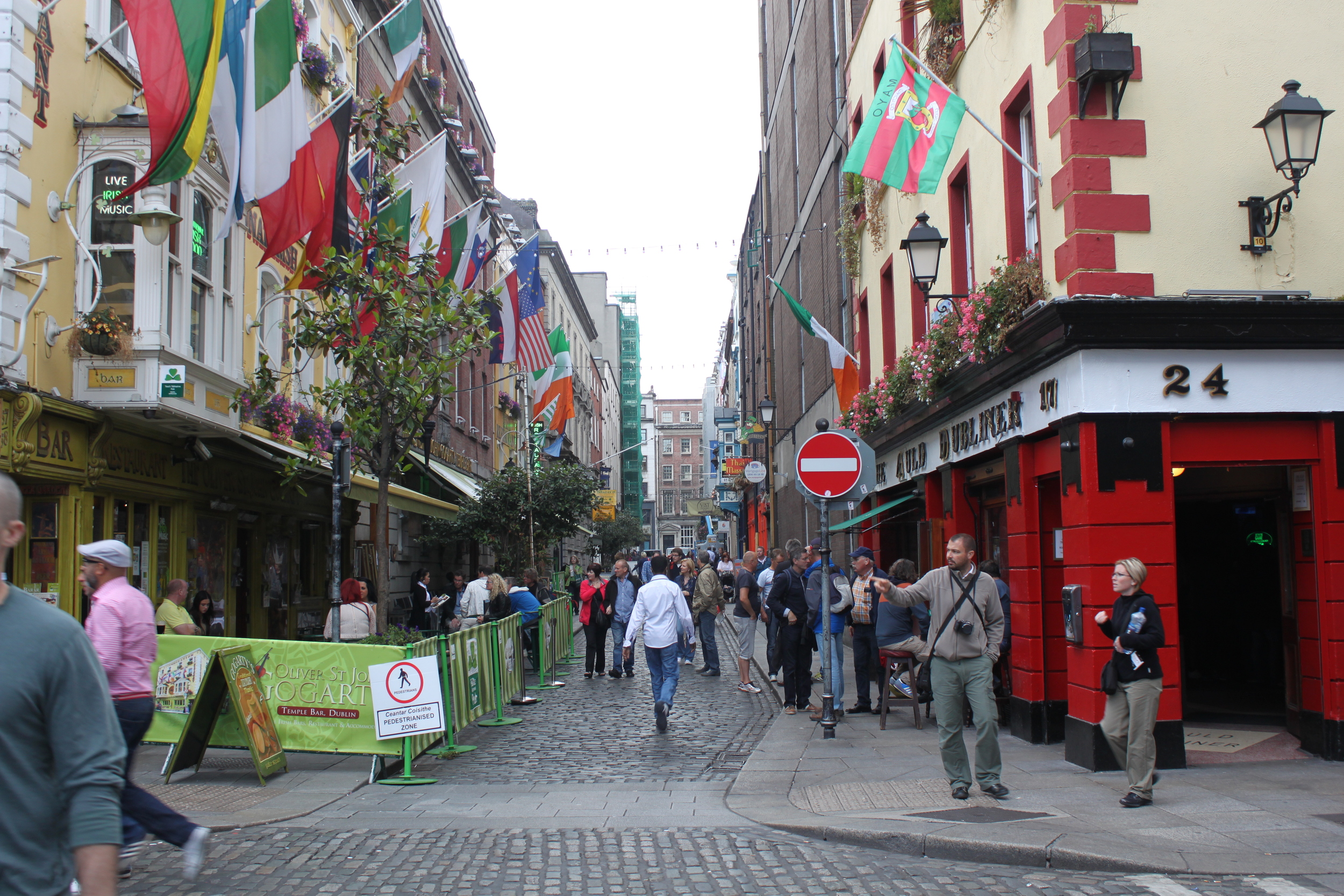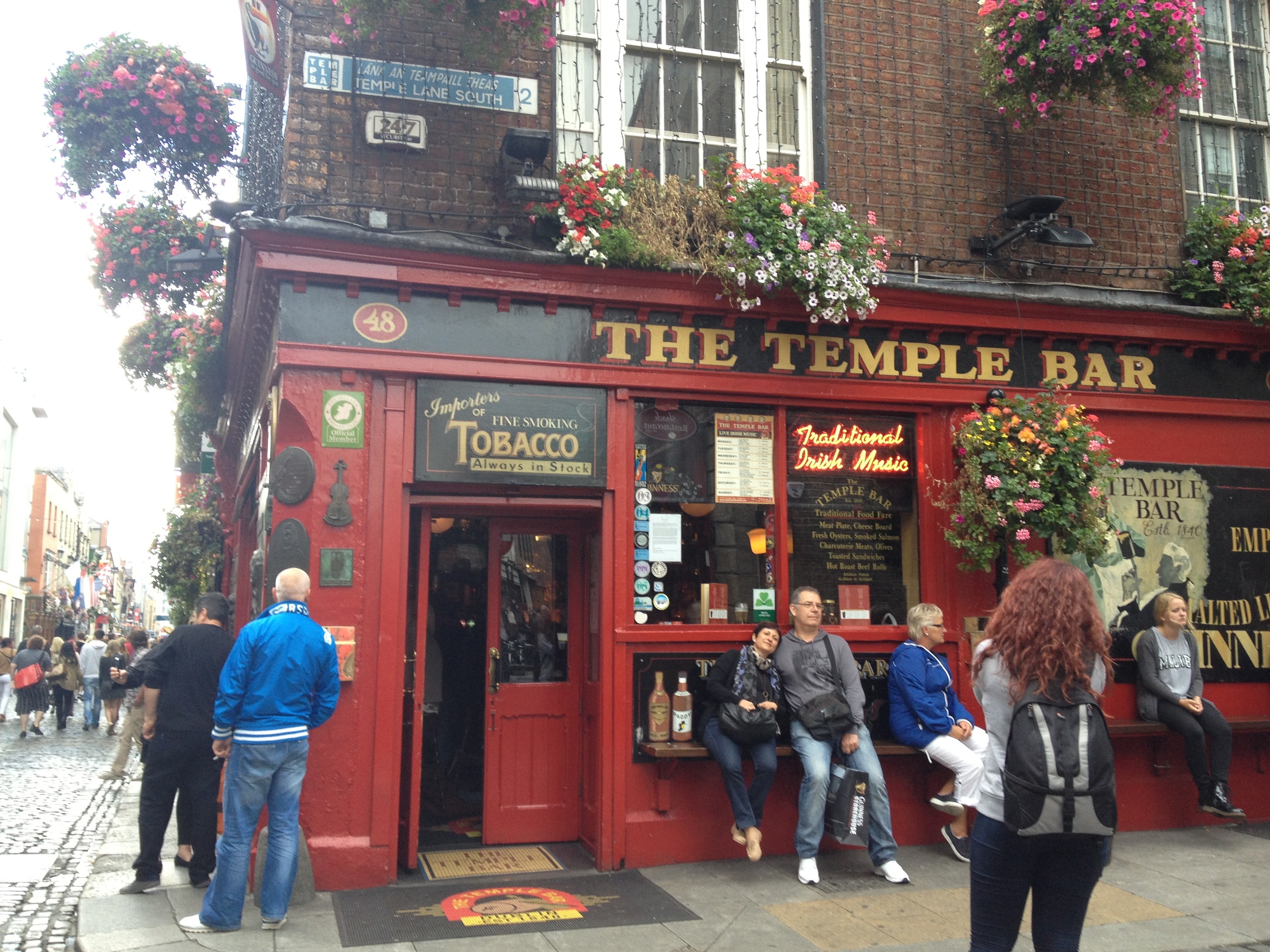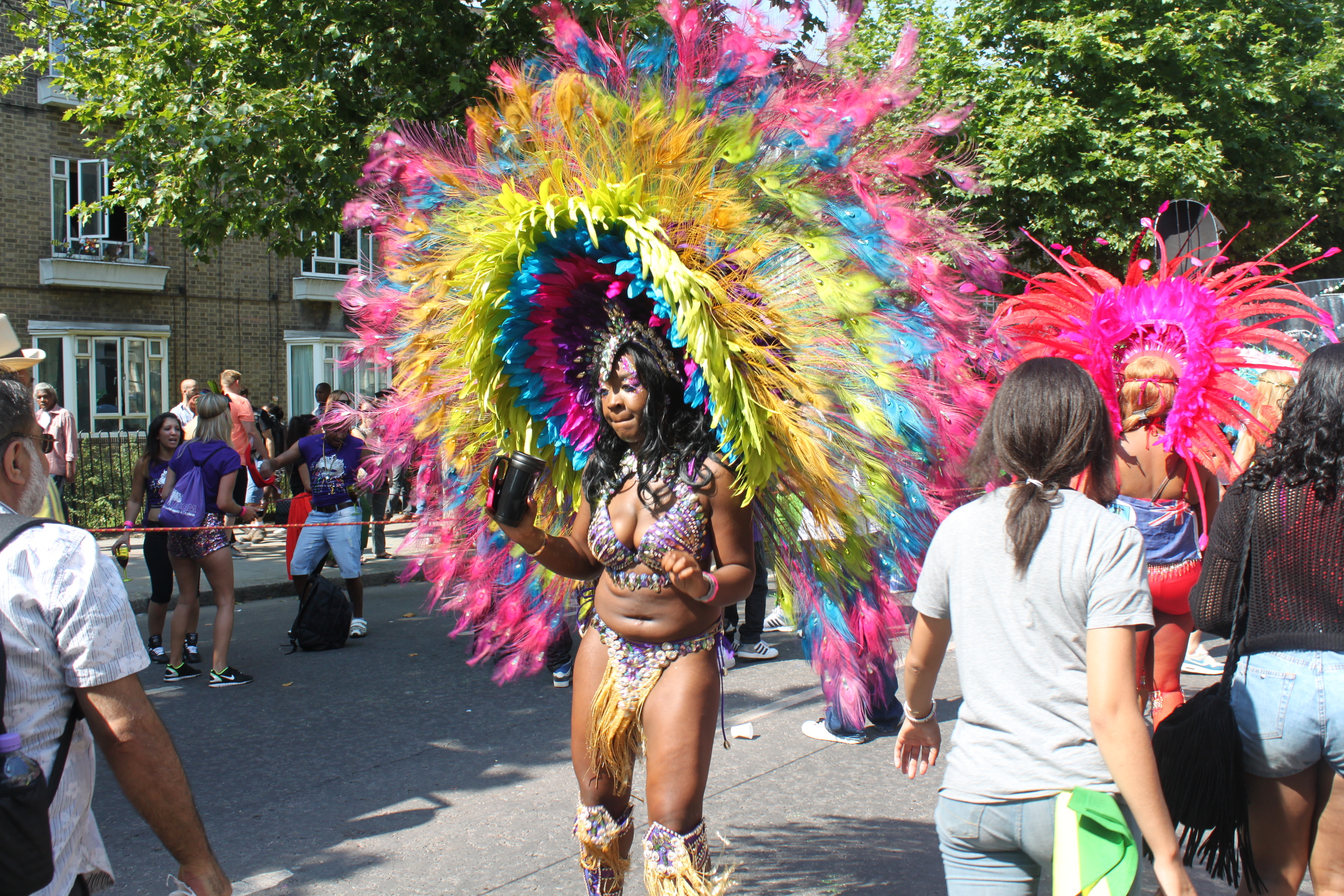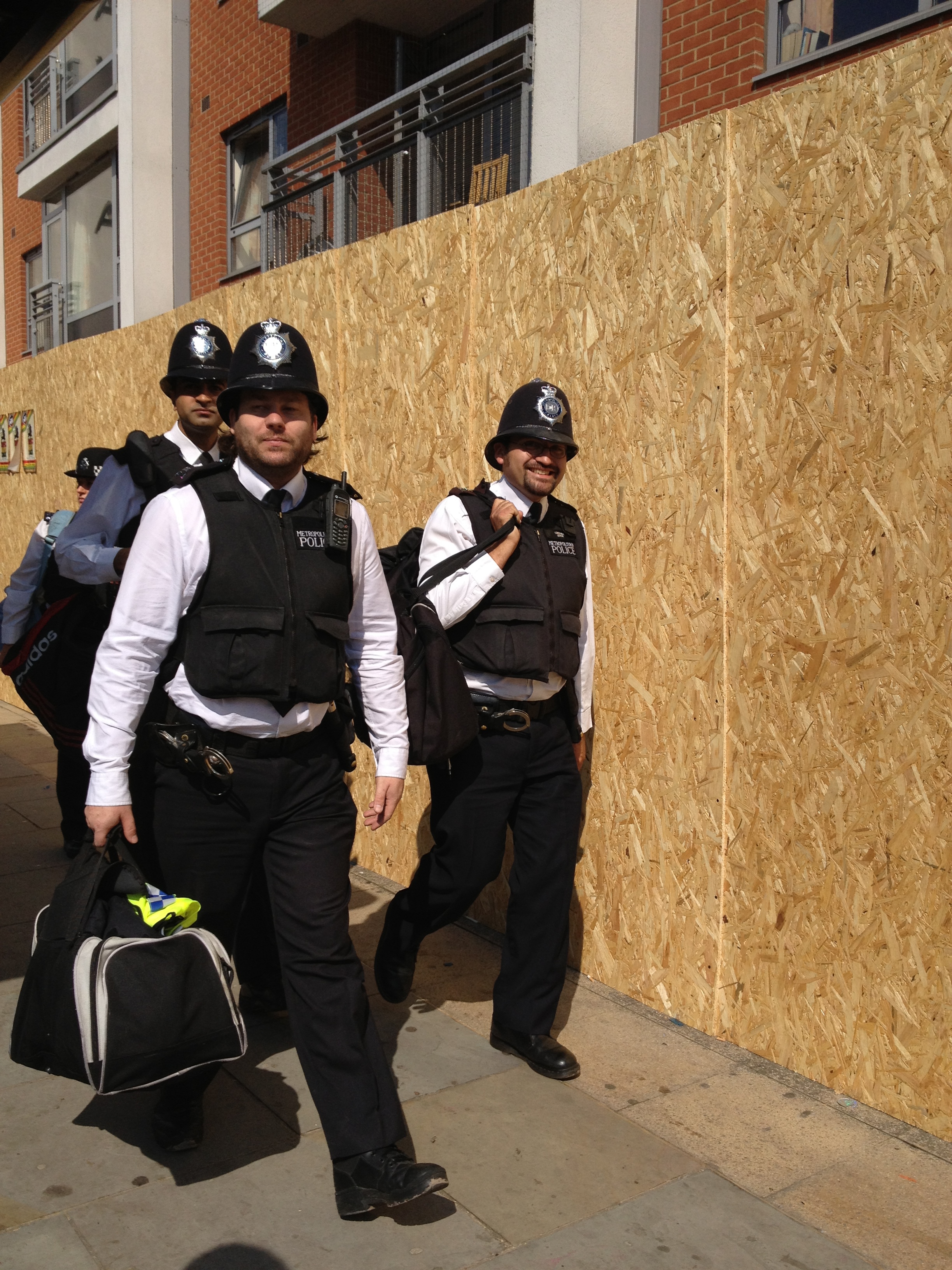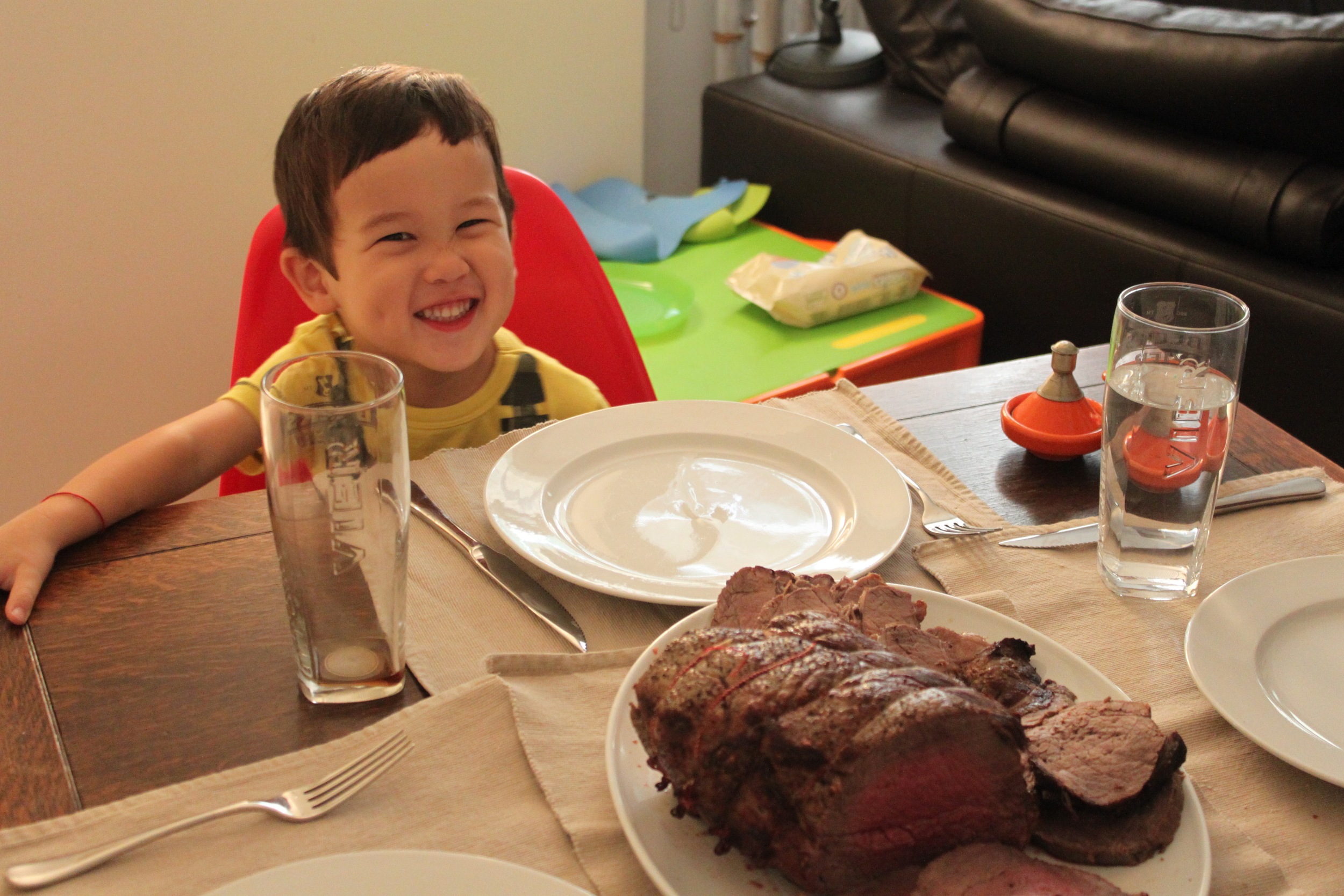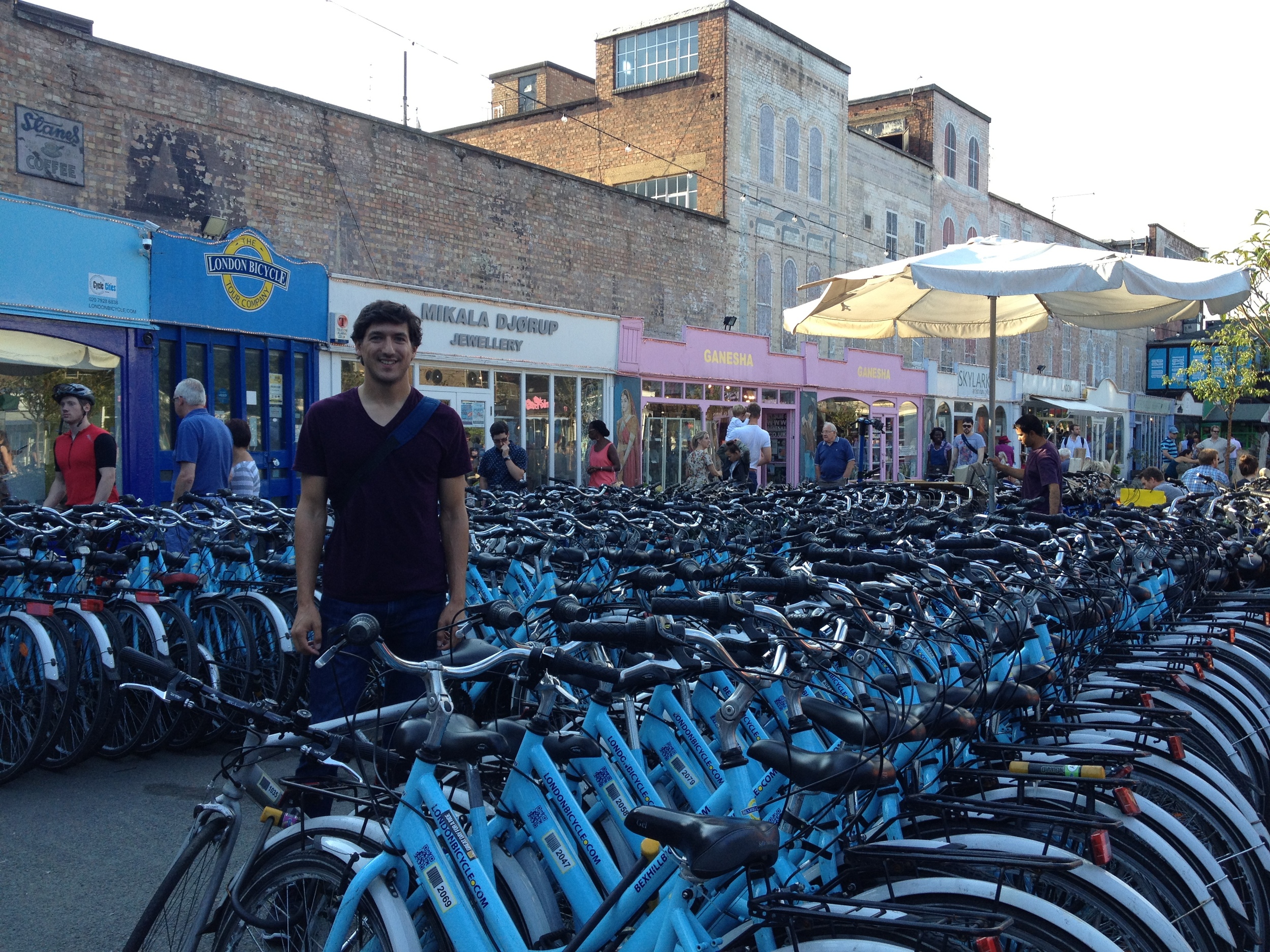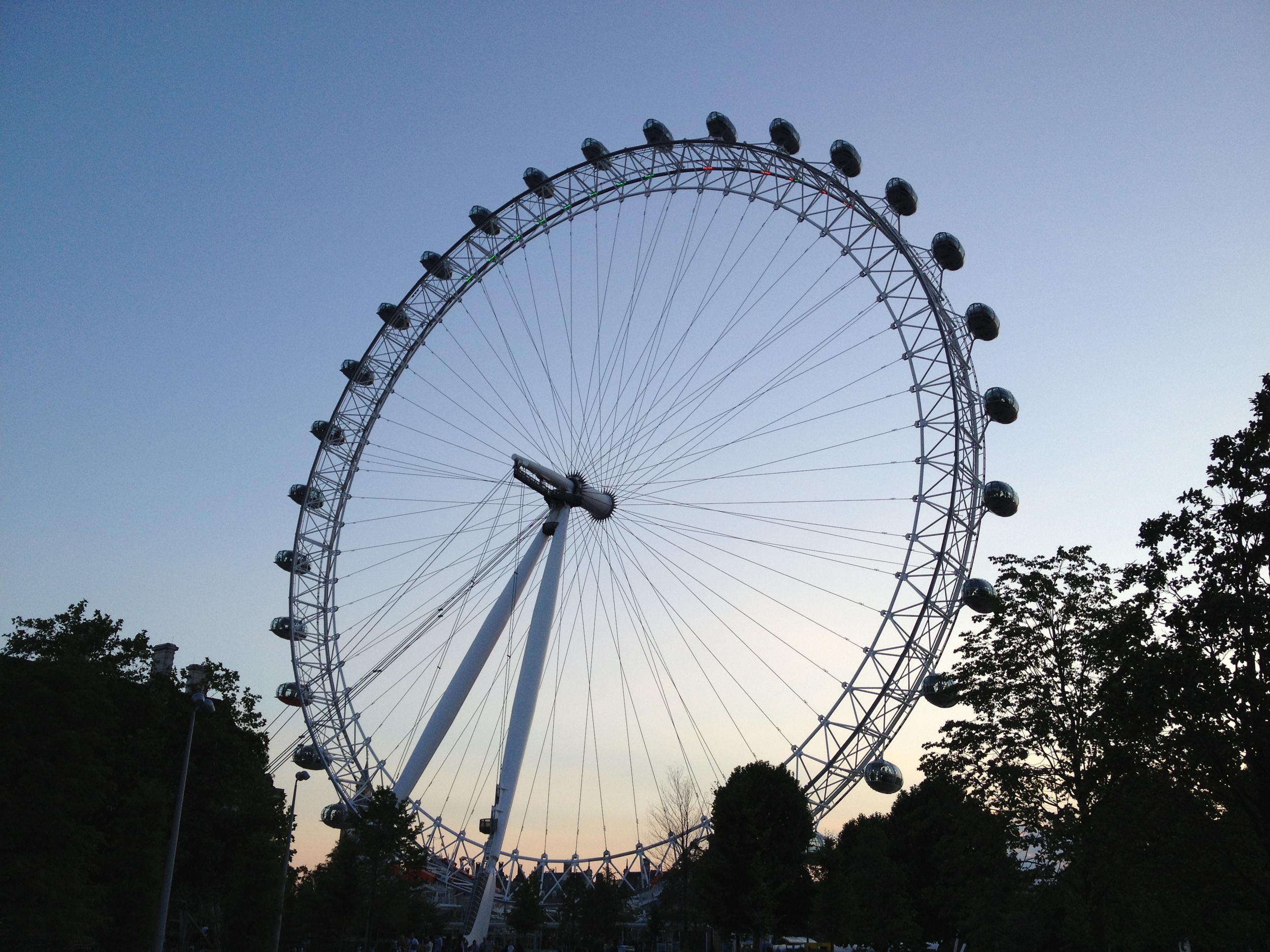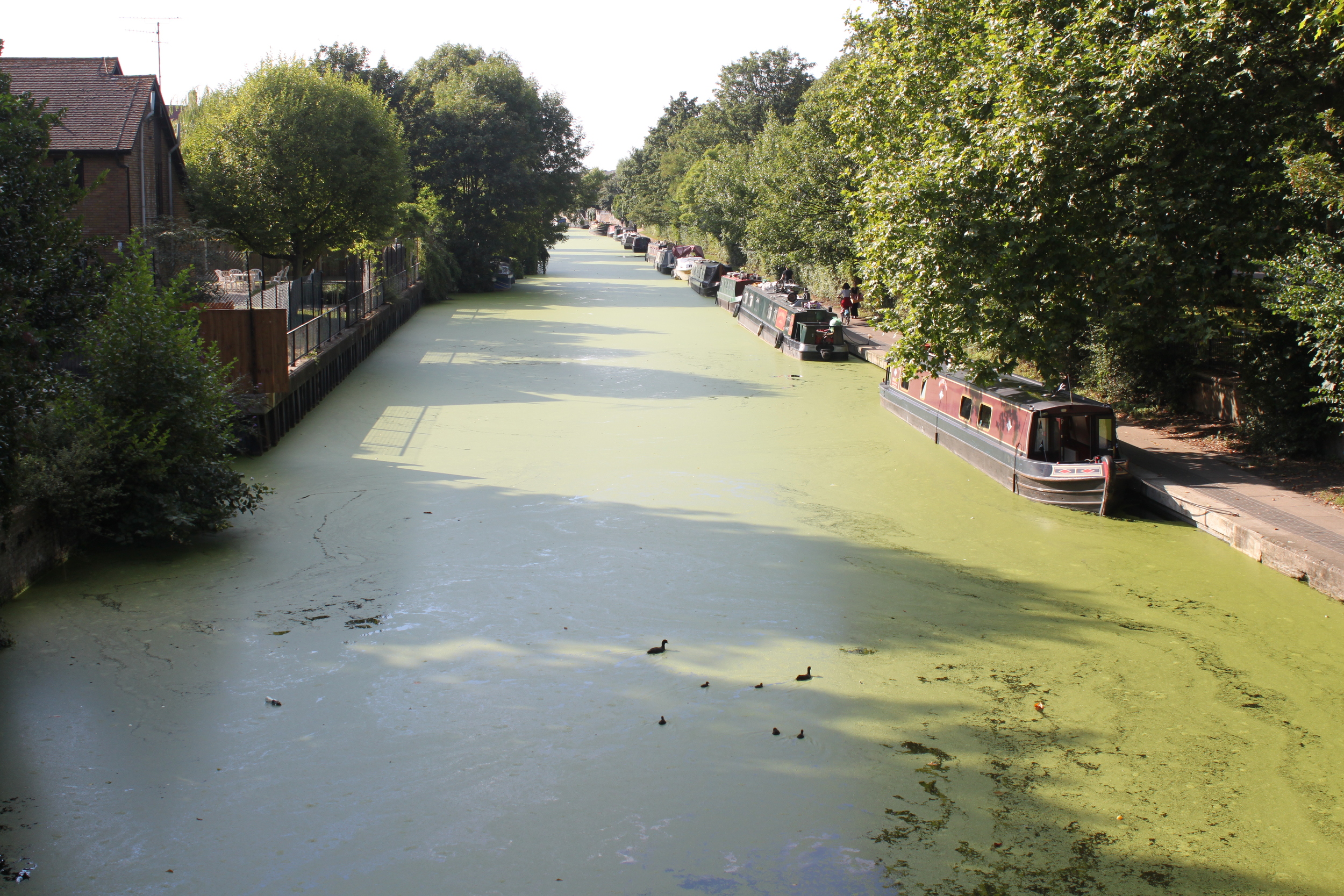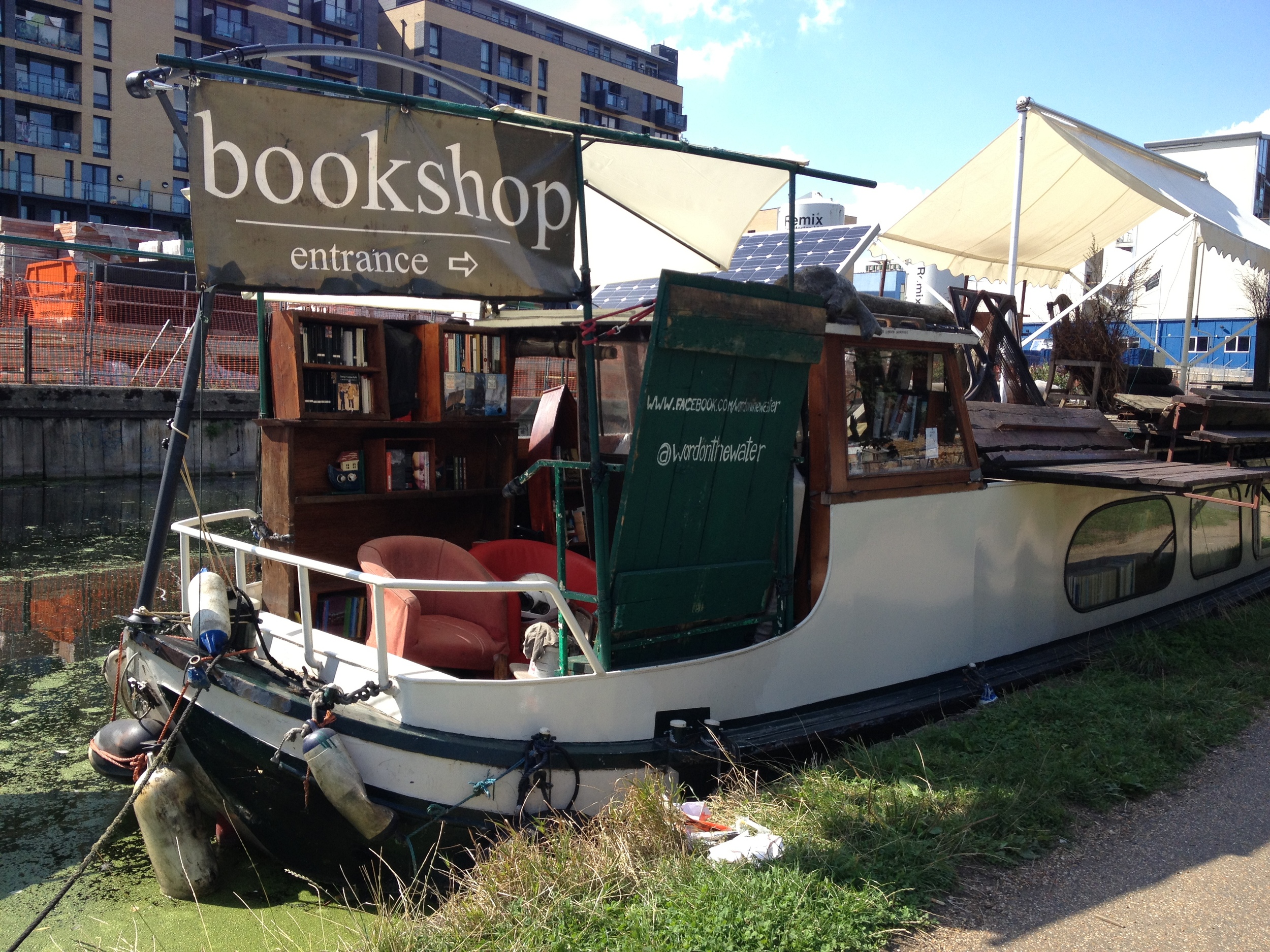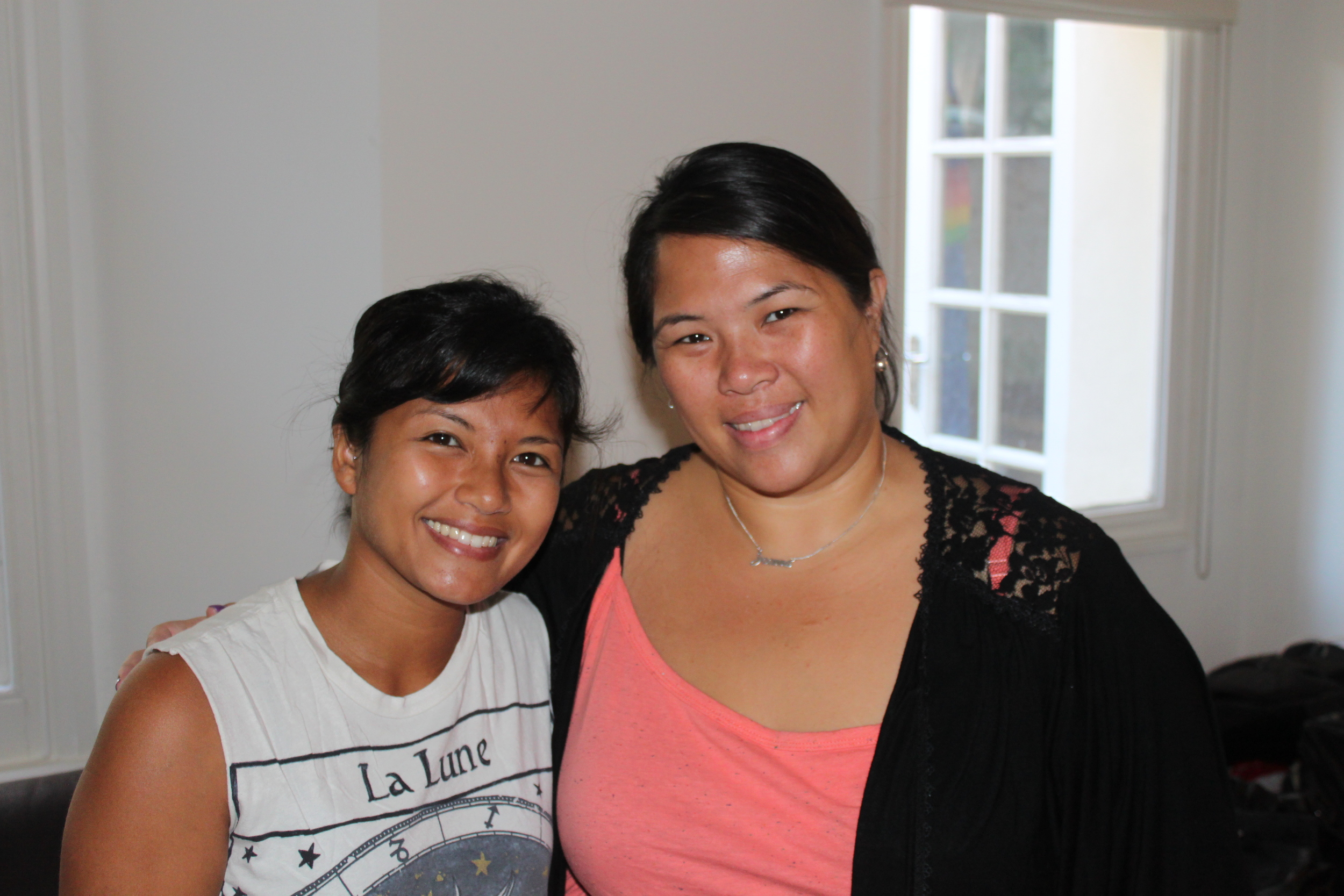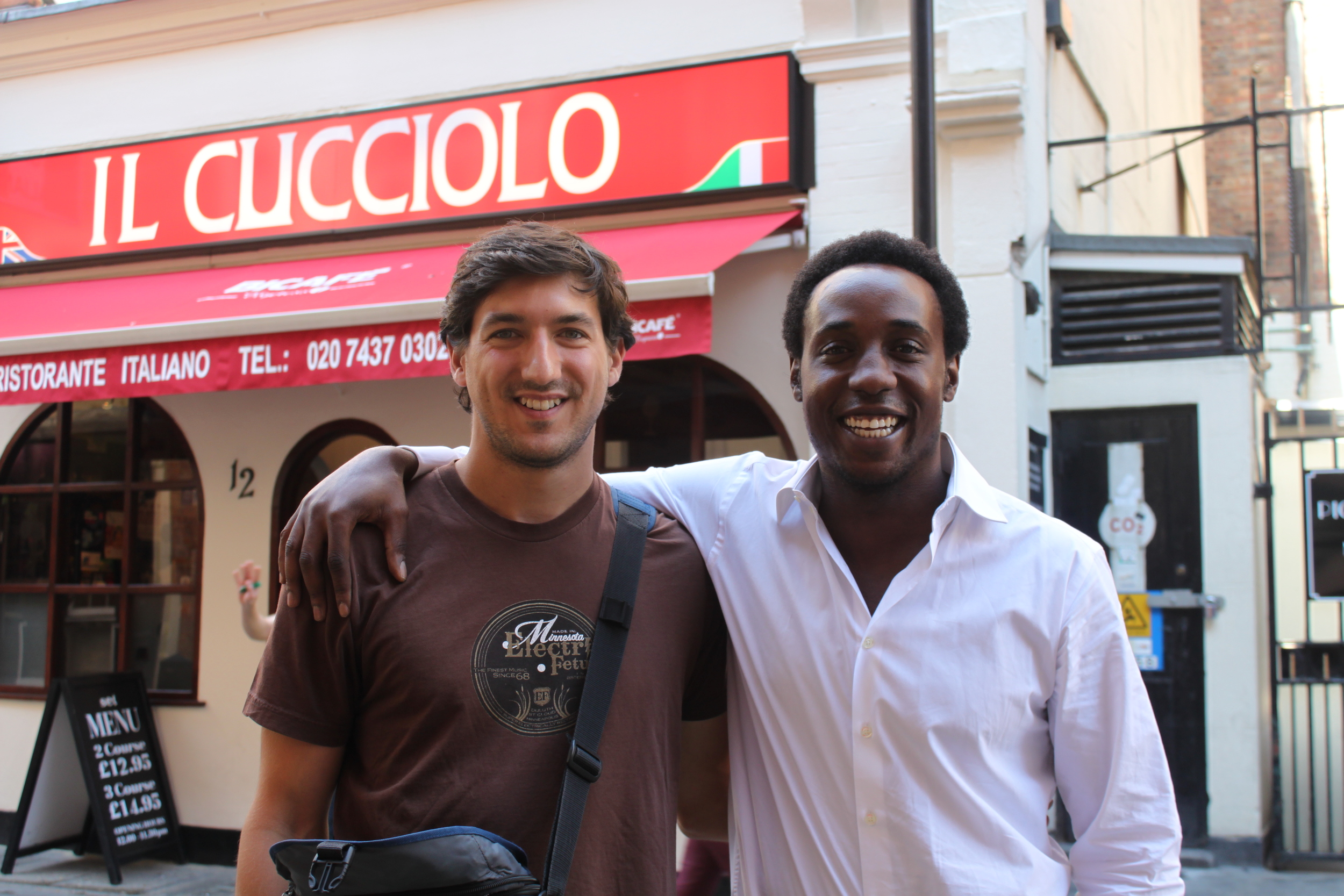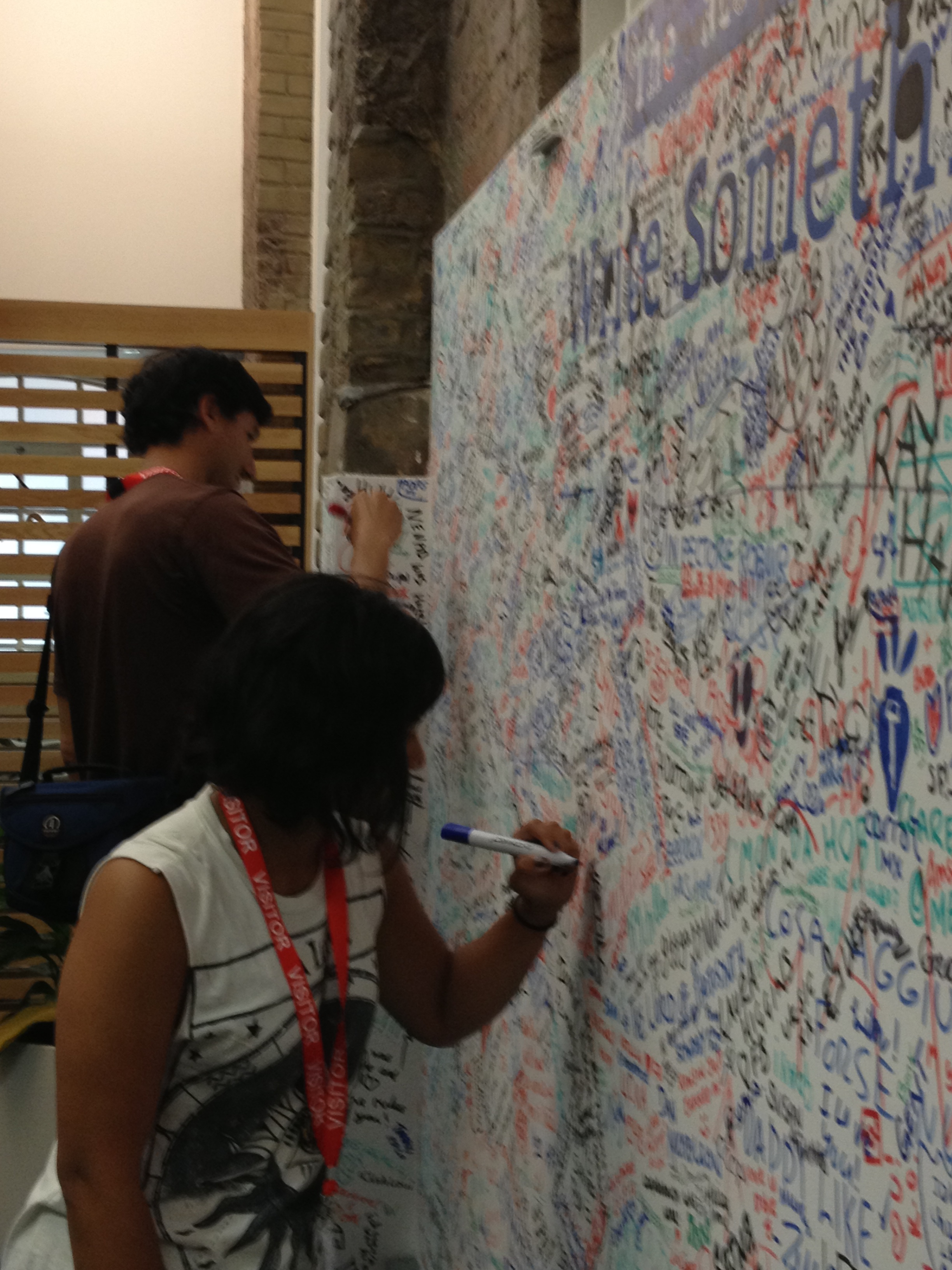prague, nuremberg and dublin
When we arrived in Prague on Friday evening we were reminded that winter was coming fast. We hadn’t been this far north since Belgium over five weeks ago and we regretted only bringing light jackets. Thankfully we weren’t in the cold long because our airbnb host, in what we discovered was typical Czech fashion, gave us extremely detailed directions to the apartment along with maps, train times, and costs in a 7-page word document.
We got to the apartment around dinnertime and were thoroughly impressed. We had a newly renovated studio apartment to call home for the next five nights, and the location was perfect. It was in a very cool up-and-coming neighborhood away from all the tourists that is probably something like the East Village in the early 1990s. There were tons of great little bars and restaurants in the area (some very nice and some sketchy) that made us feel like locals. On the other hand, I think there was a drug house a few doors down so we usually walked up from the west at night. The best part about the neighborhood was the architecture—the streets were lined with classic Czech pre-war apartment buildings that had fallen into disrepair and are presently being restored one by one. It was a treat to wake up in the morning and just walk around the area.
We asked our host to recommend a restaurant for us that we could walk to without freezing. He sent us to a place called Lavicka, and by the time we walked out of the restaurant we both wanted to move here. Lavicka was one of the nicer neighborhood restaurants, casual but high-quality, and it was amazingly cheap for how good it was. A delicious roasted duck dish with Czech dumplings and sides could be had for less than $10. It was the same story for the rest of our time in Prague—I don’t think we had a single disappointing meal.
The next morning we went down to Wenceslas Square to orient ourselves and see the more touristy old city. I tried to grab a quick bite at a sausage stand but the Czech sausage turned out to be a full meal for about $2.50. Fine with me. The long, thin plaza was lined with beautiful old buildings and a large museum on one end. It’s hard to imagine that nearly a half million people got together here to overthrow the communist regime in 1989. The nearby old city was a maze of centuries-old buildings that are interesting to see but are now filled with very touristy shops and restaurants. If you need a “Prague Drinking Team” T-shirt it’s never more than ten steps away. We still enjoyed walking around here, and especially liked walking along the river. The light rain and autumn colors made for a relaxing Saturday afternoon. That night we decided to pick up some absinthe (they sell the good stuff here) but it felt like liquid fire on the way down. I didn’t mind too much and Carla even managed a few drinks. We capped off the night by grabbing beers at an awesome little bar around the corner that only fit a couple dozen locals in their mid-20s, talking over dim wooden tables.
Speaking of beer, pivo is practically a way of life for Czechs. There are many types, from black to wheat to pilsner, but nothing too outlandish because the point is to drink it in quantity. They’re all good. All restaurants offer beer in small (11oz) or large (half liter) sizes, with the large going for a little over a buck. Men invariably order the large size and women often do as well. You’re likely to see plenty of guys drinking a large, strong beer any time of day, even at breakfast. After noon the beer flows freely and waiters will automatically bring you a new half liter whenever your glass is empty unless you go out of your way to tell them not to. You have to make it very clear that you’re done if you want to do much of anything after lunch.
We spent the rest of our time in Prague walking around the different neighborhoods and parks, admiring the baroque architecture and taking in the culture. The Vltava River is lined with tall, wooded hills on both sides, making Prague a particularly scenic city. Petrinske and Letenske parks were especially impressive, with forested areas and tree-lined walkways that reminded us of Central Park. When we got too cold there was always a cozy little café nearby where we could read or work on the blog.
Our timing was also very lucky because Carla’s friend Sally, who we visited in Portland in July, happened to be at a wedding in Germany that same week. She and her girlfriend Emili were in Frankfurt so we decided to meet halfway in Nuremberg on Monday. This would also give us a chance to see the autumn Czech countryside and experience the German Autobahn first hand. After some struggles extricating ourselves from Prague in morning rush hour we were zipping through the hills of western Bohemia. Unfortunately it was a little foggy but the country was still beautiful. We met Sally and Emili at an authentic beer hall called Hutt’n and enjoyed some delicious Bavarian beers and Nuremberg sausage goulash. The four of us spent the afternoon wandering around the old city and checking out its uniquely German streets and plazas. The impromptu meeting in Germany was a very pleasant surprise.
The most memorable part of the day might have been the drive home, but for all the wrong reasons. First we accidentally took a wrong turn on the Autobahn, which funneled us into some stoplight-ridden town well south of where we wanted to be. When we finally got on the right track, we would have to race against the clock to make it back to Prague before the rental car place closed. But it was the Autobahn after all, meaning the speed limit wasn’t as much of an issue as the little rental’s horsepower. We knew we needed gas but figured there would be plenty of gas stations through this rural but well-developed area. As we drove through eastern Bavaria and night fell the gas tank dipped lower and lower. We must have went 70 km without seeing a gas station and we started to get very nervous. With 15 km left in the tank we pulled off the highway thinking that the next little town must have a gas station somewhere. We wound our way through a very old hillside village at dusk with no luck. All thoughts of getting the car back on time were out the window—we just didn’t want to be stranded on the road overnight in Germany. To make matters worse, we were not supposed to have taken the car out of the Czech Republic (shhh). We found a lone man on the street who gave us somewhat complicated directions to a gas station that was still open in a different town. The gauge said we had 12 km left in the tank and the town was 8 km away—one (more) wrong turn would have meant game over. But we finally had luck on our side and the little Skoda made its final push into the gas station. The cherry on top was that the rental place stayed open an extra hour. We threw the keys to our smiling attendant and headed home, ready for a good night’s sleep.
As much as any other city we’ve visited, Prague captured our hearts. It’s a city with a rich and varied history that is still pulling itself out of the shadow of communism while keeping its socially progressive legacy. I now understand a little better where the adjective “bohemian” comes from. Prague is a place for intimate conversations over pivo, often times with pot smoke in the air (it’s practically legal here), and strong political views. Just ask the artist who floated a giant middle finger statue down the river on a barge shortly after we left, pointed at the president's office.
Wednesday morning we packed up and caught our flight to Dublin, where we would spend our last night in Europe. We were both pretty sad that the first overseas chapter of our pretirement was over with, so we consoled ourselves with some cold Guinness at a popular little pub near Trinity College. At the same time, were looking forward to getting our feet back on US soil and spending a week in our own home.
// total eurotrip: 14 flights, 5 buses, 6 trains, 4 ferries, 4 road trips, 14 countries



